Category: International Policies & Schemes
Relation between China-Central Asia and India
24, Apr 2023
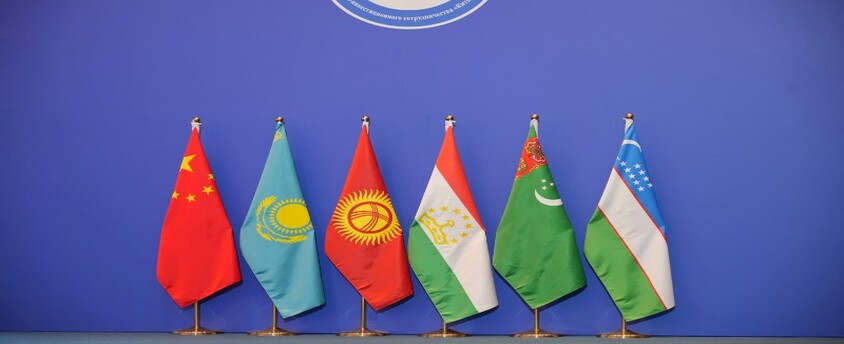
Why in News?
- China convened a meeting (online) of trade ministers of the grouping known as C+C5.
About C+C5:
- It constitutes China and the five Central Asian republics, namely Uzbekistan, Kazakhstan, Tajikistan, Turkmenistan, and Kyrgyzstan.
China and Central Asia:
- China shares a long history of trade, culture, and people-to-people links with the Central Asian region, which lies on the ancient Silk Route.
- Modern China’s involvement with the region began with the break-up of the Soviet Union in 1991.
- Diplomatic relations were established in 1992, and China’s relationship with the region was institutionalised as the Shanghai Five, the forerunner of the Shanghai Cooperation Organisation (SCO).
Benefits for China:
- Central Asia is a readymade market for cheap exports and gave China overland access to markets in Europe and West Asia.
- The region is resource-rich, with massive gas and oil reserves, and strategic minerals such as uranium, copper, and gold.
- China also had another priority in its relationship with these countries – to ensure peace in Xinjiang Autonomous Region, which forms its frontier with Central Asia.
- The BRI plays a critical role as a transit hub for China’s trade with Europe.
Benefits for C5:
- Chinese investments helped to upgrade Soviet-era infrastructure and carry out development works in these countries.
- President Xi launched his Belt and Road Initiative (BRI), a modern version of the Silk Road, during his 2013 visit to the Kazakh capital Almaty.
- Beijing has also pumped billions of dollars in investments that cover projects from oil and gas exploration, rail, road and seaport connectivity to digital technologies and green energy.
- Access to the Pacific Ocean and East Asia to the landlocked region.
- China, unlike the West, asks no questions about their governance or human rights record.
Friction points between China and Central Asia:
- Beijing’s targeting of the Muslim population of Xinjiang has triggered resentment in these countries, where Islam is the principal religion.
- The increasing presence of Chinese workers and rapid land acquisitions by China in these countries has led to public protests.
China’s ‘Grand Plan’ for Relations:
- The region is economically dependent on Russia, which is also Central Asia’s net security provider.
- Russia’s trade with these countries has increased over the last year, as it attempts to find substitutes for imports from Europe.
- Russia also has a huge migrant population of Central Asians who bind the region to it in economic dependency.
- Russia and China are now competing for the title of the top trading partner in the area. The trade between China and the five countries reached $70.2 billion last year.
- Beijing is making use of Russia’s preoccupation in Ukraine to push Moscow out of its own strategic backyard.
- The Ukrainian invasion has given rise to fears (among Central Asian countries) that a security relationship with Moscow could prove to be a double-edged weapon.
India and Central Asia:
- While India has trading ties with these countries, it is hindered by the absence of a land route to Central Asia, with Pakistan denying its passage and Afghanistan being uncertain territory after the Taliban takeover.
- The Chabahar port in Iran offers an alternative route, but it is not fully developed yet.
- Also, India’s relationships in the region (including in the SCO) remain security-driven.
- There have been suggestions that India should provide connectivity for people and trade in Central Asia through “air corridors”, as it had done for Afghanistan.
- As a first, New Delhi made its biggest outreach to Central Asia, when the PM of India hosted a virtual summit of the C5 last year.
- New Delhi’s leadership of the SCO this year may provide it with an opportunity to diversify relations with this strategic region.
GLOBAL NUTRITION REPORT – 2020
13, May 2020
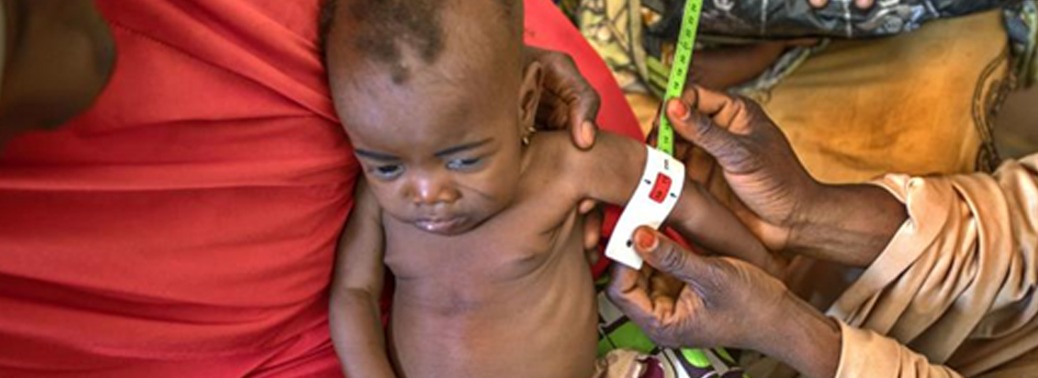
Why in News?
- According to the Global Nutrition Report 2020 which was released recently, India is among 88 countries that are likely to miss Global Nutrition Targets by 2025.
About the Report:
- This report has been produced by the Independent Expert Group of the Global Nutrition Report, supported by the Global Nutrition Report Stakeholder Group.
- The Global Nutrition Report was conceived following the first Nutrition for Growth Initiative Summit (N4G) in 2013. The first report was published in 2014.
- The Global Nutrition Report acts as a report card on the world’s nutrition—globally, regionally, and country by country—and on efforts to improve it.
- It assesses progress in meeting Global Nutrition Targets established by the World Health Assembly.
- The World Health Organization (WHO) is a Global Nutrition Report Partner.
What was the Target?
- In 2012, the World Health Assembly identified six nutrition targets for maternal, infant and young child nutrition to be met by 2025.
- These require governments to reduce stunting by 40% in children under 5 and prevalence of anaemia by 50% among women in the age group of 19-49 years, ensure 30% reduction in low-birth weight and no increase in childhood overweight, increase the rate of exclusive breastfeeding in the first six months up to at least 50% and reduce and maintain childhood wasting to less than 5%.
Key Findings of the Report:
- According to the Global Nutrition Report 2020, India will miss targets, for all four nutritional indicators for which there is data available, i.e. stunting among under-5 children, anaemia among women of reproductive age, childhood overweight and exclusive breastfeeding.
- The Report has identified the country as one with the highest rates of domestic inequalities in malnutrition.
- Between 2000 and 2016, rates of underweight have decreased from 66.0% to 58.1% for boys and 54.2% to 50.1% in girls. However, this is still high compared to the average of 35.6% for boys and 31.8% for girls in Asia.
- In addition, 37.9% of children under 5 years are stunted and 20.8% are wasted, compared to the Asia average of 22.7% and 9.4% respectively.
- One in two women of reproductive age is anaemic, while at the same time the rate of overweight and obesity continues to rise, affecting almost a fifth of the adults, at 21.6% of women and 17.8% of men.
Addressing Inequity and Malnutrition:
- The report emphasises on the link between malnutrition and different forms of inequity, such as those based on geographic location, age, gender, ethnicity, education and wealth malnutrition in all its forms.
- “Inequity is a cause of malnutrition — both under-nutrition and overweight, obesity and other diet-related chronic diseases.
- Inequities in food and health systems exacerbate inequalities in nutrition outcomes that in turn can lead to more inequity, perpetuating a vicious cycle.
- Malnutrition refers to deficiencies, excesses or imbalances in a person’s intake of energy and/or nutrients.
- It is often Split into two Broad Groups of Conditions:
- Under nutrition, including stunting (low height for age), wasting (low weight for height), underweight (low weight for age) and micronutrient deficiencies or insufficiencies (a lack of important vitamins and minerals).
- Overweight, obesity and diet-related non-communicable diseases (heart disease, stroke, diabetes, cancer, etc.).
- In April 2016, the United Nations General Assembly adopted a resolution proclaiming the UN Decade of Action on Nutrition from 2016 to 2025.
- The Sustainable Development Goal (SD Goal 2: Zero hunger) aims to end all forms of hunger and malnutrition by 2030, making sure all people – especially children – have access to sufficient and nutritious food all year round.
- This involves promoting sustainable agricultural practices: supporting small scale farmers and allowing equal access to land, technology and markets.
What are the Concerns?
- India is identified as among the three worst countries, along with Nigeria and Indonesia, for steep within-country disparities on stunting, where the levels varied four-fold across communities.
- Stunting level in Uttar Pradesh is over 40% and their rate among individuals in the lowest income group is more than double those in the highest income group at 22.0% and 50.7%, respectively.
- In addition, stunting prevalence is 10.1% higher in rural areas compared to urban areas.
- The same applies for overweight and obesity, where there are nearly double as many obese adult females than there are males (5.1% compared to 2.7%).
Way Forward:
- The Global Nutrition Report 2020 finds again that the problem of malnutrition remains severe across all regions and none of the countries are on course to meet all nine global nutrition targets.
- Malnutrition is responsible for more ill-health than any other cause. The health consequences of being overweight and obese contribute to an estimated four million deaths globally.
- It clearly projects that strong commitments should be designed for impact which can be continuously monitored and deliver to end malnutrition in all its forms.
CURRENCY CHANGE IN IRAN
09, May 2020

Why in News?
- Iran has recently planned to re-name and re-value its currency.
About the News:
- Long called the rial, Iran’s money will soon likely be called the Toman, and an impressive four zeros will be shaved off all denominations.
- What was previously 10,000 rials will become one Toman under the plans.
What’s the Issue?
- Iran has seen the value of its national currency decline steadily since the Islamic Revolution brought the religious government to power in 1979. That drop has accelerated in recent years as harsh US sanctions battered the country’s economy.
- The currency has been devalued 3,500 times since 1971. It declined steadily since the Iranian Revolution, 1979 brought the religious government to power.
The Devaluation of the Rial has been Marked by four Key Turning Points:
- The Islamic Revolution of 1979:When the government of the Western-allied Shah collapsed and an ideological cadre of mullahs took over, many entrepreneurs and business moguls left the country for fear of persecution, and they took their wealth with them.
- The end of the Iran-Iraq war in 1989: It took Iran almost eight years to rebuild its shattered economy, during which time the rial lost almost 100% of its value compared to the US dollar thanks to rampant inflation and the unchecked printing of cash.
- Last years of hard-line President Mahmoud Ahmadinejad’s tenure: Before he left power in 2013, Iran was slammed with severe international sanctions that saw the rial haemorrhage almost 400% more of its value on global currency markets.
- The last major turning point, which is still playing out, came when President Donald Trump pulled the U.S. out of the nuclear deal. It was like an electric shock that sizzled through every aspect of Iran’s already Beleaguered Economy.
- The rial’s plunge has continued, leaving it almost 600% weaker against the US dollar than it was before the Revolution.
What Else Contributed to this Crisis?
- Iran has faced a litany of financial disasters since 1979, including international sanctions that have severely limited its ability to sell oil, which in turn have all but dried up its primary source of revenue.
- The government has also implemented strict rules on access to foreign currency, leading to a flourishing black market for non-Iranian cash inside the country and further eroding the value of the national currency.
- The global pandemic has piled even more stress onto the lives of people already bludgeoned by a White House bent on ramping up maximum pressure on Iran.
What are the Implications of the Latest Move?
- If implemented carefully and as part of wider Financial Reforms, Redenomination would be a positive move but hardly an answer for all the country’s intertwined economic woes.
- However, it was a necessary action to simplify Financial Transactions.
- It would vastly simplify financial calculations by eliminating the need for Iranian shoppers to carry loads of rials to make purchases, which they have to do because of inflation.
PM SLAMS PAKISTAN IN VIRTUAL NAM SUMMIT
05, May 2020

Why in News?
- PM Narendra Modi made an indirect reference to Pakistan during an online meeting of the Non Aligned Movement (NAM) Contact Group, and said some countries were fomenting terrorism in the midst of the global coronavirus pandemic.
Significance of the Meeting:
- This is the first time PM Modi is taking part in a NAM meeting since taking 2014 when he first became the Prime Minister. The last time any Indian PM participated at Tehran NAM meet was 2012 with the then PM Man Mohan Singh was present.
- Both in 2016, 2018 summits of NAM, India was represented at Vice President Level. The last NAM Summit happened in 2019 in Azerbaijan, before that it was 2016 in Venezuela.
- Azerbaijan is the president of the grouping from 2019-2022 and the meet is being organised under the leadership of President of Azerbaijan Ilham Aliyev. The title of the summit is “We stand together against COVID-19”.
Highlights of the Summit:
- Prime Minister Modi highlighted India’s constructive role in dealing with the COVID-19 pandemic and said India has been carrying out “disaster management drills” while other countries had been organising military drills.
- He said the post-COVID-19 world order should be more representative. “The post-COVID world needs a new template for globalisation,” urging reform in international organisations.
- The summit leaders adopted a declaration underlining the importance of international solidarity in the fight against COVID-19.
What is Non- aligned Movement?
- The Non-Aligned Movement was formed during the Cold War as an organization of States that did not seek to formally align themselves with either the United States or the Soviet Union, but sought to remain independent or neutral.
- The basic concept for the group originated in 1955 during discussions that took place at the Asia-Africa Bandung Conference held in Indonesia.
- The first NAM Summit Conference took place in Belgrade, Yugoslavia, in September 1961.
- It has 120 members as on April 2018 comprising 53 countries from Africa, 39 from Asia, 26 from Latin America and the Caribbean and 2 from Europe (Belarus, Azerbaijan). There are 17 countries and 10 international organizations that are Observers at NAM.
- The Non-Aligned Movement was founded and held its first conference (the Belgrade Conference) in 1961 under the leadership of Josip Broz Tito of Yugoslavia, Gamal Abdel Nasser of Egypt, Jawaharlal Nehru of India, Kwame Nkrumah of Ghana, and Sukarno of Indonesia.
- The purpose of the organization was enumerated in Havana Declaration of 1979 to ensure “the national independence, sovereignty, territorial integrity and security of non-aligned countries” in their struggle against imperialism, colonialism, neo-colonialism, racism, and all forms of foreign subjugation.
- During the cold war era the NAM played a vital role in stabilizing the world order and preserving peace and security. Non alignment of NAM doesn’t mean the neutrality of state on global issues; it was always a peaceful intervention in world politics.
Principles of NAM:
- As J.L Nehru was founding members, the principles of NAM was largely guided by Panchsheel principles, some of them are:
- Respect for the principles enshrined in the charter of the United Nations and international law.
- Respect for sovereignty, sovereign equality and territorial integrity of all States.
- Peaceful settlement of all international conflicts in accordance with the charter of the United Nations.
- Respect for the political, economic, social and cultural diversity of countries and peoples.
- Defence and promotion of shared interests, justice and cooperation, regardless of the differences existing in the political, economic and social systems of the States, on the basis of mutual respect and the equality of rights.
- Respect for the inherent right of individual or collective self-defence, in accordance with the charter of the United Nations
- Non-interference in the internal affairs of States. No State or group of States has the right to intervene either directly or indirectly, whatever the motive, in the internal affairs of any other State.
- Promotion and defence of multilateralism and multilateral organisations as the appropriate frameworks to resolve, through dialogue and cooperation, the problems affecting humankind.
Why is it Losing Relevance Today?
- NAM today has grown into a forum where developing nations could blame all their problems on the big powers.
- It has become a platform for some of the world’s most despicable leaders to preen and posture.
- NAM’s reason to exist ended in 1989, with the collapse of the Soviet Union, and the end of the Cold War. The world was left with a single superpower, the US, but quickly became multipolar, with China and India emerging as strong magnetic forces in their own right.
Way Forward:
- There are now new kinds of alignments, more likely to be defined by economics and geography than by ideology.
- There is now no country in the world that can claim to be non-aligned.
- NAM has to adopt and change itself to suit the Newly Emerging Challenges and Geopolitics such as:
- World has again moved towards bi-polarity, one led by US and other by China-Russia. The war torn Syria is prime example of this, where both US and Russia is asserting power.
- The escalating tension in Indo-pacific region due to China’s assertion and US acting as a counterweight to check the Chinese expansionist policy.
- The large scale migration in Europe and Asia due to the unstable regimes and ethnic conflict in different Parts of world.
- Issue of global climate change and Occurence of catastrophic disasters raising demand to form global consensus to deal with it.
- Changing US policies, protectionism, prevalent terrorism and Nuclearisation of Middle East.
- Formation of multiple regional economic groupings like TPP and RCEP and fading away of multilateral bodies WTO from global arena.
< ul class = "inner">
ANNUAL SPECIAL 301 REPORT
01, May 2020

Why in News?
- The United States Trade Representative (USTR) has released its Annual Special 301 Report.
What is Special 301 Report?
- It is prepared annually by the Office of the United States Trade Representative (USTR) that identifies trade barriers to United States companies and products due to the intellectual property laws, such as copyright, patents and trademarks, in other countries.
- It is published pursuant to Section 301 of the Trade Act of 1974.
- The Report includes a list of “Priority Foreign Countries”, that are judged to have inadequate intellectual property laws; these countries may be subject to sanctions.
- In addition, the report contains a “Priority Watch List” and a “Watch List”, containing countries whose intellectual property regimes are deemed of concern.
Report with Respect to India:
- India continues to be on the ‘Priority Watch List’ for lack of adequate intellectual property (IP) rights protection and enforcement.
- While India made “Meaningful Progress” to enhance IP protection and enforcement in some areas over the past year, it did not resolve recent and long-standing challenges, and created new ones. The same assessment was made in the 2019 Report.
What are the Unresolved Issues as per the Report?
- Innovators being able to receive, maintain and enforce patents particularly in the pharmaceutical sector.
- Concerns over copyright laws not Incentivising the creation and Commercialisation of content.
- An outdated trade secrets framework.
- Restrictions on transparency of information provided on state-issued pharmaceutical manufacturing licenses
- Restrictive patentability criteria to reject pharmaceutical patents.
- Absence of an effective system for protecting against the unfair commercial use.
- High customs duties on medical devices and Information and Communications Technology.
- Weak enforcement by courts and the police, and Lack of familiarity with investigative techniques and no centralised IP enforcement agency.
- India was ranked among the top five source economies for fake goods by the Organization of Economic Development and Cooperation (OECD) in 2019.
- Trademark counterfeiting levels were “problematic” and there were “excessive delays” in obtaining trademarks due to a lack of examination quality.
- The government’s 2019 draft Copyright Amendment Rules, if implemented, would have “severe” consequences for Internet-content rights holders, as the proposed rules broadened the scope of compulsory licensing from radio and television broadcasting to online broadcasting.
Demands by the USTR:
- It has urged India to join the Singapore Treaty on the Law of Trademarks, a treaty that harmonises trademark registration.
- The treaty was adopted in Singapore on 28 March 2006. It entered into force on 16 March 2009.
- As of July 2016, there are 50 contracting parties to the treaty, which includes 48 states plus the African Intellectual Property Organization and the Benelux Organization for Intellectual Property.
- It includes provisions on the recording of trademark licenses, and establishes maximum requirements for requests for recordal, amendment or cancellation of the recordal of a license etc.
- The Treaty is open to States members of WIPO and to certain intergovernmental organizations.
NITI AAYOG QUESTIONS GLOBAL TERRORISM INDEX
30, Apr 2020
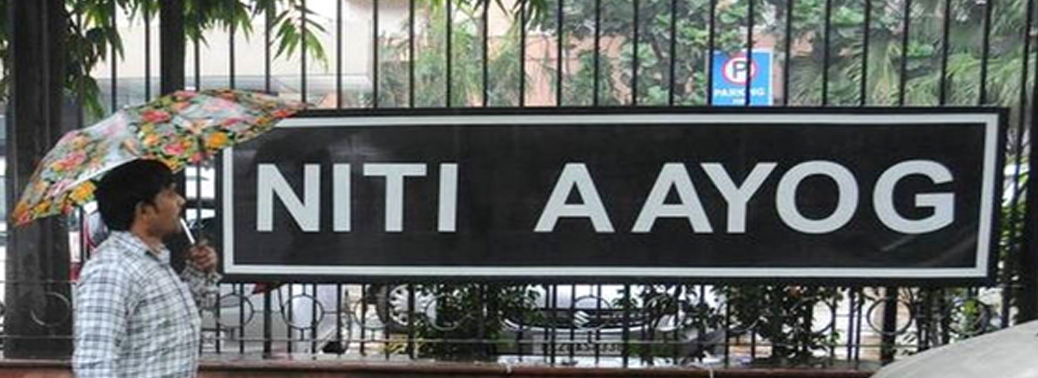
Why in News?
- A report compiled by NITI Aayog has questioned the methodology adopted by the Institute for Economics and Peace (IEP), to rank India as the seventh worst terrorism affected country.
About IEP:
- IEP is an Australian based institute which releases the annual Global Terrorism Index (GTI).
- It is based on four parameters:
- Number of terrorist incidents per year.
- Number of fatalities caused by terrorists per year.
- Number of injuries caused by terrorists per year.
- Total property damage caused by terrorism per year.
What is the Issue?
- In GTI 2019, India has moved to the seventh position from the previous year’s eighth position.
- Countries Ahead: Afghanistan, Iraq, Nigeria, Syria, Pakistan and Somalia. (Top 6).
- Countries Behind: Democratic Republic of Congo, South Sudan, Sudan, Burkina Faso, Palestine and Lebanon. (at different ranks)
- NITI Aayog was being asked to track various global indices. The purpose was to see:
- How they can help drive reforms and growth.
- Which of these require some amount of engagement with the publishing agency to make the indices more relevant.
- In 2017, India challenged at the International Labour Organisation (ILO), the country’s ranking in a Global Slavery Report published by the Walk Free Foundation, Australia.
- Use of GTI scores in other rankings:
- Direct Use:In Global Peace Index, the Global Slavery Report
- Indirect Use:In the World Economic Forum’s Travel and Tourism Competitiveness and Global Competitiveness Indices and compilation of Safe Cities Index by the Economist Intelligence Unit.
- The position in the global indices impact investments and other global opportunities.
What are the Highlights of the Report?
- The NITI Aayog questioned the rankings as well as the funding of the IEP since the funding source and the list of donors has not been revealed.
- The GTD is based solely on unclassified media articles, with more than 100 structured variables such as each attack’s location, tactics and weapons, perpetrators, casualties and consequences etc.
- The organisation has only 12 full-time staff, 12 full-time equivalent staff and 6 volunteers.
- It is something to focus on how the organization is able to annually collect, meaningfully analyse and disseminate data about 163 countries in the Global Terrorism and Peace Indices and provide country wise national peace reports with such Minimal Resources.
Criticisms of the Methodology:
- The GTD lacks mechanisms to engage with Governments or to further classify and verify open source media reports through Government databases in any of the 163 countries it covers.The lack of a universally accepted definition of terrorism leads to ambiguity.
- The Comprehensive Convention on International Terrorism (CCIT) is pending in the United Nations General Assembly since 2014.
- The definition of mass shootings used in the GTI is limited to indiscriminate rampages in public places resulting in four or more victims killed by the attacker.
- It leaves out lone wolf attacks which may have lesser fatalities and more injuries, and attacks foiled by security and intelligence agencies.
- The NITI Aayog report concluded that the GTI has low direct value for policymakers due to the absence of a robust data collection and analysis methodology and any engagement with Governments facing the scourge of terrorism.
- Given the reasons, it cannot be used as an aid to understand and alleviate challenges to countries from domestic and Cross Border Terrorism.
USCIRF ANNUAL REPORT, 2020
29, Apr 2020
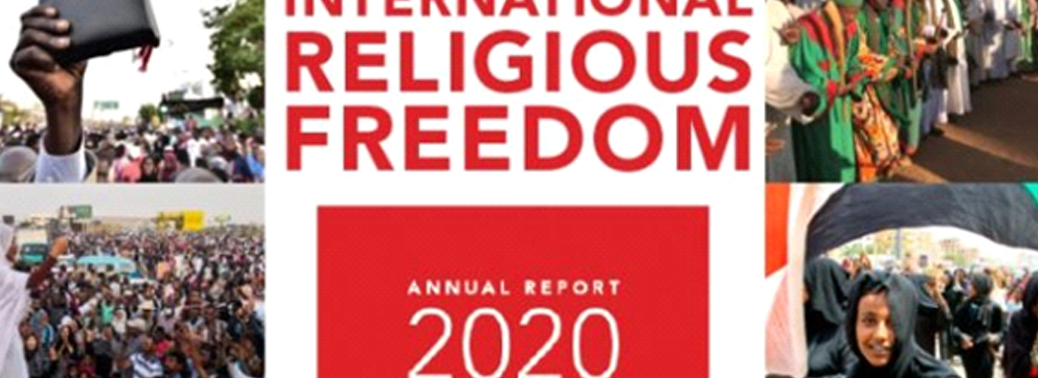
Why in News?
- The S. Commission on International Religious Freedom (USCIRF) has downgraded India to the lowest ranking, “countries of particular concern” (CPC) in its 2020 Report.
About the News:
- The report, released in Washington by the federal government commission that functions as an advisory body, placed India alongside countries, including China, North Korea, Saudi Arabia and Pakistan. India was categorised as a “Tier 2 country” in last year’s listing.
- Tier II countries are those in which violations engaged in or tolerated by government are serious and characterized by at least one of the elements of systematic, on-going, and egregious (horrible).
- Tier II list also means the violations meet one or two, but not all three, of the elements of the systematic, ongoing, egregious test for CPC status.
- This is the first time since 2004 that India has been placed in this category.
- According to the report, India took a sharp downward turn in 2019, which included specific concerns about the Citizenship Amendment Act, the proposed National Register for Citizens, anti-conversion laws and the situation in Jammu and Kashmir.
Reasons Cited by the Panel:
- The national government used its strengthened parliamentary majority to institute national-level policies violating religious freedom across India, especially for Muslims.”
- The panel said that the CPC designation was also recommended because “national and various State governments also allowed nationwide campaigns of harassment and violence against religious minorities to continue with impunity, and engaged in and tolerated hate speech and incitement to violence against them.
Response by Indian Government:
- Government of India reacted sharply to the USCIRF report, terming it “biased and tendentious” and rejected its observations.
- Its biased and tendentious comments against India are not new. But on this occasion, its misrepresentation has reached new levels.
- It has not been able to carry its own Commissioners in its endeavour. We regard it as an organisation of particular concern and will treat it accordingly.
Significance of the Report:
- In its Annual Report, USCIRF unflinchingly describes threats to religious freedom around the world and recommends to the State Department countries for designation as “countries of particular concern” (CPCs) for engaging in or tolerating “systematic, ongoing, egregious violations.”
- USCIRF also recommends to the State Department that non-state actors cited for similarly severe violations be designated as “entities of particular concern” (EPCs).
Way Forward:
- India saw an “overall deterioration of religious freedom conditions in recent years”.
- India is facing declining religious freedom, apart from increased securitisation and politicisation of religion.
- It is increasingly becoming difficult to separate religion and politics. It is a tactic which is sometimes intended by those who seek to discriminate against certain religious communities.
- Over the last decade Minorities conditions have deteriorated in country. The reason is attributed to extremist groups, anti-conversion laws, cow-protection groups, mob lynching, concerns that millions from Assam will be incorrectly left out of NRC (National Register of Citizen) and a denying international NGOs registration.
- Further deterioration in the Religious freedom may put India on various sanctions by the World Countries and may severely affect India’s emerging economy. So Indian Government has to take some preventive steps against the religious freedom of the people.
ADB APPROVES $1.5 BILLION LOAN TO INDIA TO FIGHT COVID-19
29, Apr 2020
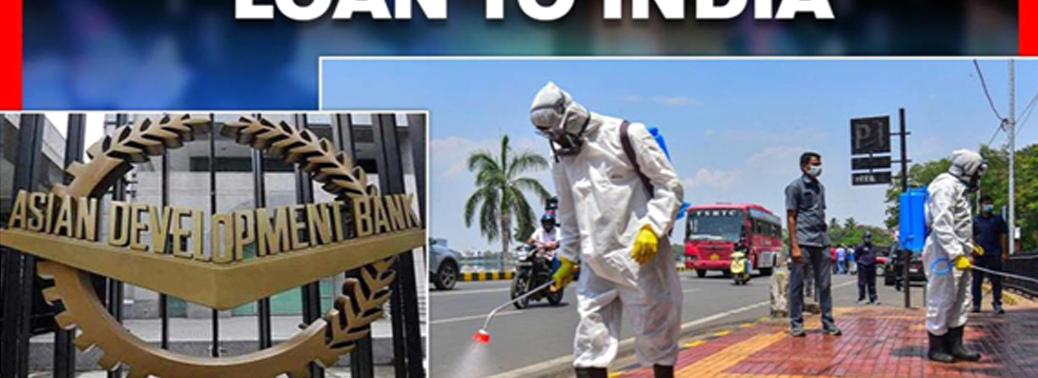
Why in News?
- The Asian Development Bank (ADB) said it has approved $1.5 billion loan to India to help fund its Fight against Coronavirus Pandemic.
About the News:
- The loan has been sanctioned to support immediate priorities such as disease containment and prevention, as well as social protection for the poor and economically vulnerable sections.
- “The quick-disbursing fund is part of a larger package of support that ADB will provide in close coordination with the Government and Other Development Partners.
About Asian Development Bank (ADB):
- It is a regional development bank established on 19 December 1966 headquartered at Manila, Philippines being India as one of the founding member. It is also official United Nations Observer.
- The bank admits the members of the United Nations Economic and Social Commission for Asia and the Pacific (UNESCAP, formerly the Economic Commission for Asia and the Far East or ECAFE) and non-regional developed countries.
- ADB now has 67 members, of which 48 are from within Asia and the Pacific and 19 outside.
- It is modeled closely on the World Bank, and has a similar weighted voting system where votes are distributed in proportion with members’ capital subscriptions.
- Japan holds the largest share in ADB with 15.677%, followed by U.S.A (15.567%), China (6.473%), and India (5.812%).
- ADB defines itself as a social development organization that is dedicated to reducing poverty in Asia and the Pacific through inclusive economic growth, environmentally sustainable growth, and regional integration.
- This is carried out through investments – in the form of loans, grants and information sharing – in infrastructure, health care services, financial and public administration systems, helping nations prepare for the impact of climate change or better manage their natural resources, as well as other areas.
ADB’s Mission:
- Strategy 2030 sets the course for the Asian Development Bank (ADB) to respond effectively to the region’s changing needs. Under Strategy 2030, ADB will sustain its efforts to eradicate extreme poverty and expand its vision to achieve a prosperous, inclusive, resilient, and sustainable Asia and the Pacific.
Other recent development between ADB and India:
- ADB and India have signed a loan of $206 million to strengthen urban services in 5 Tamil Nadu cities.
- Asian Development Bank (ADB) has listed its 10-year masala bonds worth Rs 850 crore on the global debt listing platform of India INX.
- Asian Development Bank (ADB) had prepared a Conceptual Development Plan (CDP) for Vizag-Chennai Industrial Corridor (VCIC).
INFORMATION TECHNOLOGY (IT) ACT
14, Mar 2020

Context:
- Recently, the Ministry of Electronics and Information Technology has finalised the amending the Information Technology (Intermediaries Guidelines) Rules, 2011.
About:
- It is to crack down on spread of fake news and rumours circulated on online platforms like WhatsApp, Facebook and other online platforms, the central government has proposed stringent changes under the draft of Section 79 of the Information Technology (IT) that govern online content.
- The proposed amendments in the draft of, Rule 3(9) is bound to force social media platforms like WhatsApp, Facebook and Twitter to remain vigil and keep users on their toes before posting or sharing anything that is deemed as “unlawful information or content”.
- Its aim is to curbing fake news or rumours being spread on social media and check mob violence ahead.
New Rules of the Amendment:
- The changes will require online platforms to breakend-to-end encryption in order to ascertain the origin of messages.
- The social media platforms to “deploy technology based automated tools or appropriate mechanisms, with appropriate controls, for proactively identifying or removing or disabling access to unlawful information or content”.
- According to the amendment, the platforms will need to comply with the central government “within 72 hours” of a query. There should be a ‘Nodal person of Contact for 24X7 coordination with law enforcement agencies and officers to ensure compliance.
- The platforms will be keeping a vigil on “unlawful activity” for a period of “180 days”.
Necessity for New Rules:
- The concerns over “rising incidents of violence and lynching in the country due to misuse of social media platforms”, there is need for online platforms “to ensure that its platform is not misused on a large scale to spread incorrect facts projected as news and designed to instigate people to commit crime”.
Criticisms:
- The proposed changes have once again, debate on whether the government is intruding into the privacy of individuals, evoking sharp response from opposition parties.
- Similarly, with the Section 66A of the IT Act that enabled authorities to arrest users for posting content which was termed as offensive. However, the Supreme Court on March 24, 2015, struck down the law.
- India has the second highest number of internet users in the world after China, an estimated 462.12 million. Among them, 258.27 million were likely to be social network users in the country in 2019. There is a need for stringent rulers to control the misuse of social media platforms.
GLOBAL HEALTH SECURITY (GHS) INDEX
24, Feb 2020

Why in News?
- Global Health Security (GHS) Index, 2019, which was recently released states that national health security is “fundamentally weak” around the world.
- The report gains significance in the context of the recent Coronavirus (COVID19) outbreak in China.
About Global Health Security (GHS) Index:
- The Global Health Security (GHS) Index, a report from the Nuclear Threat Initiative, the Johns Hopkins Center for Health Security and the Economist Intelligence Unit.
- The GHS Index is the first comprehensive assessment and benchmarking of health security and related capabilities across the 195 countries that make up the States Parties to the International Health Regulations (IHR, 2005).
- The IHR, 2005 represents an agreement between 196 countries including all the World Health Organization (WHO) Member States to work together for global health security.
Six categories covered by the Index:
- The GHS Index assesses countries’ health security and capabilities across six categories, 34 indicators, and 85 sub-indicators. The six categories are as follow:
1.Prevention:Prevention of the emergence or release of pathogens.
2.Detection and Reporting:Early detection and reporting for epidemics of potential international concern.
3. Rapid Response:Rapid response to and mitigation of the spread of an epidemic.
4.Health System:Sufficient and robust health system to treat the sick and protect health workers.
5.Compliance with International Norms: Commitments to improving national capacity, financing plans to address gaps, and adhering to global norms.
6.Risk Environment: Overall risk environment and country vulnerability to biological threats.
Scoring System under the Index:
- The index measures countries’ capabilities from 0-100, with 100 representing the highest level of preparedness. The GHS Index scoring system includes three tiers.
1. Low Scores:Countries that score between 0 and 33.3 are in the bottom tier.
2. Moderate Scores: Countries that score between 33.4 and 66.6 are in the middle tier and
3. High Scores: Countries that score between 66.7 and 100 are in the upper or “top” tier.
Ranking of Different Countries:
- The US is the “most prepared” nation (scoring 83.5), with the UK (77.9), the Netherlands (75.6), Australia (75.5) and Canada (75.3) behind it.
- Thailand is ranked sixth in the Index — the highest ranking for an Asian country.
- Much of Europe, Russia, the Middle East, Asia and Central and South America are described as “more prepared,” with scores between 66 and 34.3, while the majority of countries ranked “least prepared” are in Africa.
- India is ranked 57th with a score of 46.5, falling in the middle tier.
- China – which is at the centre of the recent coronavirus outbreak – is at the 51st place, scoring 48.2.
International Preparedness:
- The GHS Index analysis finds that no country is fully prepared for epidemics or pandemics. Collectively, international preparedness is weak. The average overall GHS Index score among all 195 countries assessed is 40.2 of a possible score of 100.
- Overall, the GHS Index finds severe weaknesses in country’s abilities to prevent, detect, and respond to health emergencies; severe gaps in health systems; vulnerabilities to political, socioeconomic, and environmental risks that can hamper outbreak preparedness and response; and a lack of adherence to international norms.
Key Recommendations as per the Report:
- Global Response:
- UN should convene a global summit by 2021 on biological threats including a focus on financing and Emergency Response.
- Commitment of National Governments:
- National governments should commit to take action to address health security risks.Countries should test their health security capacities and publish after-action reviews, at least Annually.
- Financing Mechanism:
- New financing mechanisms should be established to fill preparedness gaps, such as a new multilateral global health security matching fund and expansion of World Bank International Development Association allocations to include preparedness.
- Institutional Approach:
- A separate and permanent facilitator or unit for high-consequence biological events, should be designated at the earliest.
- Capacity Development:
- Governments and donors should take into account countries’ political and security risk factors when supporting health security capacity development.
India’s Current scenario to respond for an Outbreak:
1. Low Expenditure:Health expenditure by the government in India is less than 1.5% of Gross Domestic Product, which is low for a middle-income country.
2. Low availability of Health Professionals:India has a low availability of health professionals. According to the WHO, India has only 80 doctors per 1,00,000 people
Underprepared:The influenza A (H1N1) outbreaks since 2009 in Rajasthan, Maharashtra, Tamil Nadu and other States have acutely underscored the need for better detection, awareness of symptoms and quarantining.
Way Forward:
- Protecting Biodiversity: Nearly two-thirds of known pathogens and three-quarters of newly emerging pathogens are spread from animals to humans (recent example – SARS-CoV-2).
- Reasons for the same can be traced to increased human encroachment on wildlife territory; land-use changes that increase the rate of human-wildlife and wildlife-livestock interactions; and climate change.
- Exposing crucial gaps in Each State in India needs to expose crucial gaps in areas such as adequacy and supply of diagnostic equipment, health facilities, hygienic practices, and prevention and treatment protocols.
- Separate funding for dealing with a health catastrophe.
- Investing in health and education: Kerala’s experience in 2018 with the deadly Nipah virus shows the value of investing in education and health over the long term. Kerala’s government efforts kept the mortality rate from the Nipah virus relatively low.
INDIA – US TRADE RELATIONS
24, Feb 2020

Context:
- In the recent happenings, India sought to play down American President Donald Trump’s remarks that New Delhi is not treating the US “very well” on the trade front, insisting that it was important to understand the context in which he made the comments.
India’s Response:
- The US President has remarked that India has been hitting the US “very hard” on trade for many years with high tariffs.
- Also, President Donald Trump who pursues an “America First” approach has been personally very vocal about the perceived high tariff walls that India has put and has often called out India terming it “tariff king”.
- On Trump’s remarks that the US was not treated very well by India, the external affairs ministry has said that the context for the comments was the balance of trade and that New Delhi was trying to address Washington’s concerns.
- As hopes for sealing the much-anticipated trade deal during Trump’s visit to India faded away, India said it does not want to create “artificial deadlines”
US – India Trade:
- The US has surpassed China to become India’s top trading partner, in terms of trade in goods and services, followed by China.
- According to the data of the commerce ministry, in 2018-19, the bilateral trade between the US and India stood at USD 87.95 billion.
- While the bilateral trade between US and India is approximately 62 per cent in goods and 38 per cent in services, the bilateral trade between India and China is dominated by goods.

Issues in India – US Trade Relations:
Tariffs:
- India is one of the countries that was hit by Trump’s steel and aluminum tariffs in March 2018. India followed suit with retaliatory tariffs in June 2019 which targeted iconic American products such as apples from Washington state.
- Recently the United States Trade Representative removed India from the list of developing countries who are entitled to benefit from US tariff preferences when it comes to countervailing duties. The determination was based on the fact that India is a G-20 member and accounts for at least 0.5 per cent of global trade.
- According to US, market barriers in Indian market include both tariff and non-tariff barriers, as well as multiple practices and regulations that disadvantage foreign companies.
Generalised System of Preferences (GSP) Programme:
- From March 2019, the US has decided to revoke India’s preferential access to the US market under the World Trade Organization’s Generalized System of Preferences (GSP).
- That decision in turn was the result of an ill-advised Indian policy of capping the prices of medical devices, including stents, which adversely affected the US industry.
- To make matters worse, Indian authorities did not allow US medical equipment manufacturers to exit the Indian market following the price caps, leading to large losses for these firms.
- As a consequence, AdvaMed, the medical device manufacturers’ trade association, then lobbied the US administration aggressively to revoke India’s GSP status.
- India has been the GSP’s top beneficiary. In 2018, GSP represented 11% ($6.3 billion) of US merchandise imports from India, such as chemicals, auto parts, and tableware. GSP removal would reinstate US tariffs.
Data Localization:
- The United States continues to resist India on its “forced” localization practices.
- Initiatives to grow India’s manufacturing base and support jobs include requirements for in-country data storage, domestic content (such as laws protecting India’s solar sector), and domestic testing in some sectors.
- India’s new data localization requirements for electronic payment service suppliers such as MasterCard, Visa, etc.
The Davidson Issue:
- Trump has time and again complained about high import tariffs levied by India on American motorcycles.
- India in response has slashed the customs duty on imported motorcycles from high-end brands such as Harley Davidson to 50 per cent from 100 percent earlier.
- High duties on large engine motorcycles raised their prices and made it too expensive for consumers in India. To make the bikes more affordable, an assembly plant was built in India by the brand. However, the brand has not yet been able to capture a majority portion of the Indian market.
Farm and Dairy Market:
- India imposed higher import duties on 29 US products, including almonds, walnuts and pulses in retaliation to US significantly hiking duties on certain steel and aluminium products.
- This included walnut, chickpeas, Bengal gram (chana) and masoor dal.
- Traditionally, India has always been protective of its dairy imports and imposed restrictions to protect the livelihoods of 80 million rural households involved in the industry.
- However, it has offered to allow imports of US chicken legs, turkey and produce such as blueberries and cherries. It has also offered to cut tariffs on chicken legs from 100 per cent to 25 percent. But, US negotiators want that tariff to be reduced to 10 per cent.
- According to sources, the government has also offered to allow some access to its dairy market, but with 5 percent tariff and quotas.
- However, a certificate would be needed stating that products have not been derived from animals that have consumed feeds that include internal organs, blood meal or tissues of ruminants.The US also wants India to buy at least another $5-6 billion worth of American goods.
Budget 2020-21:
- In Union Budget 2020-21, the finance minister has announced higher tariffs on medical devices, toys, furniture and footwear and said the government will strengthen rules to allow for additional levies to be imposed when there is a significant surge in imports.
- This further angered the US side as it faces tough competition with China in the Indian market in areas such as electronics, machinery, organic chemicals and medical devices.
The China Factor:
- In 2018, the US was India’s largest export destination at 16 per cent of total exports, and second-largest source of imports after China at 6.3% of total imports.
- By contrast, in 2019, India accounted for a measly 2.09% of US exports and 2.30% of total US imports.
- The recently agreed Phase 1 US-China trade agreement reflects the reality that China has far greater clout negotiating with the US than most other countries.
- This stems from the huge imbalance in the two countries’ trade and the dependence of the US market on cheap imports from China, as well as US reliance on China as a source of cheap capital to finance the huge US current account deficit.
- India simply has no comparable levers with which to negotiate with the US, and therefore there is no reason for the US to make any but token concessions in negotiations with India.
- In his keynote speech at the World Economic Forum in Davos in January 2018, Modi called on fellow leaders to embrace more open trade. However, with economic growth falling to over six-year low and pressure on domestic industries, the government is strengthening its barriers again, which is a case for concern as far as rollercoaster ride of India – US trade relations are concerned.
INDIA’S TRADE DIPLOMACY WITH MALAYSIA, TURKEY
15, Feb 2020
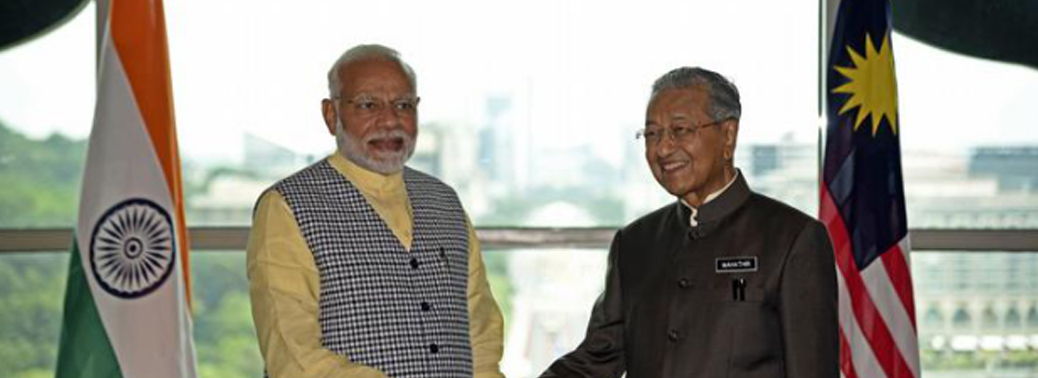
Context:
- India is considering placing curbs on some imports from Turkey and Malaysia, in response to the decisions of Turkey and Malaysia to side with Pakistan on the matter of Article 370 and the Citizenship Amendment Act.
- According to a report, the Indian government is planning to restrict buying of petroleum, aluminium ingots, liquefied natural gas, computer parts and microprocessors from Malaysia
- The Indian government is also planning to cut imports of oil and steel products from Turkey.
What is the Issue?
- India has always claimed J&K to be an integral part of its territory, however, parts of it are illegally occupied by China and Pakistan.
- The Indian Government had withdrawn Article 370, which gave J&K a special status.
- This was quite a controversial move and was taken up at the United Nations General Assembly (UNGA) meeting in New York last year.
- Four countries- Pakistan, China, Malaysia, and Turkey had raised the Kashmir issue at the UN in different ways.
- Although it was expected from the other three countries, Malaysia raising the issue at the UNGA and almost calling India an invading force in Kashmir came as a definite surprise.
- The comments from the Malaysian Prime Minister were termed by India as irresponsible and ill-informed.
- Malaysian Prime Minister Mahathir has made several such historically inaccurate comments and has refused to take them back.
India – Malaysia Relations:
- India is the world’s biggest importer of palm oil. Malaysia is a relatively large trading partner of India in this respect.
- PM Modi had invested goodwill in Malaysia, by being the first foreign leader to drop in on the Malaysian PM after his re-election to congratulate him.
- However, after the Malaysian PM’s latest comments on the Kashmir issue and his criticism of India’s new Citizenship law, there is a shift in the relationship.
- Although the economic relationship between India and Malaysia is flourishing, their political and strategic relationships are not on the same page.
- Malaysia has been providing residency to controversial preacher Zakir Naik and ignoring India’s requests to extradite him.
- The statements by the Malaysian Prime Minister might result in a strained relationship with India which could adversely affect the Malaysian economy – as palm oil exports had contributed to about 2.8 percent of the nation’s GDP in 2018, and India has been one of the largest importers of palm oil. This could also affect the people involved in this sector, who are usually from rural areas.
- Malaysia is now looking to use diplomatic channels to try and resolve concerns over palm oil trade.
India and Turkey Relations:
- India runs a Trade Surplus with Turkey, i.e., it exports more to the country than it imports from the country.
- Key imports from Turkey are mineral fuels and oils, nuclear reactors and salt.
- Modi separately cancelled a planned visit to Ankara this year to show displeasure over Turkish President Recep Tayyip Erdogan’s comments over Kashmir at the United Nations General Assembly.
- Erdogan had urged India to hold talks with Pakistan following India’s decision to revoke autonomy in Kashmir.
- Turkey has also sided with Pakistan on issues such as its membership of the Nuclear Suppliers Group, which oversees the export of goods that can be used for nuclear weapons manufacturing.
- Turkey is also against the blacklisting of Pakistan by the world financial watchdog, the Financial Action Task Force, to curb its alleged financing of terror, something India has been lobbying for hard.
- In the recent past, the Turkish firm Anadolu Shipyard has been banned from doing defence-related business in India over its increased defence ties with Pakistan.
Possible Impacts on India:
- India’s move to restrict palm oil imports from Malaysia will create a huge challenge for the world’s second-biggest producer of the edible oil as India has been its top market for the past five years.
- There is enough refining capacity in India, so its consumers are not going to suffer from this event very much.
- India can buy the rest of palm oil from Indonesia which earlier was a big exporter of Palm oil to India.
- Indonesia traditionally corned around two-thirds of India’s palm oil imports, but a lower duty on refined palm oil helped Malaysia to overtake Indonesia as India’s biggest supplier in 2019.
- The decision to restrict all imports of refined palm oil is also likely to boost business for Indian refiners of vegetable oil.
- India has also made some friends in the West Asian chaos, resulting due to the emergence of power struggle in the regional arena with the US withdrawal.
- The countries such as Saudi Arabia and the Gulf states, with whom India has only had an inconsistent relationship so far are moving towards India.
- Over the past four years, PM Modi has built close bonds with young Gulf leaders, including with the crown princes of Abu Dhabi and Saudi Arabia.
- These efforts seem to be paying off as unlike Turkey and Malaysia, Saudi Arabia has taken a positive approach vis-a-vis India and the abrogation of Article 370. The country has also cautioned Pakistan against escalating the crisis.
- The UAE has also extradited three individuals wanted in India on corruption charges and Saudi Arabia also promised to share intelligence to boost counterterrorism cooperation with India.
- With Turkey, India is having a trade surplus, India has more to gain than lose from Turkey.
Can India react the same way towards China?
- China is one of the largest economies in the world. Hence, India would have to react differently with China.
- China has always tried to limit India’s influence to South Asia instead of allowing it to occupy the international space that it deserves.
- One of the reasons why India backed out of the RCEP deal is because of possible economic domination by China. So India cannot react in the same manner with China for supporting Pakistan and interfering with India’s internal affairs.
- India will have to exert diplomatic pressure and negotiate in order to make China understand India’s point of view.
- India has convinced most of the countries that the issue of Kashmir is a matter of Internal Affairs of India.
- India cutting its exports from Malaysia could affect the Malaysian economy drastically and hence, Malaysia might be forced to make a course correction. However, care must be taken by India to use this measure sparingly, in order to ensure that it does not escalate into a trade war.
GLOBAL GO TO THINK-TANK INDEX
05, Feb 2020
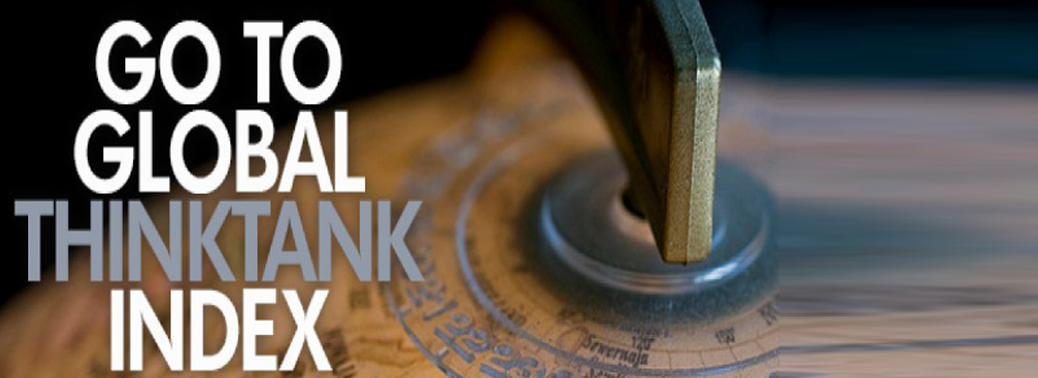
Why in News?
- Centre for Science and Environment (CSE) was placed No. 16 among 2019’s ‘top environment policy think tanks’ of the world in Global Go To Think Tank Index.
Think-Tank Index:
- The Index is released by University of Pennsylvania each year since 2008.
- It evaluates public-policy research analysis and engagement organisations that generate policy-oriented research, analysis, and advice on domestic and international issues.
- It claims to enable policy makers and the public to make informed decisions on public policy.
- The 2020 report raised some critical threats and opportunities that think tanks across the globe face.It called upon such organisations to develop national, regional, and global partnerships and create new, innovative platforms to deliver for an ever-expanding audience of citizens, policy makers and businesses.
India’s Performance:
- CSE climbed up two notches in the 14th version of the report.
- The organisation also moved up three places among ‘best independent think tanks’ to be at No.123 in the world and sixth among Indian think tanks.
- Globally, it was ranked 41 of 60 organisations committed to energy and resource policy. It remained at No.58 among organisations working on science and technology policy in the world — fifth in India.
CSE as Forerunner:.
- CSE was named the ‘national climate leader’ from India for 2019 in the first National Climate Leader Awards published in the Global Spotlight Report #22 by Climate Scorecard.
- CSE also received the prestigious Indira Gandhi Prize for Peace, Disarmament and Development for 2018 in 2019 for ‘pioneering work on environment and sustainable development’.
- CSE also featured in four other rankings in the report: ‘top water security think tanks’; ‘top energy and resource policy think tanks’; ‘top science and technology policy think tanks’ and ‘best independent think tanks’.
- It also ranked 18 among 78 global think tanks for its work on ‘water security’ — second in India after Ashoka Trust for Research in Ecology and the Environment.
BREXIT AND ITS IMPACT
05, Feb 2020
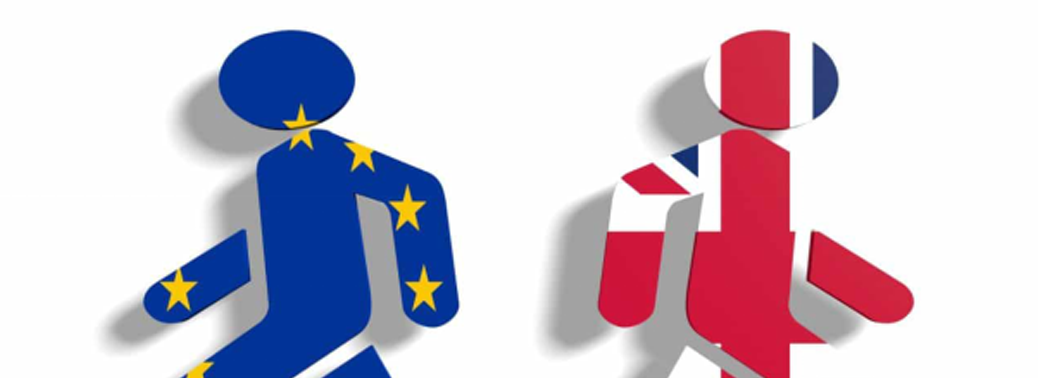
Why in News?
- The United Kingdom (U.K.) has finally left the European Union (EU) recently after it took the historical decision to leave EU in June 2016.
About Withdrawal Agreement:
- Under this agreement, a transition period of 11 months has finalised until December 2020. However, it might get delayed until 2022 or 2023.
- During this period, the U.K. will continue to participate in the EU’s Customs Union and in the Single Market.
- The U.K. will apply EU law even if it is no longer a Member State and will also continue to abide by the international agreements of the EU.
- The transition period makes sure that there is not a sudden shock but a degree of continuity and allows both parties to secure an orderly Brexit, minimising disruption for the citizens, businesses, public administrations, as well as for the International Partners.
What are its impacts with EU?
- By leaving the EU, the U.K. automatically, mechanically, legally, leaves hundreds of international agreements concluded by or on behalf of the EU, to the benefit of its Member States, on topics as different as trade, aviation, fisheries or civil nuclear cooperation.
- However, with just 11 months to negotiate, there are only chances of very basic and minimal deals covering trade, fisheries and security.
- In that case, at the end of 2020, differing aspirations for the trade talks might raise the prospect of a new no-deal scenario.
- In the absence of a deal, the earlier accord on citizens’ rights, money and the Irish border will remain intact.
- Both of them will have to be ready for the economic shift in trading on World Trade Organization (WTO) terms.
- The first priority is the trade deal to ensure the tariff and quota-free flow of goods between the EU and U.K.
- However, the EU will only agree to zero tariffs and zero quotas if the U.K. pledges zero dumping – that is, not lowering social and environmental standards to outcompete the EU.
- Negotiations will clash over the EU’s refusal to bring services into the trade deal.
- The EU seeks to link goods trade to maintaining the status quo on access to British waters which is considered to be a matter of concern for the U.K., so it might give rise to clashes.
- Even the non-trade subjects will be full of political troubles because the EU Member States will have to change their policies according to the new deals and the regulations.
What are the Impacts on India?
- India has had strong historical ties with the U.K. and currently, it is one of India’s most important trading partners. In the last four years alone, the number of Indian companies investing in the U.K. has quadrupled.
- It is important to see how India and the U.K. can manoeuvre through Brexit and enter into new trade agreements that are mutually beneficial to both economies.
- Brexit will directly impact not only the Indian stock market but the global market in totality, including the emerging markets in the world. This is because of the high volatility in the pound.
- Both the U.K. and EU account for 23.7% of Rupee’s effective exchange rate. With Brexit, foreign portfolio investments will outflow and will lead to the weakening of the rupee.
- India’s businesses based in the U.K. will be hampered as till now they had border-free access to the rest of Europe.
- The investors are concerned as India invests more in the United Kingdom than the rest of Europe combined.
What are the Impacts on the other World countries?
- Brexit will weaken the EU economically and politically. The U.K. was the EU’s second-biggest economy (after Germany) a major net budget contributor, key military force and one of the bloc’s two nuclear powers (another one is France) and permanent UN security council members.
- The U.K.’s departure has distracted attention from a number of other big and urgent problems, including the Climate Crisis.
- In the longer term of balancing of global powers, a smaller Europe can be a weaker Europe in the face of an ambitious China and an increasingly protectionist US.
NEW SHIPPING LAWS FOR ARCTIC REGION
03, Feb 2020
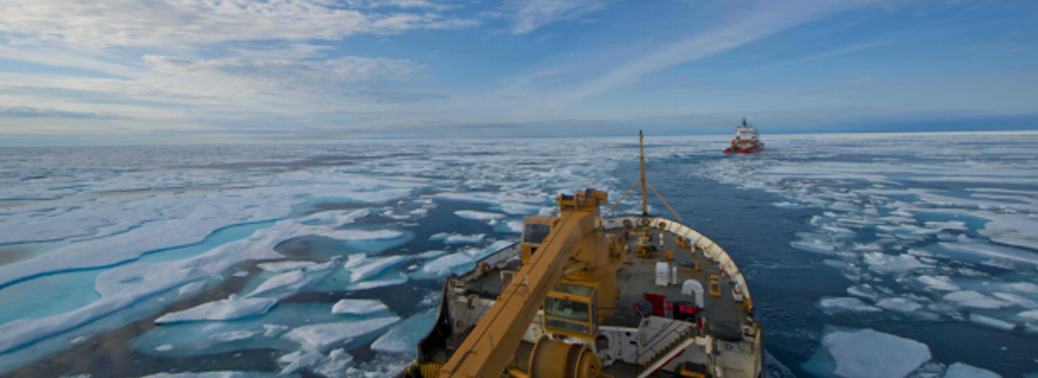
Why in News?
- Environmental activists have called for a ban on the use of new low sulphur marine fuel in the Arctic region. They have cited new research which shows that blends of very low-sulfur fuel oil (VLSFO) contribute to highly polluting black carbon emissions in the Environment.
Highlights:
- Recently, International Maritime Organization (IMO), the shipping agency of the United Nations, issued new rules aiming to reduce sulphur emissions, due to which ships are opting for newer blends of fuels.
- The IMO has banned ships from using fuels with a sulphur content above 0.5 per cent, compared with 3.5 per cent previously. Sulphur oxides (SOx), which are formed after combustion in engines, are known to cause respiratory symptoms and lung disease, while also leading to acid rain.
- The new regulations, called IMO 2020, have been regarded as the biggest shake up for the oil and shipping industries in decades. It affects more than 50,000 merchant ships worldwide.
- The new limits are monitored and enforced by national authorities of countries that are members of the International Convention for the Prevention of Pollution from Ships (MARPOL) Annex VI.
- Only ships fitted with sulphur-cleaning devices, known as scrubbers, are allowed to continue burning high-sulphur fuel. Alternatively, they can opt for cleaner fuels, such as marine gasoil (MGO) and very low-sulfur fuel oil (VLSFO). Many are reportedly choosing VLSFO, which has better calorific properties and other technical advantages. There are complaints against VLSFO as well, as testing companies have claimed that high sediment formation due to the fuel’s use could damage vessel engines and also release Black Carbon.
- Black carbon, which is produced due to the incomplete combustion of carbon-based fuels, contributes to climate change. Increase in black carbon emissions would accelerate the melting of Arctic sea ice and impact the earth’s climate.
International Maritime Organisation (IMO):
- IMO is a specialised agency of the United Nations responsible for Regulating Shipping.
- The IMO was established following agreement at a UN conference held in Geneva in 1948 and the IMO came into existence ten years later.
- Headquartered in London, United Kingdom, the IMO currently has 174 member states and three associate members.
- The IMO’s primary purpose is to develop and maintain a comprehensive regulatory framework for shipping and its remit today includes safety, environmental concerns, legal matters, technical co-operation, maritime security and the efficiency of shipping.
- IMO is governed by an assembly of members and is financially administered by a council of members elected from the assembly.
MARPOL 73/78 (Marine Pollution 1973- 1978):
- MARPOL is one of the most important international marine environmental conventions.
- It was developed by the International Maritime Organization with an in an objective to minimize pollution of the oceans and seas, including dumping, oil and air pollution.
- All ships flagged under countries that are signatories to MARPOL are subject to its requirements, regardless of where they sail and member nations are responsible for vessels registered on their National Ship Registry.
Annex VI:
- It introduces requirements to regulate the air pollution being emitted by ships, including the emission of ozone-depleting substances, Nitrogen Oxides (NOx), Sulphur Oxides (SOx), Volatile Organic Compounds (VOCs) and shipboard incineration.
- It also establishes requirements for reception facilities for wastes from exhaust gas cleaning systems, incinerators, fuel oil quality, for off-shore platforms and drilling rigs and for the establishment of SOx Emission Control Areas.
GLOBAL FORUM ON CHILDHOOD PNEUMONIA
03, Feb 2020
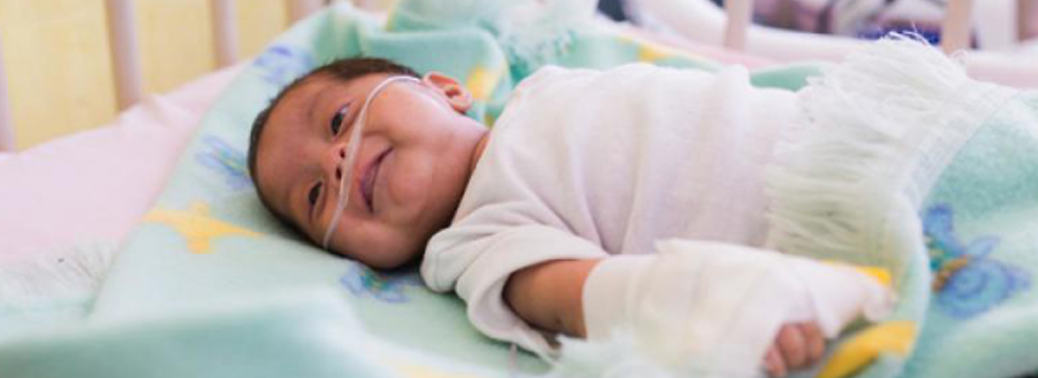
Why in News?
- World’s First Conference on Childhood Pneumonia was held in Barcelona (Spain)to make it part of the global health agenda.
- It is an initiative of 9 leading health and children’s organisations including UNICEF, Bill & Melinda Gates Foundation, and Gavi among others.
- The theme of the conference is ‘Fighting for Breath’.
About Pneumonia:
- Pneumonia is an acute respiratory infection of the lungs.
- Despite being the biggest infectious killer of children, pneumonia remains a neglected disease both nationally and globally.Every 39 seconds, a child under-5 dies from it.
Causes:
- It doesn’t have one single cause – it can develop either from bacteria, viruses or fungi in the air.
Vaccination:
- Pneumonia caused by bacteria is easily preventable with vaccines. 3 doses of the primary vaccine (Pneumococcal Conjugate Vaccine (PCV) to prevent it are recommended.
- A new vaccine for one of the main viral causes of pneumonia is under development.
- India is planning for the nationwide rollout of PCV under Universal Immunisation Programme (UIP).
Vulnerability:
- Children whose immune systems are immature (i.e. New-Borns) or weakened – such as by undernourishment, or diseases like HIV – are more vulnerable to pneumonia.
Spread:
- Pneumonia is contagious and can be spread through coughing or sneezing. It can also be spread through fluids, like blood during childbirth, or from contaminated surfaces.
- The poorest children are most at risk because of high rates of malnutrition, low vaccine coverage and limited access to correct diagnosis and Timely Treatment.
Preventive Measures:
- Almost all of the deaths from childhood pneumonia are preventable through vaccination, adequate nutrition, reducing risk factors like air pollution (which makes the lungs more vulnerable to infection), using good hygiene practices and treatable with low-cost antibiotics and oxygen,
- Exclusive breastfeeding during the first 6 months of a child’s life can lead to a 23% reduction in pneumonia incidence. Infants who aren’t breastfed are 15 times more likely to die from pneumonia.
- Outdoor air pollution contributes to nearly 18% or nearly 1 in 5 pneumonia deaths among children under 5.
TERI’S WORLD SUSTAINABLE DEVELOPMENT SUMMIT 2020
01, Feb 2020
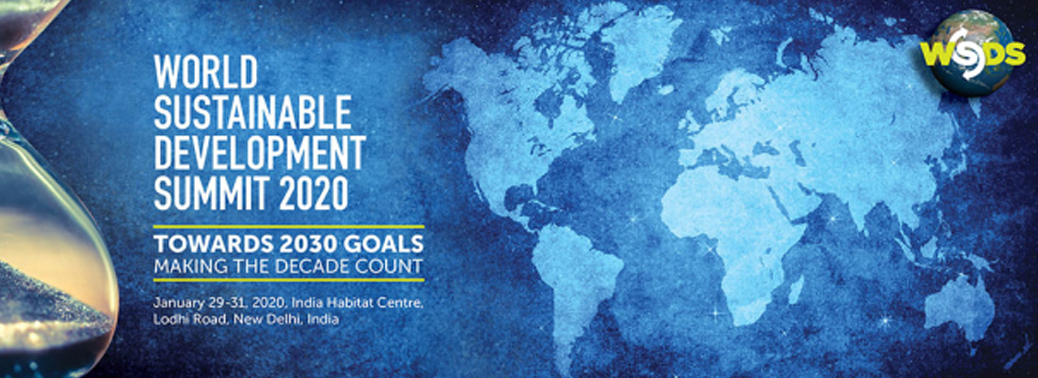
Why in News?
- The Minister of Petroleum and Natural Gas & Steel Shri Dharmendra Pradhan delivered the keynote address at the TERI’s World Sustainable Development Summit 2020 on ‘Energy Future Road Map’.
Highlights:
- India will continue to lead the Global Sustainable Energy Agenda.
- India will remain cognizant of the need to root economic development firmly to achieve the 2030 UN Sustainable Development Goals and commitments made at COP 21.
- The Minister commented that India is now the third-largest energy consumer after the US and China.
- With the energy demand increased to 882 million tonnes of oil equivalent (Mtoe) in 2017, the per capita consumption of energy is still 30% of the global average.
- The country’s energy consumption is projected to grow at 4.2 percent per annum up to 2035.
- India’s share of the total global primary energy demand is set to roughly double to about 11 percent by 2040, driven by strong economic development.
- Despite the country’s system-wide energy transition measures, crude oil would continue to play a critical role at this stage of development in meeting the country’s energy requirements.
- The Government has set out a road map for reducing India’s crude oil imports by 10% by 2022.
- He said that the country is working towards transformation to a gas-based economy, tapping into indigenously produced biofuels, apart from adopting renewable energy and energy efficiency measures, to achieve the much-needed carbon reductions.
- The Minister also noted that the decarbonisation of the energy sector is picking up momentum in India.
- He also stated that the government is working to improve energy efficiency and productivity, demand substitution, improving refinery processes and promotion of bio and alternate fuels.
- India is enhancing collaboration with countries such as Brazil and the US, to improve blending technologies in the transport sector.
- To reduce vehicular pollution, BS VI quality fuel, equivalent to Euro 6 standard, will be supplied in the entire country from 1 April 2020.
- Given the abundance of biomass in the country, the use of Compressed Bio-Gas (CBG) will be promoted in a big way in automotive, industrial and commercial uses in the coming years.
TERI’s World Sustainable Development Summit 2020:
- The World Sustainable Development Summit (WSDS) is the annual flagship event of The Energy and Resources Institute (TERI).
- Started in 2001, the Summit has become a focal point for leaders and stakeholders across the world to bridge thought and action for sustainable development.
- The Summit series has emerged as the premier international event on sustainability which focusses on the global future, but with an eye on the actions in the developing world which could bend our common future.
- The WSDS has continued the legacy of the erstwhile Delhi Sustainable Development Summit (DSDS) which was initiated in 2001 with the aim of making ‘sustainable development’ a globally shared goal.
- WSDS 2020 Theme: “Towards 2030: Making the Decade Count”
- The Energy and Resources Institute – TERI:
- TERI is a leading think tank dedicated to conducting research for the sustainable development of India and the Global South.
- TERI was established in 1974 as an information centre on energy issues. However, over the following decades, it made a mark as a research institute, whose policy and technology solutions transformed people’s lives and the environment.
- It is located in New Delhi.
ISRAEL-PALESTINE
30, Jan 2020
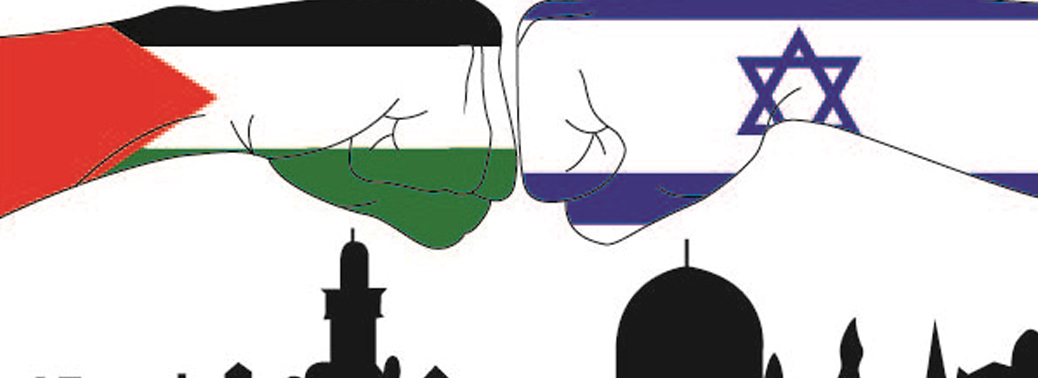
Context:
- Recently, the U.S. President unveiled the ‘West Asia peace plan’, which gives the Israelis – an expansive state with Jerusalem as its “undivided capital” and tight security control over a future Palestinian state. With his plan, Mr. Trump is actually pushing to revive the stalled two-state talks between the Israelis and the Palestinians.
What is the Israel-Palestine Conflict all about?
- West Bank & Gaza Strip
- The West Bank is located to the west of the Jordan River. It is a landlocked territory, bordered by Jordan to the east and Israel to the south, west and north.
- The Gaza Strip, on the other hand, is a small boot-shaped territory along the Mediterranean coast between Egypt and Israel.
- Creation of Israel and Palestine:
- After World War I, both West Bank and the Gaza Strip became part of British-mandated Palestine.
- But by the end of World War II, there was a strong demand from Jews fleeing Nazi Europe for a homeland within Palestine, an Arab-dominated region.
- It also had to do with Jerusalem, considered a holy city by the Jews, which was inside the British-mandated Palestine.
- Jerusalem has been at the centre of a religious dispute between the Arabs and Jews for centuries.
- When the British mandate ended in 1947, the United Nations (UN) proposed an Arab-Jewish partition of Palestine — between Palestine and the new state of Israel.
- This partition plan mandated 53 per cent of the land to the Jewish-majority state (Israel) and 47 per cent to the Palestinian-majority state (Palestine).
- But the idea of creating a new-Jewish majority state didn’t bode well for the Arab countries in the Middle East.
- Jewish paramilitary groups, however, formed the state of Israel by force in 1948.
- This prompted a deadly war with its Arab neighbours — Egypt, Iraq, Lebanon, Syria, and Jordan in 1948. This was the first Arab-Israeli war.
- Israel won this war and ended up occupying more land than previously envisaged in the 1947 UN partition plan.
- By the end of the war in 1949, Israel had taken up 78 per cent of the historical Palestine.
- Palestinian territory shrank to 22 per cent of what it had earlier been.
- Meanwhile, the West Bank and East Jerusalem came under Jordan’s rule while West Jerusalem went to Israel. The Gaza Strip was under Egyptian military rule after the 1949 war.
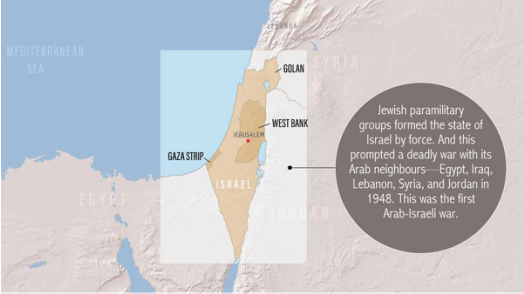
Six-Day War of 1967:
- In 1967, the Arab countries again refused to recognise Israel as a state, which led to another war — known as the Six-Day War.
- Israel won this war too and occupied even more parts of Palestine.
- The West Bank, the Gaza Strip and East Jerusalem — which houses the holy Old City — came under Israel’s control. It also occupied Syrian Golan Heights and Egypt’s Sinai Peninsula.
- With the exception of the Sinai Peninsula, all other parts remain occupied by Israel till date. Since 1967, a large part of the Palestinian population had been living under Israeli-occupied territories in both West Bank and the Gaza Strip.
- Also, post-1967, Israel started to build settlements for its Jewish community in the newly-occupied Palestinian territories, including in the West Bank and Gaza Strip.
Where Things Stand Now?
- Both the West Bank and Gaza Strip are home to a large number of Palestinian populations.
- Following the Oslo Accords between the Israeli government and the Palestine Liberation Organization (PLO) during the 1990s, part of the West Bank came under the control of the Palestinian Authority.
- With varying levels of autonomy, the Palestinian Authority controls close to 40 per cent of West Bank today, while the rest is controlled by Israel.
- It is in the West Bank that 160-odd Israeli settlements and outposts now exist.
- The Gaza Strip, densely populated with Palestinians, had been under Israeli occupation since 1967, until Israel decided to “disengage” from the territory in 2005.
- A couple of years later in 2007, Hamas, an anti-Israel military group, took over Gaza Strip. The militia group is often involved in violent clashes with the Israeli Defence Forces.
- While Palestine has staked claim to both territories — West Bank and Gaza Strip — Israel’s objective has been to keep expanding Jewish settlements in these regions.
- There are approximately 2 million Palestinians in the Gaza Strip and 3 million in the West Bank, according to the Palestinian Authority’s Population Registry.
What’s the New Plan?
- The Trump plan seeks to address most of the contentious issues in the conflict.
- It takes note of issues such as the border of Israel, status of Palestinian refugees, Jewish settlements on the West Bank, land swap between Israel and Palestine, Israel’s security concerns and the status of the city of Jerusalem.
- However, the solutions Mr. Trump has proposed to almost all of these issues favour the Israeli positions. For example, Israel would be allowed to annex the Jewish settlements on the West Bank as well as the Jordan Valley.
- The Palestinian refugees, who were forced out from their homes during the 1948 Arab-Israeli war that followed the declaration of the state of Israel in the historic Palestine, would not be allowed to return. They could move to the future Palestinian state, be integrated into the host countries or settled in other regional countries.
India’s Stand: From the Past:
- India was one of the few countries to oppose the UN’s partition plan in November 1947, echoing its own experience during independence a Few Months Earlier.
- In the decades that followed, the Indian political leadership actively supported the Palestinian cause and withheld full diplomatic relations with Israel.
- India recognised Israel in 1950 but it is also the first non-Arab country to recognise Palestine Liberation Organisation (PLO) as the sole representative of the Palestinian. India is also one of the first countries to recognise the statehood of Palestine in 1988.
- In 2014, India favoured UNHRC’s resolution to probe Israel’s human rights violations in Gaza. Despite supporting the probe, India abstained from voting against Israel in UNHRC IN 2015.
- As a part of Link West Policy, India has de-hyphenated its relationship with Israel and Palestine in 2018 to treat both the countries mutually independent and exclusive.
- In June 2019, India voted in favour of a decision introduced by Israel in the UN Economic and Social Council (ECOSOC) that objected to granting consultative status to a Palestinian non-governmental organization
- So far India has tried to maintain the image of its historical moral supporter for Palestinian self-determination, and at the same time to engage in the military, economic, and other strategic relations with Israel.
- The aim of this plan was to bring peace to one of the most troubled parts in the world. But it seems to have left the two sides as divided as they have been for more than 100 years.
JUS COGENS
09, Jan 2020
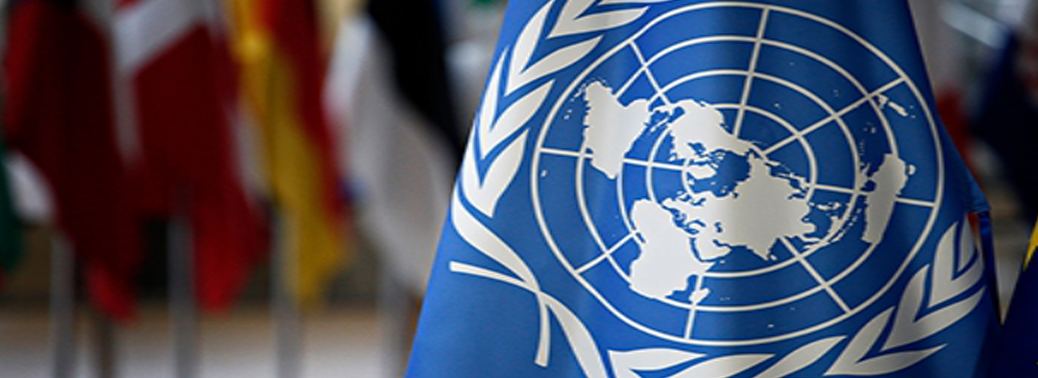
Why in News?
- The US has threatened to target few historical sites if Iran retaliates to attack US in revenge. This is a breach of JUS COGENS as targeting cultural sites amounts to a war crime.
Jus Cogens:
- JUS COGENS or ius cogens, meaning “compelling law” in Latin, are rules in international law that are peremptory or authoritative, and from which states cannot deviate.
- The jus cogens rules have been sanctioned by the Vienna Conventions on the Law of Treaties of 1969 and 1986. According to both Conventions, a treaty is void if it breaches jus cogens rules.
- Article 64 of the 1986 Convention, “Emergence of a new peremptory norm of general international law (jus cogens)”, says: “If a new peremptory norm of general international law emerges, any existing treaty which is in conflict with that norm becomes void and terminates.”
- So far, an exhaustive list of jus cogens rules does not exist. However, the prohibition of slavery, genocide, racial discrimination, torture, and the right to self-determination are recognised norms.
- The prohibition against apartheid is also recognised as a jus cogens rule, from which no derogation is allowed, since apartheid is against the basic principles of the United Nations.
Vienna Convention on Law of Treaties:
- Article 53 of the 1969 Convention says: “A treaty is void if, at the time of its conclusion, it conflicts with a peremptory norm of general international law.For the purposes of the present Convention, a peremptory norm of general international law is a norm accepted and recognized by the international community of States as a whole as a norm.
- From this no derogation is permitted and which can be modified only by a subsequent norm of general international law having the same character.
- Article 64 says- If a new peremptory norm of general international law emerges, any existing treaty which is in conflict with that norm becomes void and terminates.
- Besides treaties, unilateral declarations also have to abide by these norms.
U.S. HOUSE PASSES BILL SEEKING ACTION OVER UIGHUR CRACKDOWN
06, Dec 2019

Why in News?
- The U.S. House of Representatives have overwhelmingly approved a Bill that would require the Trump administration to toughen its response to China’s crackdown on its Muslim minority, drawing swift condemnation from Beijing.
Highlights:
- The Uighur Act of 2019 is a stronger version of a Bill that angered Beijing when it passed the Senate in September 2019.
- It calls on President Donald Trump to impose sanctions for the first time on a member of China’s powerful politburo (executive committee for communist parties).
- The Uighur Bill, requires the U.S. President to condemn abuses against Muslims and call for the closure of mass detention camps in the north-western region of Xinjiang.
- It calls for sanctions against senior Chinese officials who, it says, are responsible.
- The revised Bill still has to be approved by the Republican-controlled Senate before being sent to Mr. Trump for approval.
China’s Response:
- China’s Foreign Ministry called the Bill a malicious attack against China.
- “We urge the U.S. to immediately correct its mistake, to stop the above Bill on Xinjiang from becoming law, to stop using Xinjiang as a way to interfere in China’s domestic affairs,” said the statement, attributed to the Ministry’s spokeswoman.
- Commenting on the repercussions the bill would have on the trade negotiations between the two countries, the spokeswoman hinted a strong counter reaction to the move.
Who are Uighurs?
- The Uighurs live in Xinjiang, the largest and most western of China’s administrative regions, which is surrounded by Mongolia, Russia, Kazakhstan, Kyrgyzstan, Tajikistan, Afghanistan, Pakistan and India.
- They are Muslim, speak a language close to Turkish, and are culturally and ethnically closer to Central Asia than the rest of China.
- Till recently, they were the majority in Xinjiang, but massive registered and unregistered settlements of Han Chinese and heavy troop deployments have likely changed that situation.
- International concern has been growing about what China is doing to its Uighur population, a Muslim minority community concentrated in the country’s north-western Xinjiang province. Reports have emerged of China ‘homogenising’ the Uighurs, who claim closer ethnic ties to Turkey and other central Asian countries than to China, by brute — and brutal — force.
- Around a million Uighurs, Kazakhs and other Muslims have been bundled into internment camps, where they are allegedly being schooled into giving up their identity, and assimilate better in the communist country dominated by the Han Chinese.
ANTARCTIC TREATY SYSTEM (ATS)
03, Dec 2019
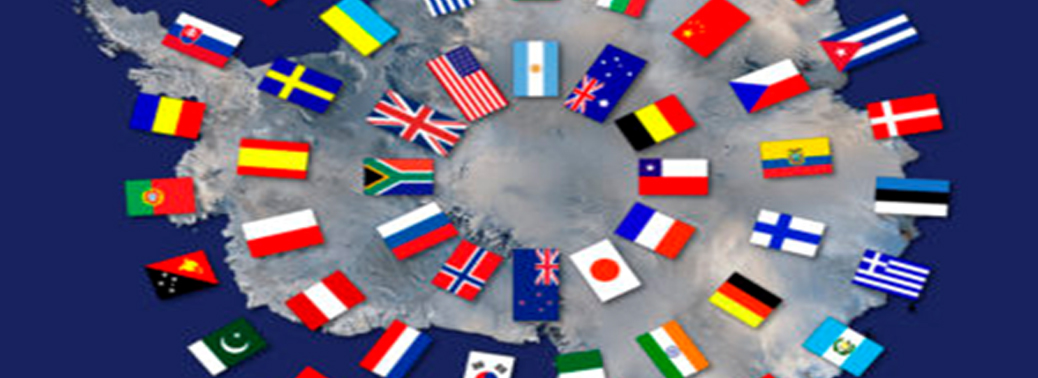
Why in News?
- Reports have claimed that compared to last year, 40 per cent more tourists, numbering about 80,000, are expected to visit Antarctica, the least visited continent in the world.
Highlights:
- All human activities on the continent are regulated by the Antarctic Treaty, which was signed in 1960.
- The treaty entered into force in 1961 and currently has 54 titicaca parties. India became a member of this treaty in 1983. For the purposes of the treaty system, Antarctica is defined as all of the land and ice shelves south of 60°S latitude.
- The treaty sets aside Antarctica as a scientific preserve, establishes freedom of scientific investigation, and bans military activity on the continent.
- The treaty was the first arms control agreement established during the Cold War. Since September 2004, the Antarctic Treaty Secretariat headquarters has been located in Buenos Aires, Argentina.
Regulating Tourism:
- Tourism in Antarctica started around the 1950s, starting out with a few hundred visitors annually to over 38,000 per year in 2015-2016.
- Working within the mechanism of this treaty is the International Association of Antarctica Tour Operators (IAATO), a body which was founded in 1991 by seven tour operators to promote safe and environmentally responsible travel in Antarctica.
- While IAATO maintains that the tourism conducted under its banner has virtually no environmental impact on the region, the IAATO rules and guidelines are not mandatory or binding.
Melting Antarctica:
- In September, a report on oceans released by the IPCC said that between 2006 and 2015, the Antarctic ice sheet lost about 155 billion tonnes of mass on average every year.
- This ice melt from Antarctica likely contributed to sea-level rises.
- The main sources of environmental damage to the continent include planet-wide impacts such as global warming, ozone layer depletion, impacts of fishing and hunting (of whales and seals) and lastly, the impact of visitors which includes Scientists and Tourists.
HAJ 2020: INDIA BECOMES FIRST COUNTRY TO MAKE ENTIRE HAJ PROCESS DIGITAL
03, Dec 2019

Why in News?
- India has become the first country in the world to completely Digitize the Haj process.
- Union Minority Affairs Minister Mukhtar Abbas Naqvi said that various services have been added to the online application service like e-visa, haj mobile app, e-messiah health facility, stay and traffic information in Mecca Medina and Haj pilgrimage information.
Highlights:
- India recently signed a bilateral Haj 2020 agreement with Saudi Arabia’s Haj and Umrah Minister Mohammad Saleh bin Taher.
- It is for the first time when digital pre-tagging has been arranged by the airlines so that Haj pilgrims will get all kinds of information in India itself.
- Haj pilgrims will get prior information about which room of which building in Mecca Medina and what number bus will have to be taken after landing at the airport.
- The SIM card of the passengers will be linked with the Haj Mobile app so that they will continue to get the latest information about the Haj.
- This year 100 telephone line information centres have been started at Haj House in Mumbai.
- The government of India will provide health cards to all travellers in India, while in Saudi Arabia they will be given ‘e-Messiah health facility’.
- This system will have information about the health of each Haj pilgrim. They will be provided medical assistance immediately in case of an Emergency
Haj 2020:
- Indian consulate in Jeddah, the Saudi Arabian government and other relevant agencies are working together to make Haj 2020 a successful affair.
- It is estimated that about two lakh Indian Muslims will go on the Haj pilgrimage without any Haj subsidy in 2020.
- The Indian Haj Committee had received a total of 176,714 applications by 30 November. The last date for application is December 5, 2019.
RECYCLING OF SHIPS BILL, 2019
23, Nov 2019

Why in News?
- Cabinet approves proposal for enactment of Recycling of Ships Bill, 2019 and accession to the Hong Kong International Convention for Safe and Environmentally Sound Recycling of Ships, 2009.
About Hong Kong International Convention:
- The Hong Kong International Convention for the Safe and Environmentally Sound Recycling of Ships, 2009 (the Hong Kong Convention), was adopted at a diplomatic conference held in Hong Kong, China in 2009.
- It was adopted by the International Maritime Organization (IMO) in 2009.
- The Convention is aimed at ensuring that ships, when being recycled after reaching the end of their operational lives; do not pose any unnecessary risks to human health, safety and to the environment.
- It also addresses concerns raised about the working and environmental conditions at many of the world’s ship recycling locations.
- The Convention is yet to come into force because it has not been ratified by 15 nations, representing 40 per cent of the world merchant shipping by gross tonnage (capacity) and a maximum annual ship recycling volume of not less than 3 per cent of the combined tonnage of the countries.
Why is it needed?
- India is the leader in the global ship recycling industry, with a share of over 30% of the market.
- As per UNCTAD report on Review of Maritime Transport, 2018, India had demolished 6323 tonnes in 2017, of known ship scrapping across the world.
- The ship-recycling industry is a labour-intensive sector, but it is susceptible to concerns on environmental safety.
Salient Features of the Bill:
- The Government of India has decided to enact a Bill, namely Recycling of Ships Bill, 2019, to provide for the regulation of recycling of ships by setting certain international standards and laying down the statutory mechanism for enforcement of such standards.
- It has also been decided to accede to the Hong Kong International Convention for Safe and Environmentally Sound Recycling of Ships, 2009.
- When the Hong Kong International Convention for Safe and Environmentally Sound Recycling of Ships, 2009 comes into force, its provisions will be implemented under the provisions of the Recycling of Ships Bill, 2019 and rules and regulations framed there under.
Benefits of the Bill:
- The proposed Bill restricts and prohibits the use or installation of hazardous material, which applies irrespective of whether a ship is meant for recycling or not.
- For new ships, such restriction or prohibition on use of hazardous material will be immediate, that is, from the date the legislation comes into force, while existing ships shall have a period of five years for compliance.
- Restriction or prohibition on use of hazardous material would not be applied to warships and non-commercial ships operated by Government.
- Ships shall be surveyed and certified on the inventory of hazardous material used in ships.
- Under the Bill, ship recycling facilities are required to be authorized and ships shall be recycled only in such authorized ship recycling facilities.
- The Bill also provides that ships shall be recycled in accordance with a ship-specific recycling plan.
- Ships to be recycled in India shall be required to obtain a Ready for Recycling Certificate in accordance with the HKC.
INS TARKASH
20, Jul 2019
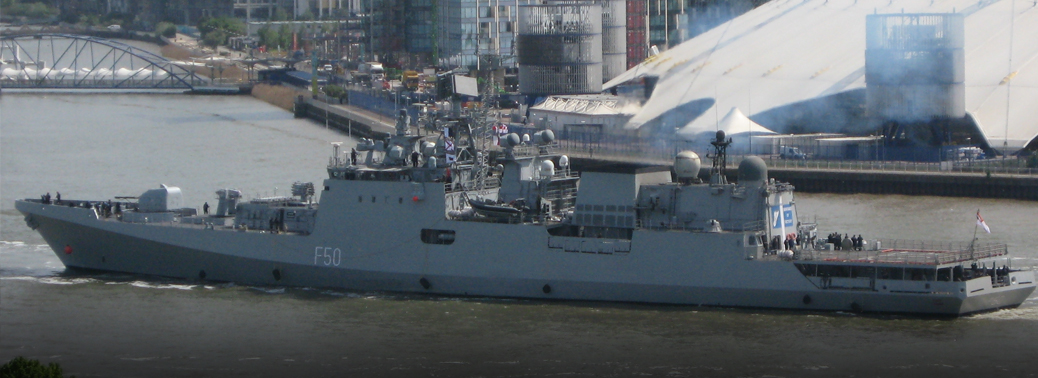
Context:
- INS Tarkash, a frontline warship of the Indian Navy, made a port call at Karlskrona, Sweden
- This marks the first visit of an Indian Naval Ship to Swedish shores after a gap of more than 15 years.
About:
- INS Tarkash (F50) is the second Teg-class frigate constructed for the Indian Navy. She is part of the second batch of Teg-class frigates ordered by the Indian Navy.
- Operation Raahat
- v In March 2015, Tarkash was deployed with INS Mumbai and INS Sumitra as part of Operation Raahat to provide protection and support to Indian ships and aircraft involved in the evacuation of Indian citizens from Yemen during the military intervention.
Indian Navy and Sweden Navy:
- The visit is part of Indian Navy’s mission of building ‘Bridges of Friendship’ and strengthening international cooperation with friendly countries.
- The current visit seeks to underscore India’s peaceful presence and solidarity with friendly countries, thereby allowing both India and Sweden to meet the growing challenges of the maritime environment.
- India and Sweden have had a number of high-level bilateral visits and interactions resulting in a rapid growth in relations across a broad spectrum.
- The two navies have also been regular contributors to the global operations against piracy.
KULBHUSHAN JADHAV CASE
18, Jul 2019

- Context- ICJ verdict delivered in the Kulbhushan Jadhav case
What is the Case:
- Mr. Jadhav, a retired Indian Navy officer was sentenced to death by a Pakistani military court on charges of espionage and terrorism in April 2017.
- India approached the ICJ in May 2017 against Pakistan for denying consular access to Mr. Jadhav.
Indian stand on case
- India has said the sentence is based on an “extracted confession”.
- India has argued
- The sentence violates international law and provisions of the Vienna Convention;
- India is entitled to restitution in integrum (restoration to original condition);
- The ICJ should annul the military court decision and restrain Pakistan from giving effect to the sentence or conviction; and
- Pakistan should be directed to release Jadhav immediately and facilitate his safe passage to India.
- If the ICJ were to find that Jadhav is not to be released, then India has requested:
- Annul the military court decision and restrain Pakistan from giving effect to the sentence; or
- Direct it to take steps to annul the military court decision; or
- Direct a trial under ordinary law in civilian courts, after excluding his confession and in strict conformity with provisions of the International Covenant on Civil and Political Rights, with full consular access and a right to India to arrange for his legal representation.
Pakistan stand:
- Pakistan has asked the ICJ to “dismiss or declare inadmissible” India’s claim.
- It rejected India’s argument that the military courts don’t have officers with judicial expertise and experience, and said Pakistan’s courts are “extremely independent”.
ICJ Verdict on Jadhav Case:
- verdict that accepted India’s plea that former Indian naval officer Kulbhushan Jadhav’s trial under espionage and terror charges in Pakistan violated international law.
- Pakistan should “review and reconsider” his conviction and death sentence.
- Pakistan should give the Indian government consular access to Mr. Jadhav.
Vienna Convention:
- consular access constituted a “breach” of article 36 para 1(b) of the Vienna Convention on Consular Relations (1963) which Pakistan is a signatory to, which stipulates that all foreign nationals arrested must be given access to their government or local embassy, and rejected Pakistan’s counterclaim that the Vienna convention didn’t apply in a case of espionage.
Are ICJ Judgments Binding?
- Judgments delivered by the court (or by one of its chambers) in disputes between states are binding upon the parties concerned.
- Article 94 of the United Nations Charter provides that “each Member of the United Nations undertakes to comply with the decision of [the court] in any case to which it is a party”.
- Judgments are final and without appeal.
- If there is a dispute about the meaning or scope of a judgment, the only possibility is for one of the parties to make a request to the court for an interpretation.
- In the event of the discovery of a fact hitherto unknown to the court which might be a decisive factor, either party may apply for revision of the judgment.
HR 1044
16, Jul 2019
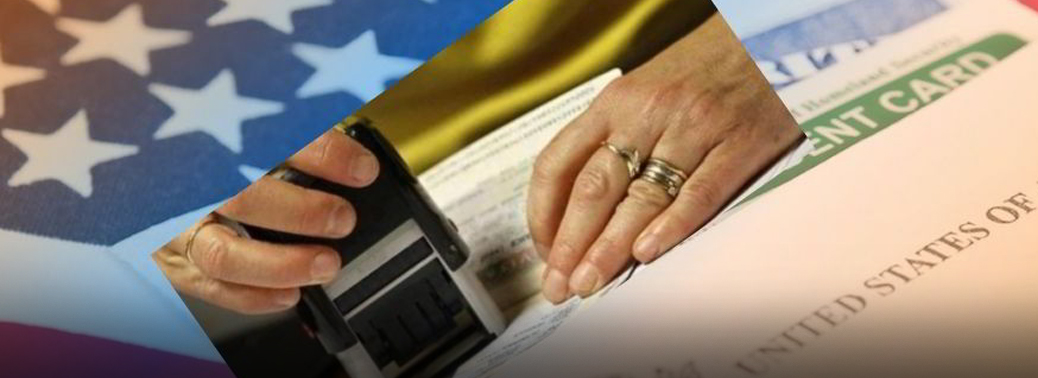
Why in News?
- The US lawmakers passed a Bill titled Fairness for High-Skilled Immigrants Act (HR 1044). It is aimed at lifting the current seven per cent country-cap on issuing Green Cards, a development which would benefit thousands of highly-skilled Indian IT professionals.
HR 1044 to India:
- A change in the existing law can mean that immigrants from countries like India and China seeking permanent residency could expect shorter wait times.
- Indian IT professionals, who under the existing law would have to wait up to 70 years as some studies suggest, can now hope for a fairer system with lesser processing time.
- Apart from removing caps for employment-based Green Cards, caps for family-based categories have also been increased to 15%.
A US based institute released a study in 2018 saying, that based on current law and backlog, Indian nationals holding advanced educational degrees may have to wait over 150 years in order to get a Green Card.
What is a Green Card?
- A Permanent Resident Card, also known as a ‘Green Card’, allows a non-US citizen to live and work permanently in America. Green Card holders can qualify for US citizenship generally after three to five years. Over 10 lakh migrants from around the world are known to receive Green Cards yearly.
Popular Green Card categories:
- Categories of employment-based visas under which Indian professionals are known to apply are the: ‘EB-1’, or priority workers with extraordinary ability
- ‘EB-2’ or those holding advanced degrees, and
- ‘EB-3’ or skilled workers.
- The EB-2 category generally sees the greatest number of applicants.
EMPOWERMENT OF WOMEN
14, Jul 2019
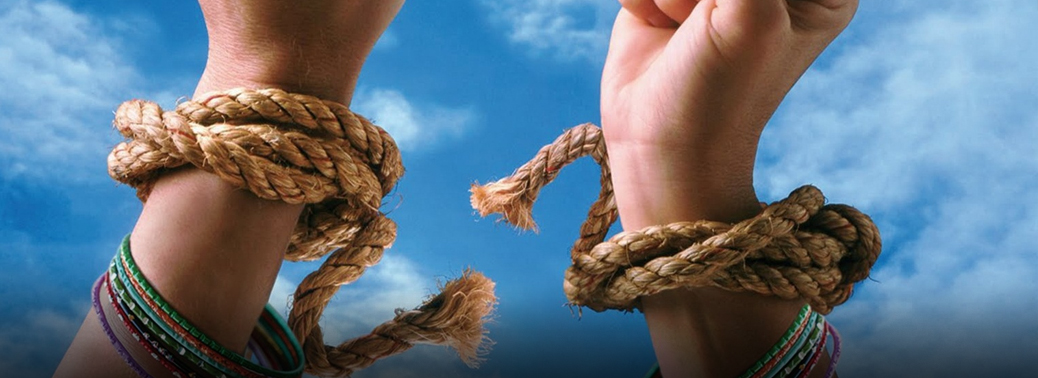
Initiatives by Government:
- Mahila Shakti Kendra scheme empowers rural women through community participation by involvement of Student Volunteers. The scheme is envisaged to work at the national and state level technical support to the respective government on issues related to women is provided.
- Swadhar Greh scheme targets the women victims of unfortunate circumstances who are in need of institutional support for rehabilitation so that they could lead their life with dignity. Ujjawala is a comprehensive scheme to combat trafficking with the objective to prevent trafficking of women and children for commercial sexual exploitation, to facilitate rescue victims and placing them in safe custody, to provide rehabilitation services by providing basic amenities/needs.
- Working Women Hostel aims at providing safe and affordable accommodation to working women. These hostels have Day care facility for the children of inmates too. The Ministry provides financial support for establishing such hostels by NGOs or State Governments.
- Beti Bachao Beti Padhao (BBBP) scheme – The specific objectives of the scheme include preventing gender biased sex selective elimination; ensuring survival and protection of the girl child and ensuring education and participation of the girl child.
- One Stop Centre (OSC) facilitates access to an integrated range of services including police, medical, legal, psychological support and temporary shelter to women affected by violence. The Scheme is funded through Nirbhaya Fund.
- The Scheme is being implemented since 1st April, 2015 to provide 24 hours emergency and non-emergency response to women affected by violence through referral and information about women related government schemes/programmes across the country. Mahila Police Volunteers (MPVs) Scheme is implemented by the Ministry of Women and Child Development in collaboration with the Ministry of Home Affairs. It envisages engagement of Mahila Police Volunteers in States/UTs.
INDIA AGAIN ABSTAINS AT U.N. VOTE ON SEXUAL MINORITIES
13, Jul 2019
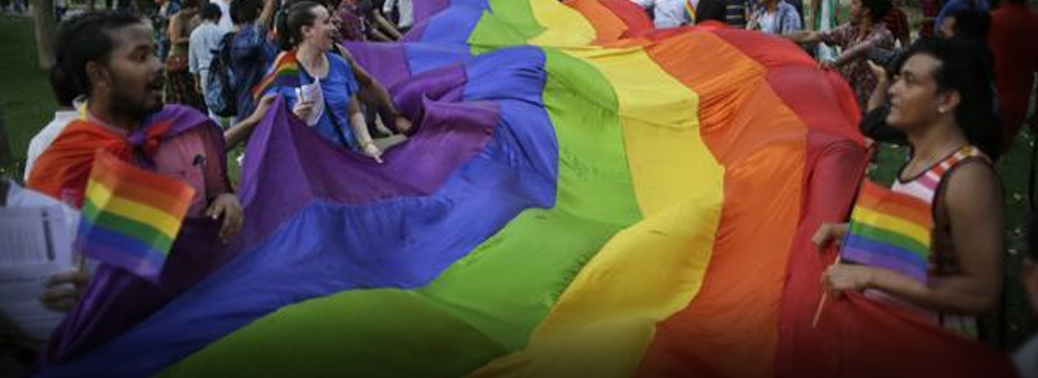
Context:
- India abstained at the vote for extending the mandate of an important UN official who reports on violence and discrimination against sexual minorities.
Issue:
- Human Rights Council (HRC) celebrated the United Nations Human Rights Council’s vote to renew for a second three-year term the mandate of the U.N. Independent Expert on protection against violence and discrimination based on sexual orientation and gender identity.
- India’s abstention at the resolution for term renewal of the Independent Expert on Sexual Orientation and Gender Identity in the UN Human Rights Council.
- Indian delegation had supported some amendments brought by countries that opposed the work of the Independent Expert.
U.N. Independent Expert on Protection Against Violence and Discrimination Based on Sexual Orientation and Gender Identity (IE SOGI):
- Established in 2016 by the U.N. Human Rights Council, the IE SOGI.
- working collaboratively with U.N. and regional leaders, has helped nations develop policies and actions to protect people from discrimination and violence based on sexual orientation and gender identity.
- The Independent Expert oversees the implementation of international human rights law, raises awareness, engages in dialogue with stakeholders and provides advisory and technical assistance.
Connecting Dots in India
- Indian Supreme Court struck down Section 377 and decriminalised the LGBTQ community.
INDIA-RUSSIA STRATEGIC ECONOMIC DIALOGUE (IRSED)
11, Jul 2019
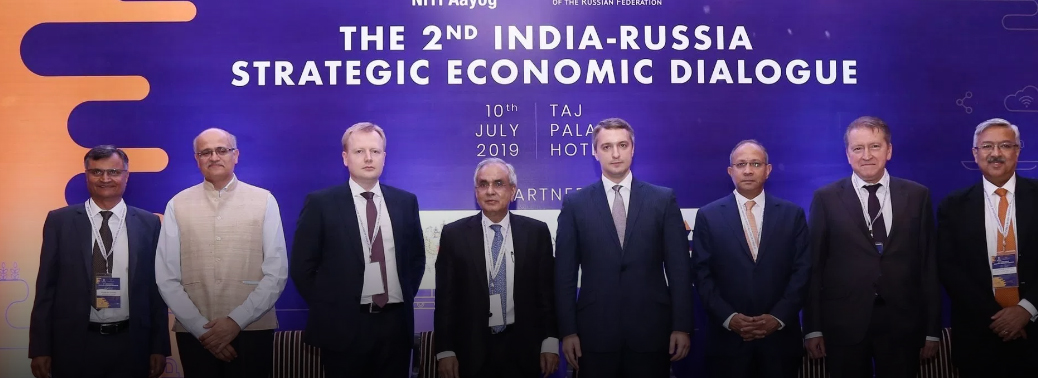
Why in News?
- The Second India-Russia Strategic Economic Dialogue (IRSED) shall be held on 10 July in New Delhi, under the chairmanship of Dr. Rajiv Kumar, Vice-Chairman, National Institution for Transforming India (NITI) Aayog and Mr. Timur Maksimov, Deputy Minister of the Economic Development of the Russian Federation.
India – Russia Strategic Economic Dialogue:
- The IRSED was established following a bilateral Memorandum of Understanding (MoU) signed between NITI Aayog and the Ministry of Economic Development of the Russian Federation during the 19th edition of the Annual India-Russia Bilateral Summit in 2018
- The First India-Russia Strategic Economic Dialogue was held in St. Petersburg between November 25-26, 2018, and was chaired by Mr. Maxim Oreshkin, Minister of Economic Development of the Russian Federation, and Dr. Rajiv Kumar, Vice-Chairman, NITI Aayog.
- The Second meeting of the IRSED shall be focussing on six core areas of cooperation, namely, Development of Transport Infrastructure and Technologies; Development of Agriculture and Agro-Processing sector; Small and Medium Business support; Digital Transformation and Frontier Technologies; Cooperation in Trade, Banking, Finance, and Industry; and Tourism & Connectivity.
INTERNATIONAL COURT OF JUSTICE (ICJ)
05, Jul 2019

Context– Kulbhushan Jadhav case verdict on July 17
About ICJ:
- The International Court of Justice (ICJ) is the principal judicial organ of the United Nations (UN).
- It was established in June 1945 by the Charter of the United Nations and began work in April 1946.
- The seat of the Court is at the Peace Palace in The Hague (Netherlands). Of the six principal organs of the United Nations, it is the only one not located in New York.
Functions:
- The Court’s role is to settle, in accordance with international law, legal disputes submitted to it by States and to give advisory opinions on legal questions referred to it by authorized United Nations organs and specialized agencies.
- It has the jurisdiction to settle disputes between countries and examine cases pertaining to violation of human rights according to the tenets of international law.
- It is the judicial arm of the United Nations.
Composition:
- The Court is composed of 15 judges, who are elected for terms of office of nine years by the United Nations General Assembly and the Security Council.
These organs vote simultaneously but separately. In order to be elected, a candidate must receive an absolute majority of the votes in both bodies. - In order to ensure a measure of continuity, one third of the Court is elected every three years. Judges are eligible for re-election. of the 15 judges, it is mandated that three should be from Africa, two from Latin America and the Caribbean, three from Asia, five from Western Europe and other states, and two from Eastern Europe.
Qualification of Judges:
- All nominees should have a ‘high moral character,’ and credentials commensurate with those expected from the highest judicial officials of those countries. The Charter also makes it mandatory for judges to have recognised competence in international law.
Kulbhushan Jadhav Case:
- Mr. Jadhav, a retired Indian Navy officer was sentenced to death by a Pakistani military court on charges of espionage and terrorism in April 2017.
- India approached the ICJ in May 2017 against Pakistan for denying consular access to Mr. Jadhav.
- India challenged the “farcical trial” by the military court against Mr. Jadhav.
India based its case on two broad issues — - Breach of Vienna Convention on consular access
- The process of resolution
Pakistan Stand
- Pakistan on its part insisted that the Indian Navy officer was a “spy” and not a businessman.
- Pakistan had rejected India’s plea for consular access to Jadhav at the ICJ, claiming that New Delhi wants to get the information gathered by its “spy”.
IRAN’S NUCLEAR DEFIANCE
03, Jul 2019

- Context: Iran has announced that it has amassed more low-enriched uranium than allowed under a nuclear deal signed with the US and other countries in 2015.
- The deliberate violation of the provisions of that agreement, Iran has said, was in response to the reimposition of economic and other sanctions by the US after it unilaterally pulled out of the deal last year.
- Iran’s latest move has put further strains on an already precarious agreement that seeks to prevent it from acquiring nuclear weapons in exchange for the easing of economic sanctions. But Iran has kept the room open for negotiations, saying its move was “reversible”.
What Is Enriched Uranium, And How Much Has Iran Accumulated?
- Uranium is the most common fuel used in nuclear reactors, and is required for nuclear electricity generation as well as to make nuclear weapons.
- On the other hand, naturally occurring uranium, which is predominantly composed of a stabler isotope, uranium-238, is not fissionable, meaning its nucleus cannot be split in a way that can sustain a chain reaction.
- To be used in nuclear reactors, natural uranium has to be ‘enriched’ with uranium-235 that can sustain fission chain reactions.Naturally occurring uranium has less than 1% of the uranium-235 isotope.
- Even a small amount of enrichment, in the range of 3% to 5%, called “low enrichment”, is sufficient to run nuclear power reactors which allow only controlled fission reactions.
- For making nuclear weapons, however, “highly enriched” uranium — with more than 90% uranium-235 — is needed.
- More enrichment means more uranium-235 nuclei are available to be split, which in turn means greater heat and energy can be generated.
Under the 2015 nuclear deal, Iran is required to ensure that, for the next 15 years, its stockpile of uranium is not enriched beyond 3.67%. - Further, this stockpile of 3.67% enriched uranium itself is not supposed to exceed 300 kg.
- It is this 300-kg limit that Iran has now said it has exceeded.
- However, it has not specified how much more low-enriched uranium it has created.
- Iran has also said that its next step would be to enrich uranium beyond the 3.67% limit.
Under What Circumstances Was the Deal With Iran Signed?
- The deal signed in July 2015 was an attempt by the US and other major world powers to ensure that Iran did not acquire nuclear weapons, which it has been suspected of trying to do for several years now.
- The International Atomic Energy Agency (IAEA), which is a sort of an international regulatory body on nuclear energy, had in 2003 reported the possibility of Iran secretly trying to develop nuclear weapons at one of its nuclear facilities. That had invited economic sanctions from the US and other countries.
- After protracted negotiations that lasted over a decade, Iran and the US reached an agreement to restrict Tehran’s nuclear programme to only civilian uses in exchange for lifting of the sanctions.
- Apart from the US, the other parties to the deal are Russia, the UK, France, China and Germany, together called the P5+1.
- The complex agreement specifies a large number of steps that Iran needs to take and requirements that it needs to meet to keep the economically crippling sanctions away.
- Most of the provisions of this agreement are supposed to run for the next 15 years, but some, like international monitoring of Iran’s uranium mines and mills, or of its nuclear power production facilities, are meant to be in force for the next 25 years.
- In return, the US agreed to cease its sanctions against Iran’s oil and banking sector, allowing their re-entry into the international systems.
- It also allowed the sale of commercial passenger aircraft to Iran, which had been put on hold. The UN and European Union also eased their own sanctions on Iran.
Why Did the US Withdraw from The Deal And Reimpose Sanctions?
- The agreement was negotiated when the Barack Obama administration was in power in the US. Current President Donald Trump has never shied away from expressing his discomfort with the deal, which he claims, was detrimental to the American interests.
- The Trump administration has advocated tougher provisions in the agreement, particularly with regard to the expiry dates on restrictions related to uranium enrichment. It does not want these restrictions to have any end-date.
- After its offer to renegotiate the deal did not find acceptance from Iran, the US withdrew from the deal last year. It also slapped fresh sanctions on Iran.
- The five other countries, however, continued to be parties to the deal, thereby weakening the impact of US sanctions.
- However, these sanctions were still damaging enough for Iran to finally respond after a year.
What Happens to The Deal Now?
- Iran’s defiance of the provisions of the agreement is being seen as largely a bargaining ploy in its ongoing confrontation with the US, especially since it has explicitly said that it was open to reversing its decision if the sanctions against it were lifted.
- It is being seen as an attempt to put pressure on the other parties to convince the US of the need to keep the agreement, however fragile, in place.
- The Trump administration, however, has maintained a hardened stance towards Iran, and, in the absence of a diplomatic breakthrough, this could result in the unravelling of the deal.
GEOPOLITICS OF INDO-PACIFIC
02, Jul 2019
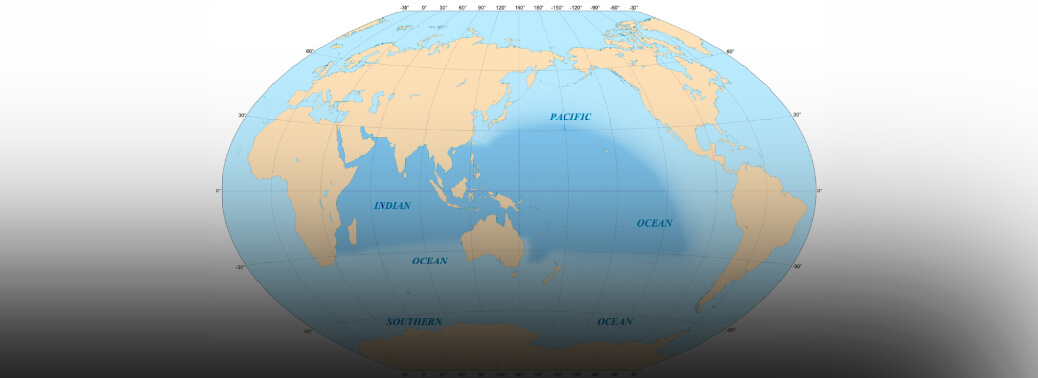
Location-
- Geographically, the Indo-Pacific refers to the Indian and the Pacific Oceans between the east coast of Africa and the American west coast and their several littoral countries.
Indo Pacific Relevance:
- Term to denote an economic and strategic community, it has been in use among scholars of international relations and geopolitics since the first decade of this century, around the same time as China’s rise.
- The Pacific and the Indian Oceans are now bringing about a dynamic.
- coupling as seas of freedom and of prosperity.
- US and India two countries have the ability and the responsibility to
- ensure that it broadens yet further and to nurture and enrich these seas
- to become seas of clearest transparency.
Austrialia:
- Australia began re-imagining its security and trade policies through a new regional lens in 2011-2102, that Indo-Pacific became its way to position itself to play a larger role in Asia, as an ally of the US and Japan.
- White Paper on ‘Australia and the Asian century’, following it with a national security policy document, ‘Strong and Secure – A Strategy for
Australia’s National Interest’ at the beginning of 2013. Both dealt in detail with the term Indo-Pacific. - western Pacific Ocean and the Indian Ocean would come to be considered as one strategic arc. This conception is being driven by the increased economic interaction between South, Northeast and Southeast Asia and the importance of the lines of energy supply to Asia from the Middle East.” Australia stance partnership between US and India is in the interests of a “free and open Indo-Pacific”.
India as more reliable than China:
- Australia need to collaborate with India to ensure that the Indo- Pacific is increasingly a place of peace, stability, and growing prosperity— so that it does not become a region of disorder, conflict, and predatory economics.”
US stance:
- Indo-Pacific was being used more frequently by the Trump Administration, entirely replacing the earlier “Asia-Pacific”, a move recognised by analysts as redefining the region away from China’s economic and strategic dominance.
- Indo-Pacific had been described as a region where “geopolitical competition between free and repressive visions of world order is taking place” – China and North Korea on one side and all others on the other.
- US National Security Strategy document, in 2017, the Indo-Pacific is described as the region from the “west coast of India to the west coast of the United States”.
Indian Stance:
- The move away from Asia-Pacific also seemed to elevate India to a position of prominence in the region, as a US ally that would help to contain China’s dominance.
- Adoption of the term also appeared to challenge India to play a larger role in the region, for instance in the Quad, or the Quadrilateral Security Dialogue that informally brings together for strategic talks and military exercises, the US, Japan, Australia and India.
- India Says that Indo-Pacific is for peace, security, stability, prosperity and rules, not against anybody.
- India looks at it as a wider region, which extends all the way to West Asia and and the east coast of Africa. For India, as important as securing the east, is its western maritime security, where the Indian Ocean and Arabian Sea meet.
G-20 SUMMIT
30, Jun 2019
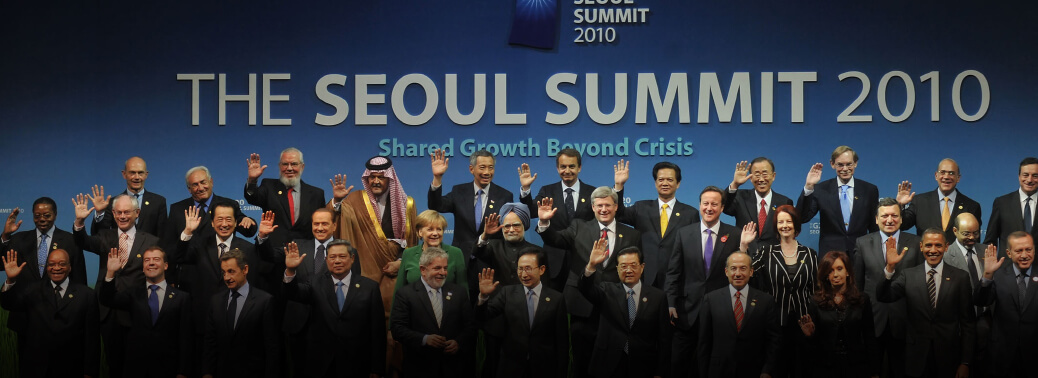
Why in News?
- After the Asian Financial Crisis in 1997-1998, it was acknowledged that the participation of major emerging market countries is needed on discussions on the international financial system, and G7 finance ministers agreed to establish the G20 Finance Ministers and Central Bank Governors meeting in 1999.
- The G20 Finance Ministers and Central Bank Governors meetings were centered on major economic and monetary policy issues amongst major countries in the global financial system and aimed at promoting cooperation toward achieving stable and sustainable global economic growth for the benefit of all countries. The participating members in the meetings were the same as the current G20 members.
G-20:
- The Group of 20 nations (G20) is an international grouping made up of Argentina, Australia, Brazil, Canada, China, the European Union, France, Germany, India, Indonesia, Italy, Japan, Mexico, Russia, Saudi Arabia, South Africa, South Korea, Turkey, the United Kingdom, and the United States.
- The G20 Summit is formally known as the “Summit on Financial Markets and the World Economy”.
- Spain is a permanent guest invitee. It was established in 1999 to broaden the remit of the G7 – a grouping of the world’s most powerful nations, and its primary mandate is to “prevent future international financial crises”.
- The host country of the G20 summit leads the group over the course of one year from December through the following November as the G20 presidency. The G20 presidency also organizes relevant ministerial and working group meetings.
- Leaders initially met twice a year, but this was reduced to once a year since 2011. The leaders’ meetings are usually preceded by ministerial meetings by trade ministers, finance ministers and central bank governors, which are designed to set the agenda for the meetings of the world’s most powerful leaders.
Achievements:
- In 2009, when the UK held a special spring summit, former Prime Minister Gordon Brown orchestrated a deal in which world leaders agreed on a $1.1 trillion injection of financial aid into the global economy.
- The G20 so far has made important progress in reshaping the governance of global finance by implementing macro-prudential policies, developing strict rules on the “too big to fail” problem, increasing the lending capacity of the International Monetary Fund (IMF) and collecting richer information on the shadow banking system.
- The G-20 has also played a crucial role in strengthening the international financial regulatory system, including better coordination across countries.
Challenges:
- The G20 is widely perceived to have failed to address global inequality. The expansion of the G7 to include more emerging economies brought hope that this would be addressed, but in most member states, inequality is widening.
- The G20, like many plurilateral organisations, is often dismissed as a “talking shop”, where leaders offer plenty of bluster, but achieve very little material progress.
Osaka Meet decisions concerning India:
- 2019 G20 meet happened in Osaka Japan
- Prime Minister Narendra Modi and United States President Donald Trump came closer to resolving trade issues when they met in Osaka, but on technological issues such as data storage and 5G network, India placed itself across the divide from Japan and the U.S. and alongside leaders of BRICS. The initiative for free flow of data, announced by Japanese Prime Minister Shinzo Abe in January, came after the Reserve Bank of India’s guidelines mandating that the storage of all financial data, including by multinational companies, must be kept on servers in India.
INDIA-JAPAN BILATERAL RELATIONS.
28, Jun 2019

- Japan has remarked the sale of U.S-2 aircraft as part of the goal for realising a “Free and Open Indo-Pacific”.
- India and Japan have been negotiating the US-2 amphibious aircraft deal for the last six years or so, but there has been no headway due to the high price.
Significance of Indo-Pacific:
- The two countries have been deepening their cooperation on “Free and Open Indo Pacific” in the wake of an assertive and pro-active China, and they now participate in the Malabar exercises and also hold the Quadrilateral meeting with the US and Australia.
In the context of the same:
- Japan is also preparing for early holding of the 2+2 ministerial meeting between the two countries. Japan is the second country to have a dialogue with India, after the US.
- Making progress in the cooperation for promoting connectivity through high-quality infrastructure, and Work to concretize defence and security cooperation.
- The other areas of cooperation were:
- Importance of defence
- Outer space
- Digital economy
- Mumbai Ahmedabad high speed railway project
- Convention Centre in Varanasi
- Infrastructure projects in North-East India
- A cancer hospital in Kenya
- India is also willing for a new initiative with Japan, which is a coalition of countries for disaster-resilient infrastructure, and the need to enhance capacity building abilities of countries.
PROGRESS OF THE WORLD’S WOMEN 2019-2020: FAMILIES IN A CHANGING WORLD
27, Jun 2019

- Published by- United Nations
Highlighted Points:
- While non-marriage remains extremely rare in India, where less than 1% of all women aged 45-49 have never been married, the number of divorcees has doubled over the past two decades.
- despite increasing rates of divorce, only 1.1% of women are divorced, with those in urban areas making up the largest proportion in India Age of marriage has increased in all regions, while birth rates have declined, and women have increased economic autonomy.
- It also puts a spotlight on the challenges that women and their families face when they migrate.
- that families, in all their diversity, “can be critical drivers of gender equality, provided decision-makers deliver policies rooted in the reality of how people live today, with women’s rights at their core.
- It also points out that families serve as a home for equality and justice, which is not only a moral imperative, but essential to achieve the Sustainable Development Goals.
Recommendation by Reports:
- Amending and reforming family laws to ensure that women can choose whether, when and who to marry; that provide the possibility of divorce if needed; and enable women’s access to family resources.
- Recognize diverse forms of partnership, to protect women in cohabiting and same-sex partnerships. Invest in public services, especially reproductive healthcare, to expand women’s and girls’ life choices. Push for social protection systems, such as paid parental leave and State support for children and older care to sustain families.
- Ensure women’s safety by implementing laws to eliminate violence against women and girls and provide justice and support for violence survivors.
UNITED NATIONS SECURITY COUNCIL
27, Jun 2019
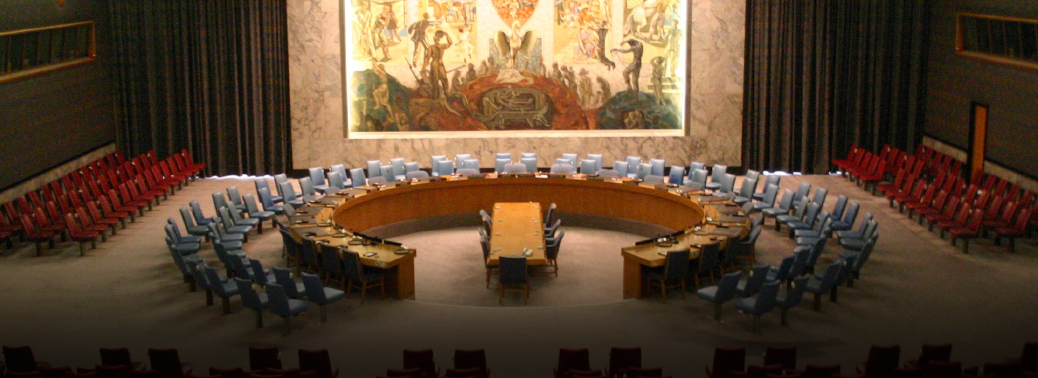
Context:
- India won non-permanent seat in UN security council for 2021-2022.
- All 55 members of Asia Pacific supported India’s bid for Membership to UNSC
- China and Pakistan both supported our bid for membership.
- Previously, India has been elected as a non-permanent member of the Council for the years 1950–1951, 1967–1968, 1972–1973, 1977–1978, 1984–1985, 1991–1992 and most recently in 2011–2012.
What is UNSC:
- Organ of United Nations Organisation
- The Security Council is primarily responsible for the maintenance of international peace and security.
Members:
- It has 15 Members, and each Member has one vote. Under the Charter of the United Nations, all Member States are obligated to comply with Council decisions.
- Five Permanent Members: China, France, Russian Federation, The United Kingdom, and The United States,and ten non-permanent members elected for two-year terms by the General Assembly (with end of term year):
- Belgium (2020), Cote d’Ivoire (2019), Dominican Republic (2020), Equatorial Guinea (2019), Germany (2020), Indonesia (2020), Kuwait (2019), Peru (2019), Poland (2019), South Africa (2020).
VETO Power:
- Role of non-permanent members in the work of the Security Council is limited since right of veto is restricted only to the permanent members in the UNSC.
- Under the terms stipulated by the UN Charter, the right of veto of the permanent members of the Security Council is restricted, i.e. it does not apply in cases of a procedural nature (related primarily to the functioning of the Security Council itself).
The Regional Groupings in UN are:
- African Group
- Asia and the Pacific Group
- Eastern European Group
- Latin American and Caribbean States Group (GRULAC)
- Western European and Others Group (WEOG)
- UN member not in any voting group
India’s Stand- UNSC:
- India has been calling for the reform of the UN Security Council along with Brazil, Germany and Japan for long, emphasizing that it rightly deserves a place at the UN high table as a permanent member.
- India was among the Founding Members of United Nations.
- It is the second largest and a one of the largest constant contributors of troops to United Nations Peacekeeping Missions.
- Today, India has over 8,500 peacekeepers in the field, more than twice as many as the UN’s five big powers combined.
- India, since long time, has been demanding expansion of UNSC and its inclusion as permanent member in it. It has been a member of UNSC for 7 terms and a member of G-77 and G-4, so permanent membership is a logical extension.
GENERALIZED SYSTEM OF PREFERENCE
26, Jun 2019
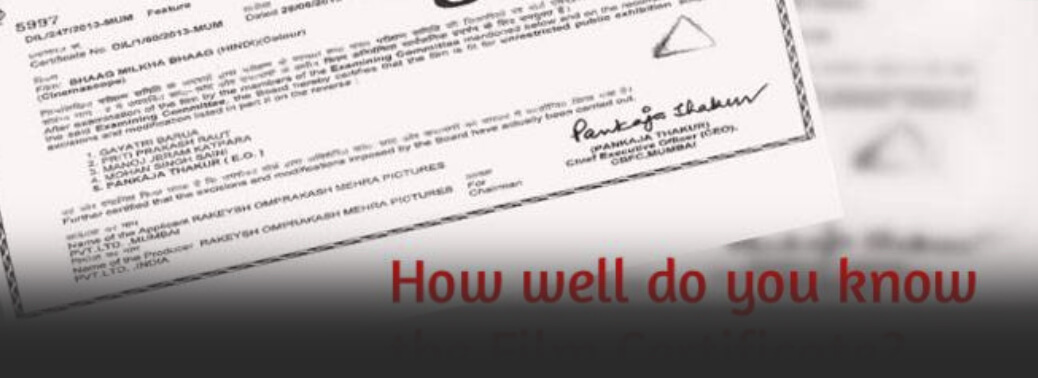
- The Generalized System of Preference (GSP) is the largest and oldest US trade preference programme and is designed to Promote Economic Development by allowing duty-free entry for thousands of products from designated beneficiary countries.
- On March 4, Trump announced that the US intends to terminate India’s designations as a beneficiary developing country under the GSP programme. The 60-day notice period ended on May 3. Under the GSP programme, nearly 2,000 products including auto components and textile materials can enter the US duty-free if the beneficiary developing countries meet the eligibility criteria established by Congress.
- India was the largest beneficiary of the programme in 2017 with USD 5.7 billion in imports to the US given duty-free status and Turkey the fifth largest with USD 1.7 billion in covered imports. The GSP criteria includes, among others, respecting arbitral awards in favour of the US citizens or corporations, combating child labour, respecting internationally recognised worker rights, providing adequate and effective intellectual property protection, and providing the US with equitable and reasonable market access.
DEFENCE POLICY GROUP
26, Jun 2019
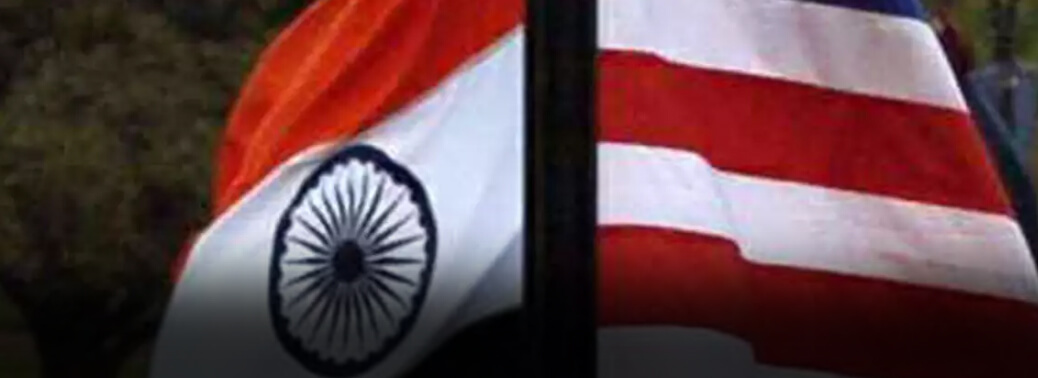
- India and the US are planning to revive the Defense Policy Group (DPG) between the two countries after a four-year gap.
- The last DPG, co-chaired by India’s defense secretary and US Under-secretary of defense for policy, was held in 2015.
- The decision to revive the DPG was taken in the Two-Plus Two meeting between the foreign and defense ministers of the two countries.
- DPG will review the reports of existing sub-groups — Military Cooperation Group, Joint Technology Group, Senior Security Technology Group and the Defense Procurement and Production Group. DPG will also only lay the future roadmap for joint advanced exercises between two countries, and look at the prospect of technological cooperation in building military hardware under Make in India.
GEO-SPATIAL COOPERATION AGREEMENT (BECA)
26, Jun 2019
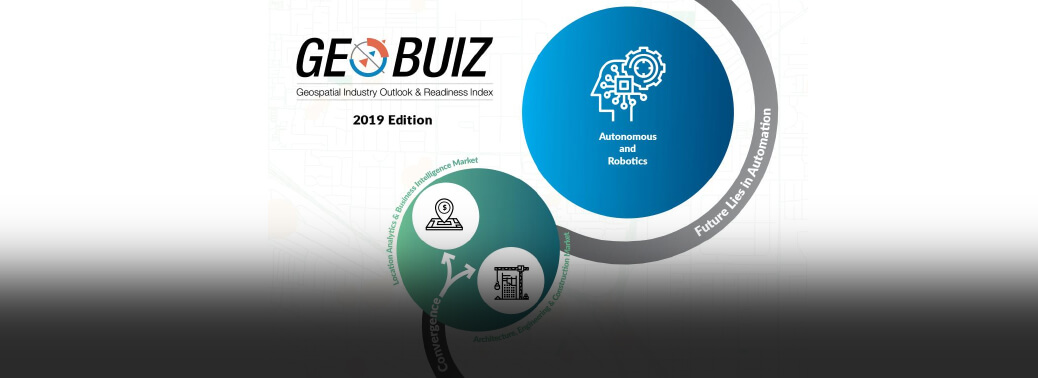
- Basic Exchange and Cooperation Agreement
- BECA will allow India to use US geospatial maps to get pinpoint military accuracy of automated hardware systems and weapons such as cruise and ballistic missiles.
- Along with Communications Compatibility and Security Agreement (COMCASA), and Logistics Exchange Memorandum of Agreement (LEMOA), BECA is one of the foundational military communication agreements between the two countries.
- BECA is an important precursor to India acquiring armed unmanned aerial vehicles such as the Predator-B from the US.
- The Pentagon in 2018 was ready to supply Predator-B, which uses spatial data for accurate strikes on enemy targets, to India.
EASTERN ECONOMIC FORUM
25, Jun 2019
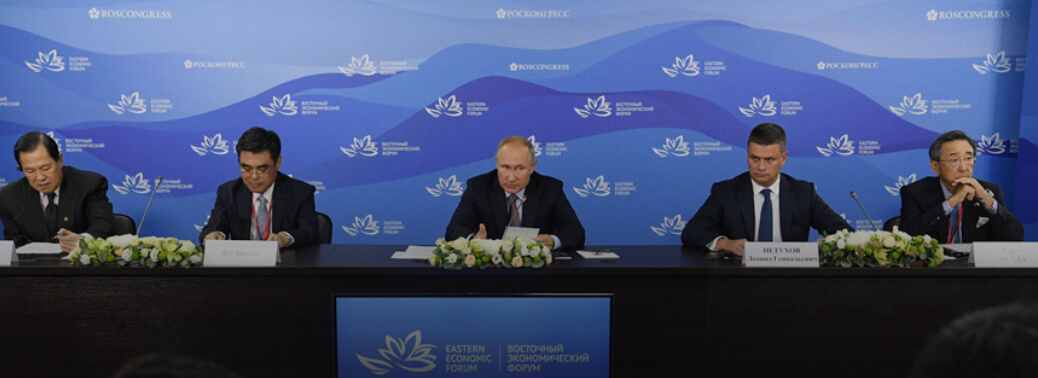
- The Eastern Economic Forum was established by Decree of the President of the Russian Federation Vladimir Putin in 2015. In accordance with the Decree, the Eastern Economic Forum takes place each year in Vladivostok.
- Every year, the Eastern Economic Forum serves as a platform for the discussion of key issues in the world economy, regional integration, and the development of new industrial and technological sectors, as well as of the global challenges facing Russia and other nations.
Objectives:
- Strengthening ties between the international investment community, Russian business, and federal, regional, and local government bodies
- Conducting a comprehensive expert assessment of the economic potential of the Russian Far East and improving the region’s competitiveness and attractiveness to investors both nationally and internationally
- Showcasing new investment and business opportunities such as advanced special economic zones, Vladivostok Free Port, and state support for high-potential investment projects
- India and China will meet along with Russia in the side-lines of Easter Economic Forum apart from a trilateral meeting during the G20 summit. Such a meeting would add weightage to the global significance of Eurasian region.
REGIONAL COMPREHENSIVE ECONOMIC PARTNERSHIP (RCEP)
25, Jun 2019
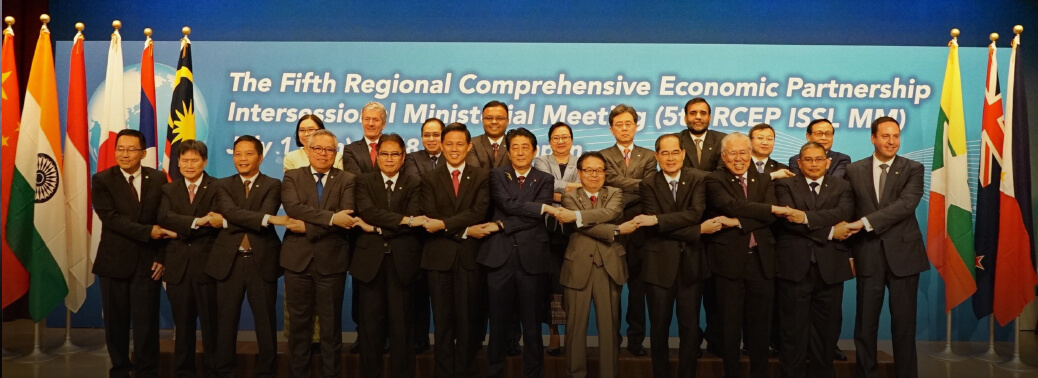
- The Regional Comprehensive Economic Partnership (RCEP) is a mega-regional economic agreement being negotiated since 2012 between the 10 ASEAN (Association of South-East Asian Nations) governments and their six FTA partners: Australia, China, India, Japan, New Zealand and South Korea.
- The agreement’s contents, the proposed RCEP would cover almost every aspect of economy such as goods, services, investment, economic and technical cooperation, intellectual property rights (IPR), rules of origin, competition and dispute settlement.
- The negotiations have missed several deadlines repeatedly, even though they have gained momentum since 2016.
Issues of concern for India:
- Japan and South Korea are channelling demands by big pharma for longer patent terms and for monopoly rights over clinical trial data. These provisions could undermine access to price-lowering generic medicines, and thus, life-saving treatment for millions of people in the developing world.
- The RCEP would threaten livelihoods in sectors like dairy, meat and other agricultural products by allowing duty free imports of subsidised products from Japan, New Zealand and Australia. India, with 100 million small scale dairy producers, and Vietnam are among the countries that will be most affected.
- One of the provisions proposed in RCEP will allow governments to treat foreign investors as they treat locals. This means that large corporations will be able to grab land, displacing local subsistence farmers.
- India’s trade deficit [annual] with RCEP nations is about $100 billion, and half of this is with China alone even without an FTA with China. Post India’s FTA with ASEAN, Japan and Korea [who are all RCEP members], our trade deficit with them have increased, and the government needs to take this into account during RCEP negotiations.
- Visa Norms– India’s push for easier norms on movement of professionals across borders for short-term work in 16 Asia-Pacific nations, including itself, under a proposed mega Free Trade Agreement (FTA) — is learnt to have found favour with some ASEAN-bloc members. To date, no official text has been made public, even though the agreement would affect several billion people. This continues to fuel concerns.
Report on International Religious Freedom
24, Jun 2019
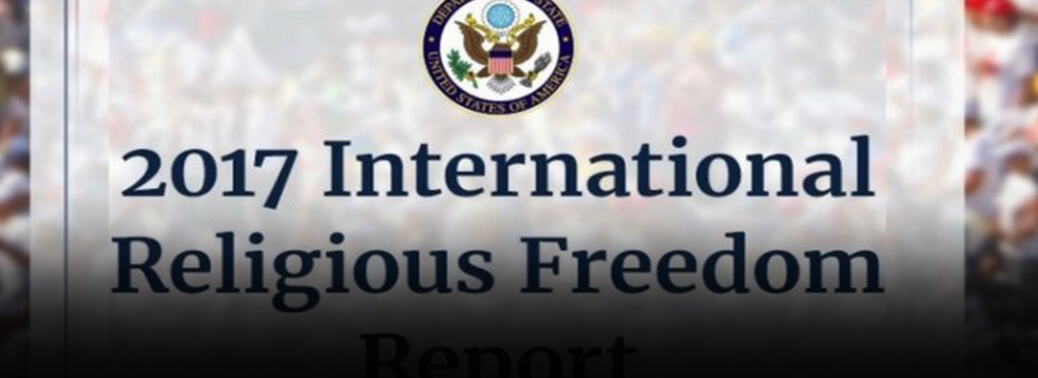
- The International Religious Freedom Report – describes the status of religious freedom in every country.
- The report covers government policies violating religious belief and practices of groups, religious denominations and individuals, and U.S. policies to promote religious freedom around the world.
- The U.S. Department of State submits the reports in accordance with the International Religious Freedom Act of 1998.
Report States that:
- An Annual Report on International religious freedom released by US Secretary of State Pompeo said Hindu groups had used “violence, intimidation, and harassment” against Muslims and low-caste Dalits in 2017 to force a religion-based national identity.
- Groups claiming to protect cows – considered sacred by Hindus – have attacked Muslims and Dalits. Christians have also been targeted for proselytizing since Modi came to power in 2014.
- National Register of Citizenship in north-eastern state Assam, which could land millions of minorities stateless, also got noticed in the report.
- Indian Stand- MEA rejects U.S. report on state of religious freedom in India A foreign govt. has no locus standi to pronounce on the rights of our citizens
INDIA TO RAISE TERROR, FINANCIAL CRIMES AT G20 SUMMIT
22, Jun 2019

Theme “Human Centered Future Society”
- Issue to be taken up:
-
- Digital economy
- Artificial Intelligence
- Global Health
- Ageing
- Marine Plastic
What is DFFT or Data Free Flow with Trust?
- This is a new principle emerging among the global economies where they wish unrestricted, yet accountable flow of data over a localized data.
- It underlying principles are:
- Rather than tell firms where they can store or process data, policymakers should hold firms accountable for managing data they collect, regardless of where they store or process it.
- Countries should revise the inefficient processes and outdated legal agreements that govern law enforcement requests for access to data stored in another country’s jurisdiction.
- Countries should develop the legal and administrative frameworks (with respective checks and balances) that allow Internet service providers to block data flows that involve the illegal distribution and use of unlicensed content.
- Countries should support and not undermine encryption’s role in securing data flows and digital technologies.
Money-laundering and its prevention:
Terror Funding:
What is FATF?
- The Financial Action Task Force (FATF) is an inter-governmental body
- established in 1989 by the Ministers of its Member jurisdictions.
- The objectives of the FATF are to set standards and promote effective implementation of legal, regulatory and operational measures for combating money laundering, terrorist financing and other related threats to the integrity of the international financial system.
- The FATF currently comprises 36 member jurisdictions and 2 regional organisations, representing most major financial centres in all parts of the globe.
- In June 2018, Pakistan was placed in the ‘grey list’ and given a 27 point action plan.
What does this mean for the Country?
- Pakistan’s banking channel could be adversely affected as it is inevitably linked with the international financial system.
- Foreign financial institutions may carry out enhanced checking of transactions with Pakistan to avoid risk of violations pertaining to money laundering and financing of terrorism.
- Another affected is the sentiment of foreign investors.
Which are the other countries in the grey list?
- The other countries on the list, in alphabetical order, are Ethiopia, Serbia, Sri Lanka, Syria, Trinidad and Tobago, Tunisia and Yemen.
What is Black List?
- Black list makes more stringent restrictions on the countries in the list. This black list comprises Iran and North Korea.
Other Facts:
- The FATF implements UN designations, which do not warrant arrest.
- They ask only to freeze funds, denial of access to weapons and travel embargo
OPERATION BANDAR CODE
22, Jun 2019
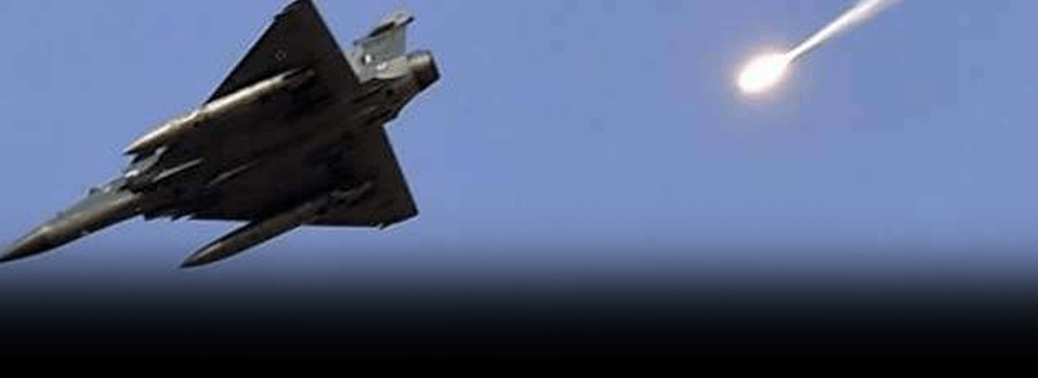
- Operation Bandar’ code name of Balakot strike
Air Strike:
- 12 Mirages having taken off from multiple air bases crossed over into the Pakistani air space and carried out missile attacks in Balakot town of Khyber Pakhtunwa province
H1B VISA FOR IT WORKERS.
21, Jun 2019
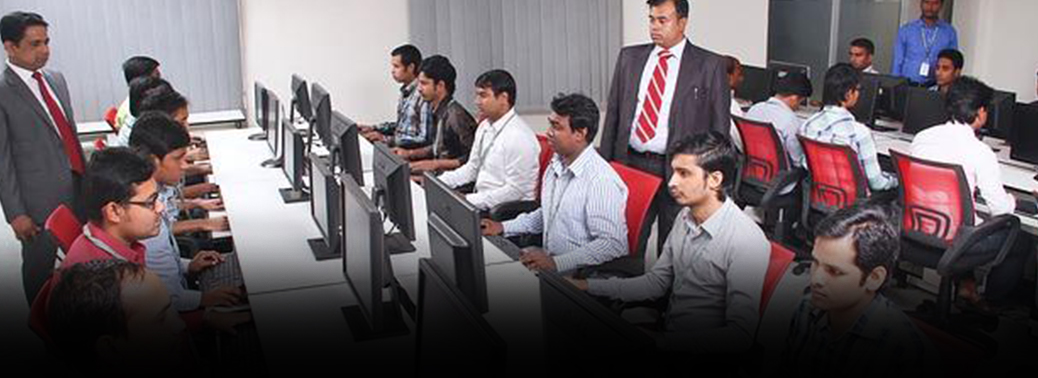
What is H1B Visa?
- The H1B visa is an employment-based, non-immigrant visa for temporary workers.
- For this visa, an employer must offer a job in the US and apply for your H1B visa petition with the US Immigration Department.
Eligibility:
- The H1B visa is issued for a specialty occupation, requires theoretical and practical application of a body of specialized knowledge and requires the visa holder to have at least a Bachelor’s degree or its equivalent.
- The United States Citizenship and Immigration Services sets a limit on how many H1B visas are issued each year.
- These numbers can change as per regulations of the US government. Historically, the cap is placed at 65,000.
- An H1B holder is eligible to seek permanent residency to USA.
What is the Issue all about?
- The US is reviewing the H-1B visa programme, which allows companies to temporarily employ foreign workers in America in speciality occupations.
- The new proposals, if implemented, could impact the profitability of Indian IT companies as it could lead to a reduction in H1-B visa approvals for regular applicants.
- With the visa issuance norms being tightened by restricting access of entry-level programmers coupled with increasing compliance requirements adding to cost pressures, Indian companies have started to ramp up onshore hiring.
- But increased onshore hiring associated with a higher wage bill along with factors such as pricing pressure on commoditised services and wage inflation will negatively impact their margins going forward.
INDIAN NAVY EXECUTES ‘OPERATION SANKALP’
21, Jun 2019
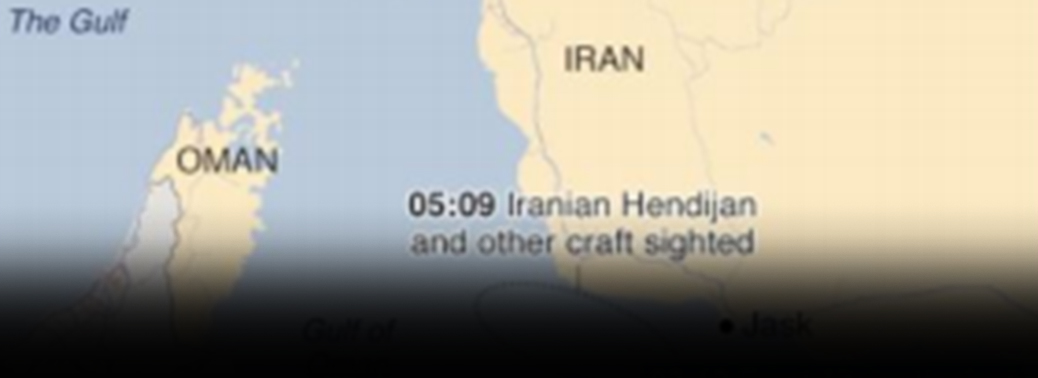
Why in News?
- Indian Navy on Thursday launched Operation Sankalp in the Gulf of Oman to re-assure Indian Flagged Vessels operating/ transiting through Persian Gulf and Gulf of Oman following the maritime security incidents in the region.
- INS Chennai & INS Sunayna have been deployed in the Gulf of Oman and Persian Gulf to undertake Maritime Security operations.
Highlights:
- Amid rising tensions between the US and Iran as well as recent incidents related to maritime security, the Navy has deployed its warships in the Gulf of Oman and the Persian Gulf to reassure the Indian vessels operating and transiting in the region.
- In addition, aerial surveillance by Indian Navy aircraft was also being undertaken in the area.
- The Information Fusion Centre – Indian Ocean Region, which was inaugurated by the Navy in December, 2018 at Gurugram, was also keeping a close watch on the movement of ships in the Gulf region.
- The Indian Navy remains committed to ensuring the safety of Indian maritime trade and merchant vessels operating in the region and contributing towards maintaining a stable and peaceful Indian Ocean Region,” the Navy said.
- It is to be noted that nearly 75% of the world’s maritime trade and 50% of global oil trade is conducted through the Indian ocean region.
Why are There New Tensions?
- In 2015, Iran agreed to a landmark deal with world powers to curb its nuclear development.
- It agreed to limit the enrichment of uranium, which is used to make reactor fuel but also nuclear weapons, and other measures in return for relief from sanctions.
- Mr. Trump abandoned the nuclear accord last year and started to re-impose sanctions.
How do Global Powers see the Situation?
- China urged the US to lower the pressure and for Iran to stick to the nuclear deal, warning of a “Pandora’s box” in the region.
- Russia – another party to the nuclear accord – also called for restraint, calling US actions “truly provocative”.
- Saudi Arabia also blames Iran for the attacks on the two oil tankers, while the UK said it was “almost certain” Iran was behind the blasts.
- But EU Foreign Ministers meeting on Monday warned against jumping to conclusions and backed UN calls for an independent investigation.
CHINA – PHILLIPINES CONFLICT IN S. CHINA SEA
16, Jun 2019

Issue:
- South China Sea is a significant area in the Pacific Ocean.
- It is the major trade route connecting South East Asia to the Pacific Ocean, China and Japan.
- China has been claiming the sovereignty over the South China Sea. This has led to the tensions among the nations surrounding the South China Sea.
- China has been aggressively building artificial island in the area to further their claims in the region and also to establish their military and naval bases in the region. This act has been widely condemned by the
- Western world and also by India.
- India’s stand: The dispute over the Sea should be resolved through International laws and consensus. Especially the laws that govern the sea under the UNCLOS.
- On 15th June a Chinese vessel hit a Phillipino fishing boat which escalated the ongoing tensions.
- It happened near Reed Bank over which Phillipines claims sovereignity as it falls within 200 nautical miles exclusive economic zone of the country. However, Beijing also claims the ownership of Reed bank.
Exclusive Economic Zone:
- It is a law formulated under the UNCLOS or the United Nations Convention on Law of the Sea. It is an area beyond and adjacent to the territorial area; maximum 200 nautical miles from the baselines.
- -Within the EEZ, the coastal state has the sovereignity over the natural resources.
Within an EEZ a state is allowed to do the following:
- Create artificial islands. Marine scientific research.
- Protection and preservation of Marine Environment.
IRAN – US NUCLEAR ISSUE
16, Jun 2019

Context:
- U.S withdrawn from JCPOA after Donald Trump had become the President of the country.
What is JCPOA?
- Joint Comprehensive Plan of Action is an agreement reached between Iran and P5+1 nation on the issue of nuclear enrichment process happening in Iran.
- It was adopted on July 14, 2015 and later endorsed by the United Nations Security Council Resolution 2231 on July 20, 2015.
Who are the Members?
- Iran and (P5= U.S, Britain, Italy, China, Russia) + Germany
Who is the Implementing Agency?
- Iran’s compliance with the nuclear related provisions will be verified by the International Atomic Energy Agency (IAEA).
- Core Issue: The Western nations suspect Iran is enriching uranium to the levels required to make nuclear bombs. Such an action by Iran could trigger an all-out war in the Gulf region as Iran is a hostile nation to most of the Sunni dominated Gulf region and the Western countries.
- Arak Reactor: JCPOA demands Iran to shut down the Arak nuclear reactor. Replace the core of the Arak reactor to reduce the weapons grade plutonium output.
- Fordow: For 15 years no introduction of Uranium to this facility. However, after the U.S withdrawal from the deal, Iran has decided to scale back compliance with a nuclear deal unless the signatories to the JCPOA show positive response.
- CAATSA: Countering America’s Adversaries through Sanctions Act. This law has used by the U. S government to impose sanctions on Iran, Russia and N.Korea.
TWO OIL TANKERS ATTACKED IN GULF OF OMAN, US BLAMES IRAN
14, Jun 2019
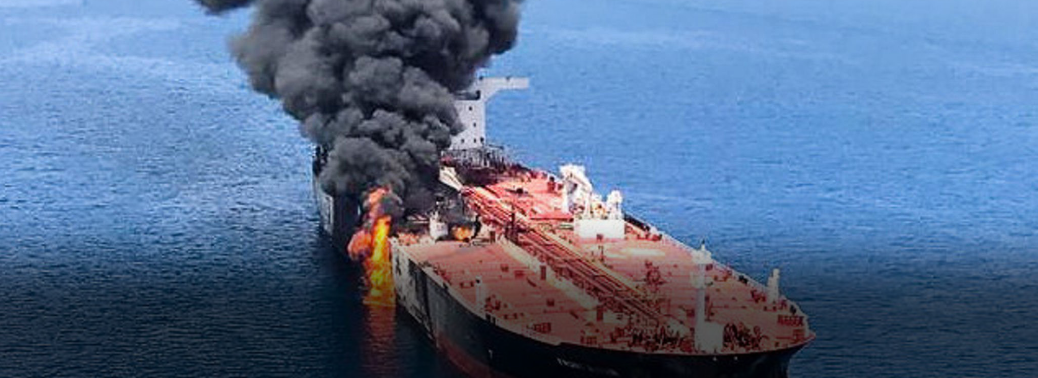
Why in news:
- Two oil tankers have been attacked in the Gulf of Oman, raising regional tensions after a similar incident involving four tankers.
Details:
- The Strait of Hormuz, a vital shipping route linking Middle East oil producers to markets in Asia, Europe, North America and beyond, has been at the heart of regional tensions for decades.
- Strait of Hormuz
- The Strait of Hormuz is a strait between the Persian Gulf and the Gulf of Oman.
- It provides the only sea passage from the Persian Gulf to the open ocean and is one of the world’s most strategically important choke points.
- The waterway separates Iran and Oman, linking the Gulf to the Gulf of Oman and the Arabian Sea.
- The Strait is 21 miles (33 km) wide at its narrowest point, but the shipping lane is just two miles (three km) wide in either direction.
Why does it matter?
- The US Energy Information Administration estimated that 18.5 million barrels per day (bpd) of seaborne oil passed through the waterway in 2016.
- That was about 30 per cent of crude and other oil liquids traded by sea in 2016.
- With global oil consumption standing at about 100 million bpd, that means almost a fifth passes through the Strait.
- Most crude exported from Saudi Arabia, Iran, the UAE, Kuwait and Iraq — all members of the Organization of the Petroleum Exporting Countries are shipped through the waterway.
- It is also the route used for nearly all the liquefied natural gas (LNG) produced by the world’s biggest LNG exporter, Qatar.
- During the 1980-1988 Iran-Iraq war, the two sides sought to disrupt each other’s oil exports in what was known as the Tanker War.
- The US Fifth Fleet, based in Bahrain, is tasked with protecting the commercial ships in the area.
- The fleet ensures that the critical waterway remains open, provocative Iranian military maneuvers are likely in the immediate offing as is a nuclear restart.
- Iran agreed to rein in its nuclear programme in return for an easing of sanctions under a 2015 deal with the United States and five other global powers.
- Washington pulled out of the pact in 2018. Western powers fear Iran wants to make nuclear weapons. Tehran denies this.
- The UAE and Saudi Arabia have sought to find other routes to bypass the Strait, including building more oil pipelines.
Incidents in the strait before:
- In January 2012, Iran threatened to block the Strait in retaliation for US and European sanctions that targeted its oil revenues in an attempt to stop Tehran’s nuclear programme.
- In May 2015, Iranian ships fired shots at a Singapore-flagged tanker which it said damaged an Iranian oil platform, causing the vessel to flee. It also seized a container ship in the Strait. In July 2018, Iranian President hinted Iran could disrupt oil flows through the Strait in response to US calls to reduce Iran’s oil exports to zero.
- A Revolutionary Guards commander also said Iran would block all exports through the Strait if Iranian exports were stopped. The US in turn declared the guards a terrorist organization.
U.S.’S SOUTH ASIA BUDGET TO FALL
13, Jun 2019

Why in News:
- Allocation for India to be raised; those for Afghanistan, Pak. to be rationalised
Back ground:
- The U.S.’s top South Asia diplomat will testify on Thursday before the House Foreign Affairs Committee (HFAC) in a hearing on ‘U.S. Interest in South Asia and FY 2020 Budget’.
- The budget request for India will be increased and those for Afghanistan and Pakistan will be “rationalized”. The overall budget request of $1.07 billion is 16% below the FY2019 request. The annual exercise formally articulates the budget request to Congress but also, in reality, is a forum to discuss foreign policy in the region.
- Ms. Wells will testify that the budget request for India “reflects its pre-eminent role in the Administration’s Indo-Pacific vision and our two countries’ commitment to shared principles and values”.
Coherent India Policy:
- The Trump administration and the HFAC are not in agreement on how foreign policy in South Asia is being conducted.
- the State Department did not have an Assistant Secretary for South and Central Asia and said the Department had failed to come up with a “coherent” India policy.
- The statement talks about the growing bilateral trade with India, a deepening defence relationship but notes the challenges. The U.S. is looking to India to take stronger action on crimes based on religion — and this is expected to contribute to a stronger relationship.
- “We look to India’s democratically elected leaders and institutions to swiftly condemn acts of violence on the basis of religion and hold perpetrators accountable.
- This will help further India’s security and economic interests and strengthen our bilateral relationship,” the statement reads. “We took note of PM [Narendra] Modi’s comments following his re-election highlighting his government’s commitment to inclusiveness…”
- The statement also refers to market access issues and tariff and non-tariff barriers being “longstanding concerns”.
Smaller Budget:
- The State Department will make a smaller budget request for Afghanistan. Ms. Wells will testify that the U.S. is decreasing the size of its portfolio and calling for funds from other donors, such as the EU and the World Bank. “The smaller request for FY 2020 for Afghanistan anticipates this more focused portfolio;
- however, significant prior year resources in the pipeline will allow us to avoid program disruptions as we transition to a smaller portfolio and have flexibility to respond to a political settlement,” the statement reads.
U.S. Relationship with Pakistan:
- The U.S. relationship with Pakistan remains one of America’s “most complex and most consequential” ones, Ms. Well’s is expected to say.
- The budget request for FY2020 does not include any security assistance for Pakistan’s military but only civilian assistance programming, as per the statement released.
- The House will hear on Thursday that two issues — reconciliation in Afghanistan and counterterrorism — “will lie at the heart of a renewed bilateral relationship” between the U.S. and Pakistan.
- The statement also refers to the February 14 Pulwama attack, saying it “underscored the importance and immediate need to halt terrorist activity in the region,” adding that the multilateral effort in sanctioning Jaish-e-Mohammad Chief “sends an important message that the international community will not tolerate terrorism”.
- “Pakistan must sustain these measures and expand upon them, including by prosecuting terrorist leaders.
ONE MILLION NEW CASES OF STIS DETECTED DAILY GLOBALLY
09, Jun 2019

Why in News:
- The World Health Organization’s latest report reveals that more than a million new cases
of curable sexually transmitted infections (STIs) are detected in people aged 15-49 years every day.
More in News:
- The World Health Organization (WHO) came out with this finding in a new report on four sexually transmitted infections’ (STIs) burden (chlamydia, gonorrhoea, trichomoniasis and syphilis) in 2016.
Important Findings:
- The total estimated burden in the year was 376.4 million. There were 127 million new cases of chlamydia, 87 million cases of gonorrhoea, 6.3 million of syphilis and 156 million of trichomoniasis. Chlamydia, syphilis and gonorrhoeaare bacterial infections spread through vaginal, anal or oral sex. And trichomoniasis is caused by a parasite called Trichomonasvaginalis. On an average, one in every 25 people in the world has at least one of these infections and some have more than one. And there is no subsequent decline in the condition since the last research in 2012.
- Approximately 13.5 per cent (50.8 million) of these infections occurred in low-income countries, 31.4 per cent (118.1 million) in lower middle-income countries, 47.1 per cent (177.3million) in upper middle-income countries and 8 per cent (30.1 million) in high- income nations, according to the report.
- The research also showed that the prevalence of chlamydia, gonorrhoea and trichomoniasis increased more in women than men.
Sexually Transmitted Infection:
- STIs spread through unprotected sexual contact and can also be transmitted during pregnancy and child born or in case of syphilis, through contact with infected blood.
- These STIs have a profound impact on the health of adults and children worldwide. If untreated, they can lead to serious and chronic health effects that include neurological and cardiovascular disease.
- If untreated, STIs can lead to infertility, ectopic pregnancy, stillbirths, and increased risk of HIV (Human Immunodeficiency Virus).
- According to an estimation mentioned in the WHO report, syphilis caused two lakh stillbirth and new born deaths in 2016.
- They are also associated with significant levels of stigma and domestic violence.
- All bacterial STIs can be treated and cured with widely available medication. The World Health Assembly in 2016 aims to take necessary steps to end STIs as public health concern by 2030.
Recommendations:
- Timely and affordable testing and treatment are crucial for reducing the burden of STIs globally, alongside efforts to encourage people who are sexually active to get screened for STIs. The WHO further recommends that pregnant women should be systematically screened for syphilis as well as HIV.
SUDAN CRISIS
08, Jun 2019
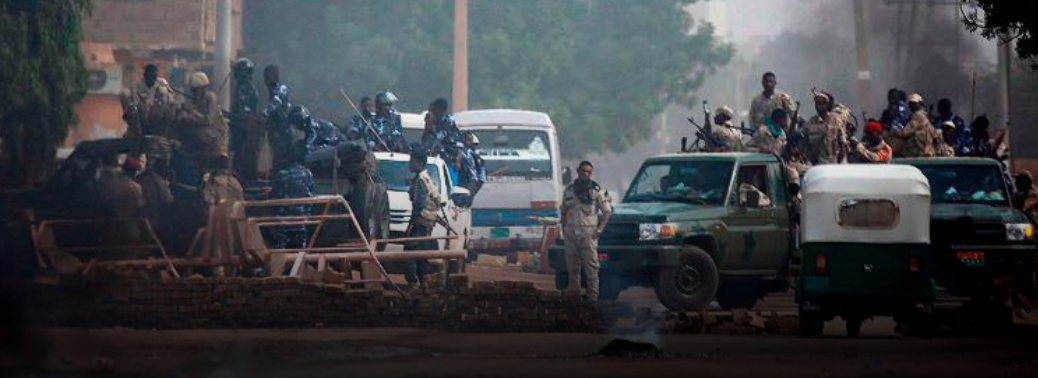
Why in News:
- Sudan is in the midst of a political crisis after security forces opened fire on pro-democracy protesters in the capital, Khartoum.
Background: / More in News:
- When Sudanese dictator Omar al-Bashir was toppled on April 11 after a months-long popular uprising, the generals had two options before them
- One was the Tunisian model in which the army allowed a smooth transition of power to a civilian government after Zine El Abidine Ben Ali was removed from power in 2011.
- The other was the Egyptian model in which the army, after losing power to a civilian ruler following Hosni Mubarak’s ouster as President in 2011, staged a coup in 2013 and reinstalled itself at the helm. Sudanese generals chose the Egyptian Model, setting the stage for a prolonged showdown. The protesters had demanded a transfer of power to a transitional civilian government, followed by free and fair elections. But the generals used the crisis to concentrate more powers in their own hands. Later military generals established a military council which took over governance, while angry protesters continued a sit-in in front of the Defence Ministry in Khartoum.
- As talks between pro-democracy activists and the military rulers collapsed, paramilitary groups unleashed deadly violence this week to break the sit-in, killing at least 100 people and injuring hundreds.
Global Response:
- The US condemned what it called a “brutal attack” and the UK said the military council bore “full responsibility”. The African Union (AU) has suspended Sudan from its membership until a civilian led transitional authority is established.
- However, The UN Security Council couldn’t even condemn the violence as China, backed by Russia, blocked the move. Saudi Arabia and the United Arab Emirates, which offered financial aid to the junta as soon as Mr. Bashir was removed from power, also support the generals.
Impact of Crackdown:
- After the crackdown, General Abdel Fattah al-Burhan, the military ruler, has offered to hold elections in nine months, upturning an earlier plan of a two-year transition. But there is no immediate plan to transfer power to a civilian transitional government, a key demand of the protesters.
Conclusion:
- Military must resume talks with the protesters and facilitate a quick and orderly transition to civilian rule. The choice the generals make will determine the future of Sudan.
RUSSIA WILLING TO DROP NEW START PACT: PUTIN
07, Jun 2019
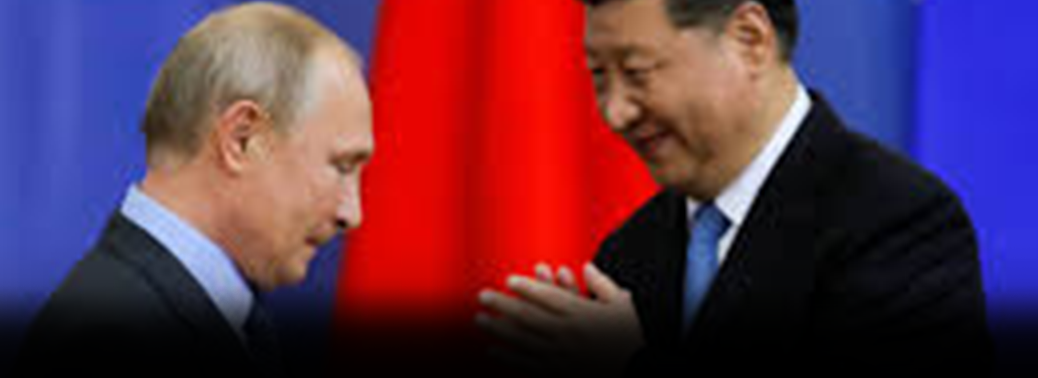
Why in News:
- President Vladimir Putin said that Russia is prepared to drop a nuclear arms control agreement with the US, known as New START, if there was a lack of interest in renewing it.
Background: / More in News:
- Putin said Washington showed no genuine interest in conducting talks on extending the New START treaty, which caps the number of nuclear warheads well below Cold War limits.
- Putin said the potential implications of letting New START treaty expire would be huge, suggesting its demise could fuel a nuclear arms race.
- Together with another agreement is known as the Intermediate-Range Nuclear Forces (INF) treaty, New START is considered a centrepiece of superpower arms control.
New START Treaty:
- The New Strategic Arms Reduction Treaty (New START) was signed in 2010 by former US President Barack Obama and then-Russian President Dmitry Medvedev and entered into force on Feb. 5, 2011.
- New START replaced the 1991 START I treaty, which expired December 2009, and superseded the 2002 Strategic Offensive Reductions Treaty (SORT), which terminated when New START entered into force.
- It is one of the key controls on superpower deployment of nuclear weapons.
- The treaty limits the US and Russia to a maximum of 1,550 deployed nuclear warheads and 700 deployed missiles and bombers, well below Cold War caps.
INF Nuclear Treaty:
- The Intermediate-Range Nuclear Forces Treaty, or INF treaty, ban Russia and the United States from possessing, producing or conducting test flights of ground-launched cruise missiles and ballistic missiles with a range of 500 to 5,500 kilometres (310 to 3,420 miles). It allows sea-based and air-delivered missiles at those ranges as well as research and development of ground-launched systems.
- The 1987 treaty was signed between President Ronald Reagan and Soviet leader Mikhail Gorbachev.
- It remained in force even after the collapse of the Soviet Union in 1991.
In Feb, The US announced its intention to withdraw from the treaty in six months.
U.S. START-UPS CONCERNED OVER IMMIGRATION CURBS
04, Jun 2019
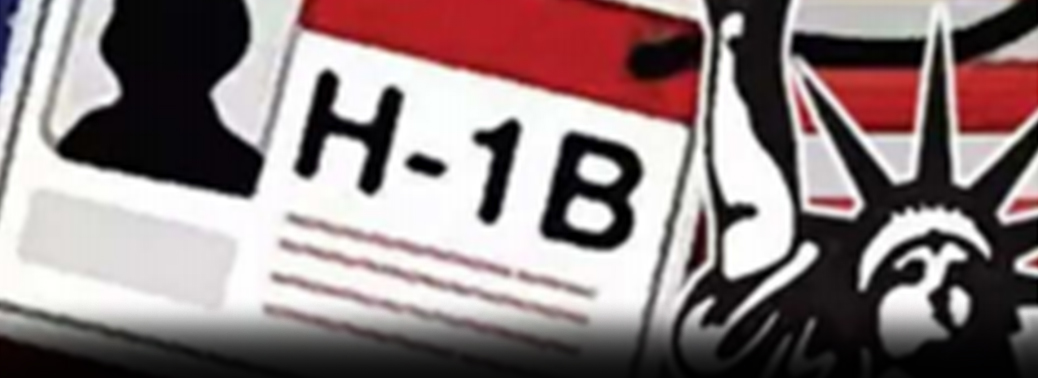
Why in News:
- The start-up community in the U.S. is concerned about the increasingly protectionist stance taken by the Trump administration on immigration, saying that this would detrimentally affect innovation in their sectors.
Details:
- U.S. President recently unveiled a new merit-based
immigration system that “protects American wages and safety net programs”, which will see the emphasis on highly-skilled immigrants allowed to enter the U.S. increase from the current 12% to 57%. In other words, those not meeting that ‘highly-skilled’ mark will find it much harder to move to the U.S. Last year, the Department of Homeland Security proposed a regulation that sought to scrap the International Entrepreneur Rule, an Obama-era programme that made it easy for entrepreneurs to do business and grow in the U.S. - This move, coupled with the Trump administration’s clamping down on H1-B visas, has meant that an increasing number of potential tech immigrants are looking at other countries.
H1-B visa rejection
- Data from the United States Citizenship and Immigration Services show that the rejection rate for H1-B visas — the ones that allow tech companies to bring in highly-skilled workers from abroad — climbed to nearly 25% in the October-December 2018 period, and about 17% in the January-March 2019 quarter.
- According to some estimates, about 75% of all H1-B visa holders are Indians.
What is H1 B visa?
- The H-1B visa is a non-immigrant visa.
- It allows US companies to employ foreign workers in speciality occupations that require theoretical or technical expertise.
- Technology companies depend on it to hire tens of thousands of employees each year from countries such as India and China. The H1-B visa has an annual numerical limit cap of 65,000 each fiscal year, as mandated by the Congress. The first 20,000 petitions filed on behalf of beneficiaries with a US master’s degree or higher are exempt from the cap.
- According to the US Citizenship and Immigration Services (USCIS), between 2007 and 2017, it received the maximum number of 2.2 million H-1B petitions from high-skilled Indians. India was followed by China with 301,000 H-1B petitions during the same period.
GLOBAL ENTREPRENEURSHIP SUMMIT 2019 TO HAVE 27 INDIAN ENTRANTS
04, Jun 2019
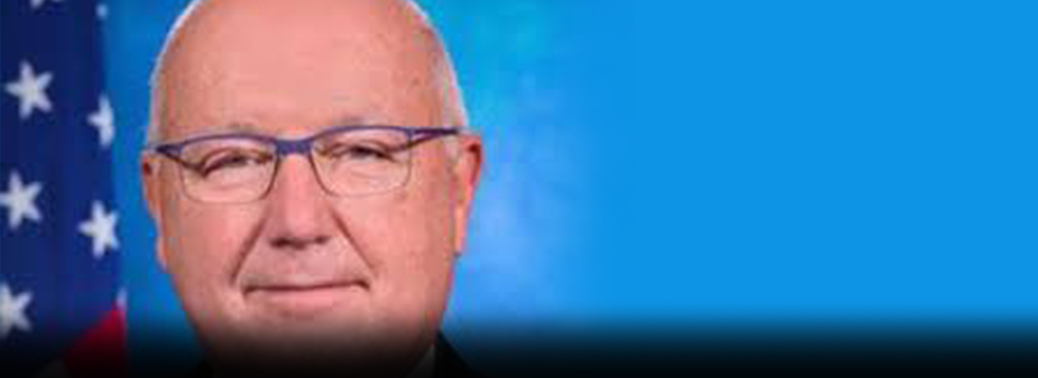
Why in News:
- The ninth edition of the Global Entrepreneurship Summit is all set to roll out in The Hague on Tuesday (June 4), with a number of entrepreneurs from across the world, including 27 from India, gathering to share their insights and showcase their ideas on a world stage.
Background:
- The Global Entrepreneurship Summit (GES) 2019 is being hosted by the governments of the United States of America and the Kingdom of the Netherlands, and is the first edition of the event to be held in the European Union.
The Global Entrepreneurship Summit (GES):
- GES is an annual entrepreneurship gathering that convenes over one thousand budding entrepreneurs, investors and supporters from across the world. It will empower Indian entrepreneurs to pitch their ideas, build partnerships, secure funding, and create innovative products and services that will transform societies for a better future.
TRUMP ENDS CONCESSIONS FOR INDIAN EXPORTS UNDER GSP
02, Jun 2019
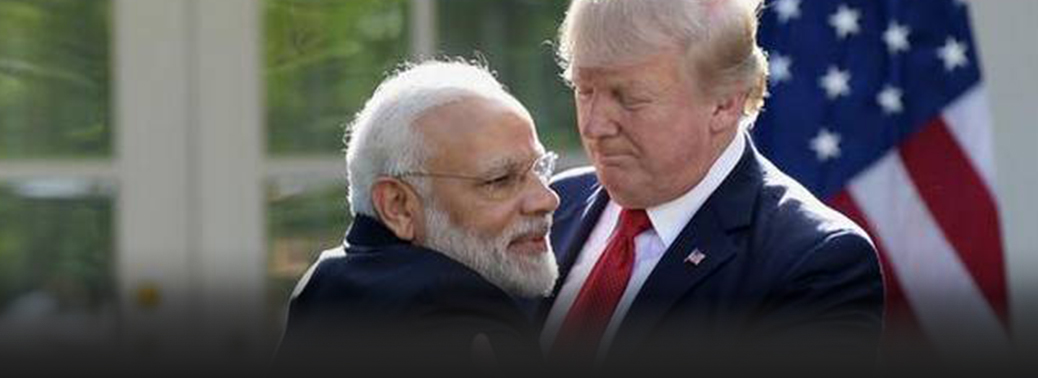
Why in News:
- A day after a group of journalists was told that India’s access to preferential trade terms under the U.S.’s Generalized System of Preferences (GSP) was on its way out, U.S. President Donald Trump issued a proclamation ending the trade benefits effective June 5th, 2019.
- However, according to a senior State Department official, the benefits could possibly be reinstated subject to India and the U.S. reaching an agreement.
Background: / What did Mr. Trump’s proclamation read?
- Trump’s proclamation read, “I have determined that India has not assured the United States that India will provide equitable and reasonable access to its markets. Accordingly, it is appropriate to terminate India’s designation as a beneficiary developing country effective June 5, 2019.” It is important to note that the GSP is a programme that seeks to aid developing countries by giving some of their products non-reciprocal, duty-free access to U.S. markets.
- In 2018, some $ 6.3 billion of Indian merchandise exports to the U.S. were covered by GSP, according to the Congressional Research Service.
As a matter of fact, this represented 11% of all merchandise from India. - India was the largest beneficiary of the programme, accounting for over one quarter of all the U.S.’s GSP-covered imports. The U.S. Trade Representative (USTR) began a review of India’s eligibility for GSP in April 2018. The U.S. medical devices and dairy industries had made representations on market access issues in India. Tariffs in the ICT sector had also become an irritant in ties.
Package rejected:
- Further, it is important to note that India had offered the U.S. a “meaningful package” that covered U.S. concerns, but this was not acceptable to the U.S. The recent proclamation issued by the U.S. government was done despite requests from U.S. lawmakers that the GSP was not to be withdrawn as it would harm U.S. companies. The proclamation also withdrew the exemption for India from safeguard measures on CPSV (crystalline silicon photovoltaic) products and large residential washers.
U.S. firms unhappy:
- The Coalition for GSP, an industry body, was not supportive of the measure, saying it would cost American companies $300 million in additional annual tariffs. Reacting to this development, some experts have opined that American importers will pay more, while some American exporters will continue to face current market access barriers in India and others, including farmers, are very likely to be subject to new retaliatory tariffs.
India to lose preferential trade terms with U.S.
01, Jun 2019
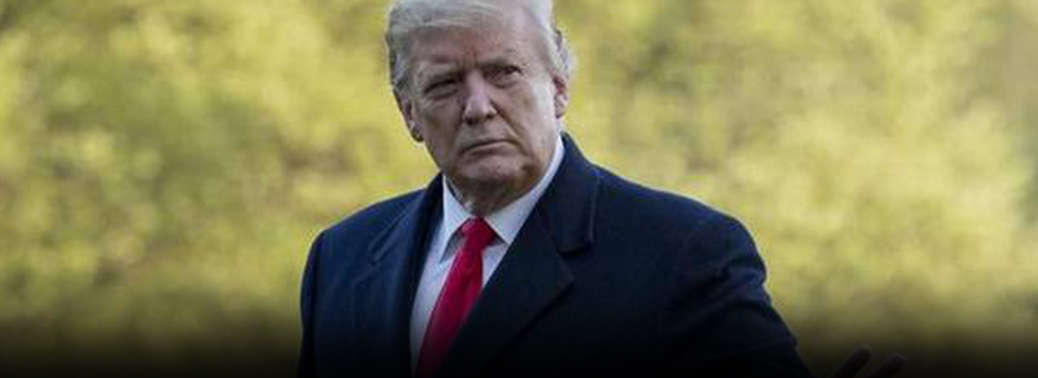
Why in news
- India will lose access to preferential trade terms with the U.S. under the latter’s Generalised System of Preferences (GSP) programme.
Details:
- Trump had written to the U.S. Congress on stating his intention to withdraw GSP benefits for India, saying India had failed to assure Washington that it would provide “equitable and reasonable access to the markets of India”.
- GSP can and is expected to be terminated via a Presidential proclamation. Indian exports to the U.S. worth $5.6 billion are covered by GSP, although India gets only $190 million in tariff savings. Nevertheless, the programme impacts crucial Indian sectors including textiles, leather, engineering goods, gems and jewellery.
GSP:
- Generalized System of Preferences (GSP) is an umbrella that comprises the bulk of preferential schemes granted by industrialized nations to developing countries.
- It involves reduced Most Favored Nations (MFN) Tariffs or duty-free entry of eligible products exported by beneficiary countries to the markets of donor countries.
Saudi Arabia is sowing division’
01, Jun 2019
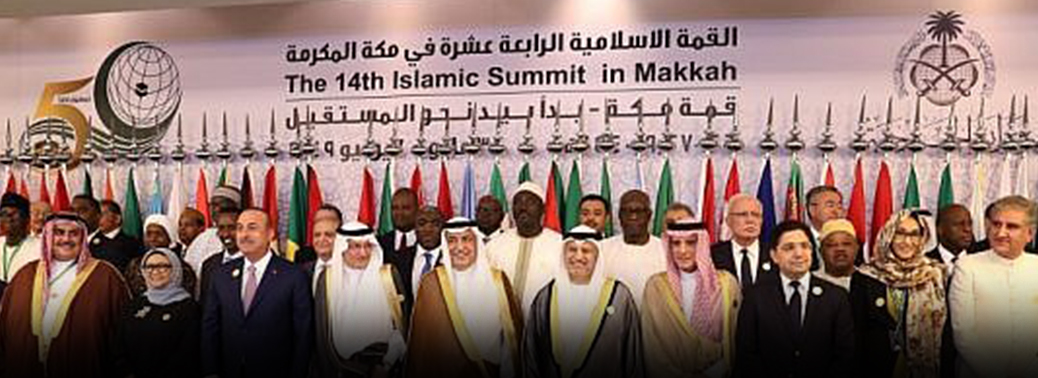
Why in News:
- Tehran accused Riyadh of “sowing division” in the region to Israel’s advantage, after the Kingdom hosted summits of Gulf and Arab leaders to rally support against the Islamic republic.
Details:
- Saudi Arabia has “continued to sow division between Islamic countries and in the region, which is the wish of the Zionist regime,” Foreign Ministry spokesman said.
- Saudi Arabia’s King Salman ratcheted up the rhetoric against arch-rival Iran, calling on Arab states to confront its “criminal” actions after attacks on oil installations sparked fears of a regional conflagration.
- Tehran dismissed the accusation as “laughable” and accused the U.S. of pursuing “evil desires for chaos in the region.”
Oil price:
- The ruler of the world’s top crude exporter said Shia Iran’s development of nuclear and missile capabilities and its threats on world oil supplies posed a risk to regional and global security. Riyadh accused Tehran of ordering the drone strikes. The attacks were claimed by the Iran-aligned Houthi group, which has been battling a Saudi-led military coalition in Yemen for four years. “The Kingdom is keen to preserve the stability and security of the region, to spare it the scourge of war and to realise peace and stability,”
Nuclear deal:
- Tensions have risen between the U.S. and Iran after President Donald Trump a year ago withdrew Washington from a 2015 international nuclear deal with Iran, re-imposed sanctions and boosted its military presence in the Gulf. The final communiqué said regional stability required the establishment of an independent Palestinian state along 1967 borders to include Gaza, the West Bank and East Jerusalem.
U.S. to hit Mexico with tariffs over migration
01, Jun 2019

Why in news
- Washington will impose a 5% tariff on all goods from Mexico — increasing to as much as 25% — until “illegal migrants” stop coming through the country into the U.S., President Donald Trump said.
Details:
- The Tariff will gradually increase until the Illegal Immigration problem is remedied, at which time the Tariffs will be removed,” Tariffs will permanently remain at the 25% level unless and until Mexico substantially stops the illegal inflow of aliens coming through its territory,” the statement said. The tariffs would have severe consequences on Mexico, which sends 80% of its exports to the U.S.
Mexico’s response
- Mexican President Andrés Manuel López Obrador struck a conciliatory tone in a letter to Mr. Trump following the tariff announcement. “I express to you that I don’t want confrontation,” The announcement came a day after border agents in El Paso, Texas detained the largest single group of migrants they had ever encountered — 1,036 people.
Recent Cases of Migration
- Syria is focal point of ‘global refugee crises’. Lot of people migrate from the country. People crossing Mediterranean Sea from Libya to Italy.
- Rohingya Muslims in Myanmar fleeing to Bangladesh and India. Thousands of Dominicans and Stateless in Caribbean.
Drawbacks
- It is often seen that immigrants are exploited for their cheap labour.
- Developing countries may suffer ‘Brain Drain’ as the limited resources they spend in educating their students would amount to very little if that talent gets enticed to another country. Immigration also attracts criminal elements from drug and people traffickers to other forms of crime and corruption. Immigration sometimes also becomes social or political issue; racism is used to exploit feelings or as an excuse for current woes of the local population.
MALAYSIA TO SEND BACK PLASTIC WASTE TO FOREIGN NATIONS
29, May 2019
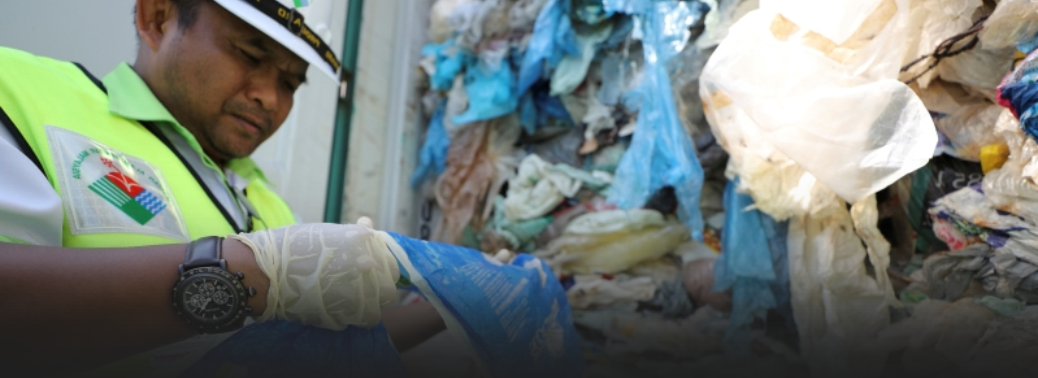
Why in News:
- Malaysia says it will send back some 3,000 metric tonnes of non-recyclable plastic waste to countries including the U.S., U.K., Canada and Australia in a move to avoid becoming a dumping ground for rich nations.
Background:
- Malaysia last year became the leading alternative destination for plastic scrap after China banned imports of such waste, disrupting the flow of more than 7 million tonnes of plastic scrap a year. Dozens of recycling factories cropped up in Malaysia, many without an operating licence, and residents complained of environmental damage.
- Most of the plastic scrap coming into the country is contaminated and low-quality plastic from developed countries that is non-recyclable. Now Malaysia has begun sending back the waste to its country of origin. Malaysia has already sent five containers of contaminated plastic waste that was smuggled into the country back to its source.
Basel convention:
- The Convention aims at:
- Reducing the generation of hazardous wastes and promotion of environmentally sound management of hazardous wastes, irrespective of the place of disposal.
- Restricting the transboundary movement of hazardous wastes except in those cases where it is perceived to be in compliance with the principles of environmentally sound management.
- Putting in place a regulatory system which is applicable to cases where transboundary movements are permitted.
Way ahead:
- Around 180 countries reached a deal to amend the Basel Convention to make global trade in plastic waste more transparent and better regulated, while also ensuring that its management is safer for human health and the environment.
- The United States, the world’s top exporter of plastic waste, has not ratified the 30-year-old pact.
- The amendments to the treaty will further limit the flow of plastic scrap to developing countries
- The amendment of the Basel Convention is the first step in solving the global problem of unjust rubbish movement from developed to developing countries
U.S. IS NOT SEEKING REGIME CHANGE IN IRAN
28, May 2019
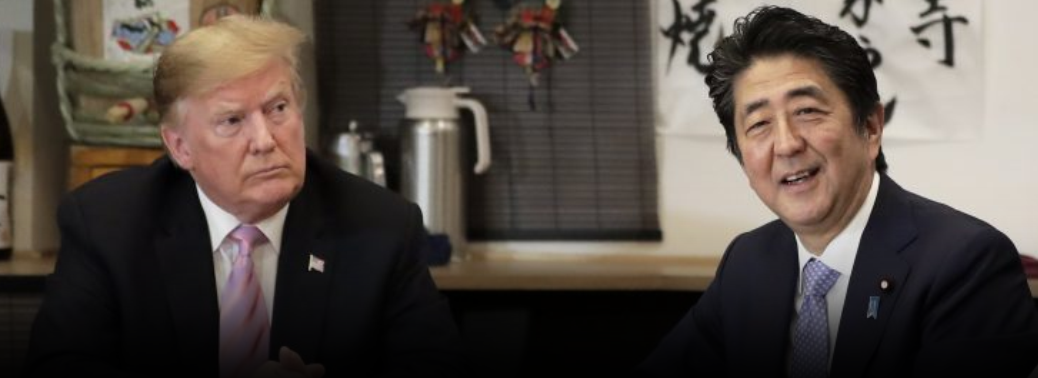
Why in News:
- The U.S. does not seek “regime change” in Iran, President Donald Trump said, also praising North Korea’s leader Kim Jong-un in comments made during a historic visit to meet Japan’s new Emperor.
Background:
- In June 2018, the United States (US) withdrew from the landmark Iran nuclear deal and re- imposed sanctions that had been suspended in return for curbs on Iran’s nuclear programme. The United States has asked India and other countries to cut oil imports from Iran to “zero” by November 4 or face sanctions.
- The US also gave foreign companies either 90 or 180 days to wind down their business with Iranian counterparts. The request is part of US efforts to isolate streams of Iranian funding and is looking to highlight the totality of Iran’s ‘malign behavior’ across the region.
Iran Nuclear Deal:
- In July 2015, Iran and six countries (United States, Russia, France, UK, China, and Germany) & the EU, reached a historic agreement called the Joint Comprehensive Plan of Action (JCPOA), popularly known as the Iran nuclear deal.
- As part of the deal, Iran agreed to reduce its number of nuclear centrifuges by two-thirds. Iran also agreed to reduce its stockpile of enriched uranium by 98% and limit uranium enrichment to 3.67%, i.e., it will have enough enriched uranium to maintain the country’s energy needs, without having the ability to build a nuclear bomb.
- The deal aimed to restrict Iran’s ability to develop nuclear weapons in exchange for lifting economic sanctions against Iran. The JCPOA ensured the comprehensive lifting of all UN Security Council sanctions as well as multilateral and national sanctions related to Iran’s nuclear programme. Inspectors from the International Atomic Energy Agency (IAEA) were given access to Iran’s nuclear facilities for inspection on a regular basis.
India’s Impact
- Given the huge energy needs, Iran is India’s third-largest oil supplier behind Iraq and Saudi Arabia.
- Further, after China, India is Iran’s top oil importer of Iranian oil.
- Iran oil sale terms were the most attractive for Indian refiners – besides a liberal credit period, it also shipped the oil to India for a nominal ocean freight.
- Though Iran understands the ‘challenges’ India faces on the energy front, the former has threatened to end “special privileges” for India if she tried to replace Iranian crude oil with supplies from Saudi Arabia, Russia, and the United States.
- India’s decisions on procuring Iran oil, however, is not so much about securing energy as it is about securing India’s standing in the world.
- If it rejects U.S. pressure, it risks sanctions as well as incurring the displeasure of its all- powerful friend and defence partner.
- If it yields, it risks its relationship with traditional partner Iran, access to important trade routes through Chabahar and the International North-South Transport Corridor (INSTC), as well as its international reputation.
JAPAN WELCOMES TRUMP WITH A CHARM CAMPAIGN, GOLF AND SUMO
27, May 2019
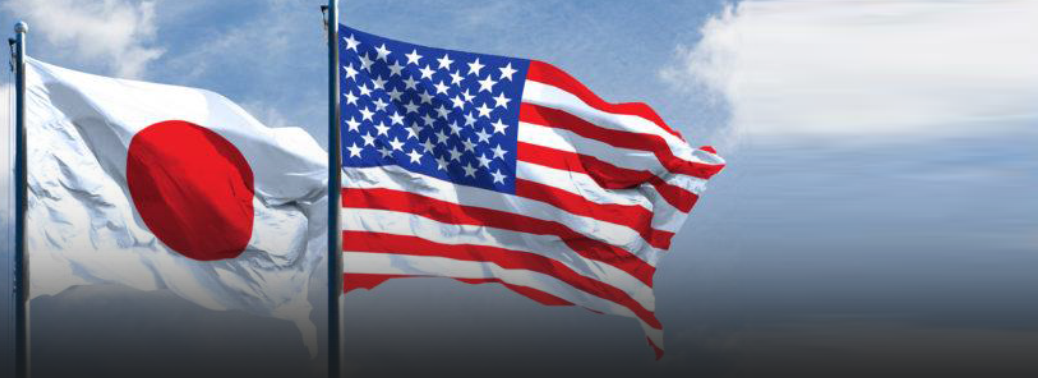
Why in News:
- Under the threat of potentially devastating U.S. tariffs on autos, Japan is ready to roll out the newest phase of its charm offensive targeting President Donald Trump as it welcomes him on a state visit tailor-made to his whims and ego
Details:
- U.S. tariffs could cripple Japan’s auto industry, while North Korea remains a destabilizing threat in the region
- Mr. Trump, has the honor of being the first head of state invited to meet Emperor Naruhito since he assumed power after his father stepped down, the first abdication in about two centuries.
- Behind the smiles and personal friendship, however, lurks deep uneasiness over Mr. Trump’s threat to impose tariffs on Japanese autos and auto parts on national security grounds, a move that would be far more devastating to the Japanese economy than earlier tariffs on steel and aluminium.
- Also at issue is the lingering threat of North Korea, which has resumed missile testing and recently fired a series of short-range projectiles that U.S. officials, including Mr. Trump, have tried to downplay despite an agreement by North Korea to hold off on further testing.
- Japan, which relies on the U.S. for its defense, has also been largely cut out of negotiations with North Korea.
- Mr. Trump has rejected Mr. Abe’s invitations to re- join a sweeping trans-Pacific trade deal and keeps the threat of tariffs in place, Mr. Trump walked away from his last meeting with Mr. Kim without a deal, which some had feared would include a declaration to end the Korean war and a vow to pull U.S. troops from the peninsula.
India and Japan:
- Japan has been made a permanent participant in the Malabar naval exercises which also involves the US.
- The two countries have inked a nuclear deal—Japan’s first with a non-signatory to the Treaty on the Non-Proliferation of Nuclear Weapons (NPT).
- A new trilateral at the foreign secretary level has been initiated with Australia as the third country.
- In addition to these, the numbers on Japanese foreign direct investment (FDI) and overseas development assistance (ODA) to India have been climbing.
- Other than the Mumbai-Ahmedabad high speed rail, many other high-profile projects like the Delhi-Mumbai Industrial Corridor (DMIC) and Mumbai Trans-harbour link project are under different stages of execution.
AFGHAN FLOODS PUT FAMOUS MINARET AT RISK OF COLLAPSE
26, May 2019
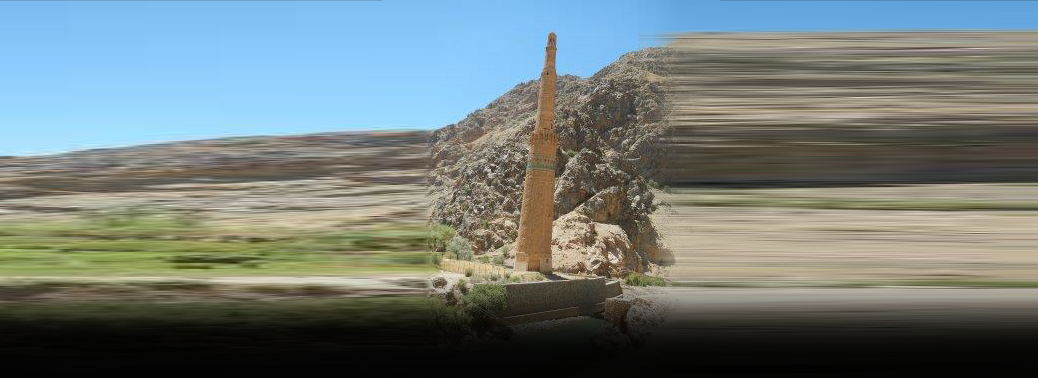
Why in News:
- Deadly floods sweeping Afghanistan have put the celebrated minaret of Jam — one of the country’s most revered cultural, architectural and historical treasures.
Background:
- Minaret and Archaeological Remains of Jam:
- At 1,900 m above sea level and far from any town, the Minaret of Jam rises within a rugged valley along the Hari-rud River at its junction with the river Jam around 215km-east of Herat.
- Rising to 65m from a 9m diameter octagonal base, its four superimposed, tapering cylindrical shafts are constructed from fired bricks.
- The Minaret is completely covered with geometric decoration in relief enhanced with a Kufic inscription in turquoise tiles. Built in 1194 by the great Ghurid Sultan Ghiyas-od-din (1153-1203), its emplacement probably marks the site of the ancient city of Firuzkuh, believed to have been the summer capital of the Ghurid dynasty.
- Surrounding remains include a group of stones with Hebrew inscriptions from the 11th to 12th centuries on the Kushkak hill, and vestiges of castles and towers of the Ghurid settlements on the banks of the Hari River as well as to the east of the Minaret.
- The Minaret of Jam is one of the few well-preserved monuments representing the exceptional artistic creativity and mastery of structural engineering of the time.
CITING IRAN, TRUMP BYPASSES CONGRESS TO SELL ARMS TO SAUDIS
26, May 2019
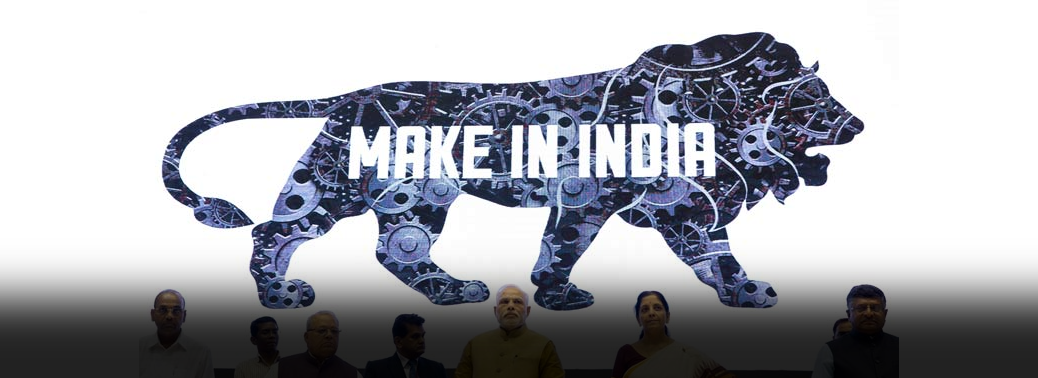
Why in News:
- US President Donald Trump declaring a national emergency because of tensions with Iran swept aside objections from Congress to complete the sale of over $8bn worth of weapons to Saudi Arabia the United Arab Emirates and Jordan.
Details:
- The Trump administration informed congressional committees that it will go ahead with 22 military sales to the three countries, infuriating politicians by circumventing a long-standing precedent for congressional review of major weapons sales.
- Members of Congress had been blocking sales of offensive military equipment to Saudi Arabia and the UAE for months, angry about the huge civilian toll from their air campaign in Yemen as well as human rights abuses.
US Secretary of State said , these sales will support our allies, enhance Middle East stability, and help these nations to deter and defend themselves from the Islamic Republic of Iran - US arms control law allows Congress to reject weapons sales to foreign countries, however, an exemption in the law allows the president to waive the need for congressional approval by declaring a national security emergency.
US and Iran
- Tensions between Iran and the US mounted, a year after Trump pulled the US out of the landmark 2015 nuclear deal. Many Democrats have expressed scepticism about the Iran threat, saying the Trump administration is blowing things out of proportion.
Joint Comprehensive Plan of Action
- The Joint Comprehensive Plan of Action, known commonly as the Iran nuclear deal or Iran deal, is an agreement on the Iranian nuclear program reached in Vienna on July 14, 2015, between Iran, the P5+1, and the European Union.
- Trump called the Iran deal “horrible” and said the United States would “work with our allies to find a real, comprehensive, and lasting solution” to prevent Iran from developing nuclear arms.
CAN’T ADVISE JEWS TO WEAR KIPPAH
26, May 2019

Why in News:
- Germany’s government commissioner on anti-Semitism has warned Jews about the potential dangers of wearing the traditional kippah cap in the face of rising anti-Jewish attacks
Details:
- Anti-Semitic crimes rose 20% in Germany last year, according to Interior Ministry data.
- Proliferation of online platforms that allow people to express extremist views without inhibition while hiding behind screens had fostered the rise in cases.
- While the far-right was to blame for the vast majority of anti-Semitic crime, it was apparent that some Muslims were also influenced by watching certain television channels “which transmit a dreadful image of Israel and Jews”.
Antisemitism
- Antisemitism is hostility to, prejudice, or discrimination against Jews.
- A person who holds such positions is called an antisemite. Antisemitism is generally considered to be a form of racism.
Kippah
- A kippah is a brimless cap, usually made of cloth, worn by male Jews to fulfill the customary requirement held by Orthodox halachic authorities that the head be covered.
N. KOREA SAYS TALKS WON’T RESUME UNLESS US CHANGES POSITION
25, May 2019

Why in News:
- North Korea said that nuclear negotiations with the U.S. will never resume unless President Trump’s administration moves away from what Pyongyang described as unilateral demands by U.S. for disarmament
Details: / US and North Korea’s relations
- Last year, North Korea had scored a nuclear double, with 2 intercontinental ballistic missiles first capable of reaching Alaska and second up to California.
- It then detonated its most powerful nuclear weapon, a 120 kiloton-boosted fission device.
- Given the fact that it has been taking efforts to become nuclear capable, the situation was likely to turn into another Cuban missile crisis.
- This led into threats by both North Korean leader Kim Jong-un and U.S. President Donald Trump against each other.
- Only due to the efforts by South Korean President, the matters have improved well enough to entertain dialogue and negotiations.
What is South Korea’s role in US-NK diplomacy?
- South Korean President, who originally hails from North Korea used the Winter Olympics as an opportunity to conciliate with North Korea.
- As North Korea responded positively, South Korea used thisdiplomatic opportunity to address more serious bilateral issues as well as the stand-off with the U.S
- A North-South summit was the outcome and the North Korean President expressed his eagerness to meet the US President and to refrain from any further nuclear tests.
AFTER FAILING TO DELIVER BREXIT, THERESA MAY QUITS
25, May 2019

Why in News:
- British Prime Minister Theresa May said she would quit after failing to deliver Brexit, setting up a contest that will install a new PM who could pursue a cleaner break with the EU.
BREXIT:
- Brexit is a term used to define United Kingdom coming out of EU. Recently in a referendum conducted in United Kingdom, UK voted by a narrow margin in favour of Brexit. Negotiations are undergoing currently between United Kingdom and European Parliament to negotiate the terms of the exit deal
About EU:
- EU is currently a block of 28 countries and 19 countries have formed Eurozone.Formation of European Union is an outcome of Single European Act, 1991. Mashtricht Treaty converted the EU into a monetary union. Lisbon Treaty strengthened political, foreign affairs and security integration of policies of countries of European Union
On India / Cons:
- The immediate impact of Brexit is an increase in risk aversion when it comes to investing, especially in light of the possibility of other countries following suit. This will affect the FPI outflows from foreign portfolio investors.
- Rupee may depreciate because of the double effect of foreign fund outflow and dollar rise.
- IANS report says that Britain ranks 12th in terms of India’s bilateral trade with individual countries. It is also among 7 in top 25 countries with which India enjoys a trade surplus. India invests more in UK than the rest of Europe combined, emerging as the 3rd largest FDI investor. Access to European markets, therefore, is a key driver for Indian companies setting shop in UK. Britain coming out of EU is likely to affect the business prospects of these companies.
- IT and ITeS industry of India will have a negative impact of close to $108bn. The impact can be seen in medium term (2-3 years)
Pros:
- While on the positive side, Brexit has driven away fears of a US Fed rate hike and could lead to lower commodity prices.
- Brexit has become a new worry for commodity producers, coming on top of concerns about China’s slowing economic growth. Brexit’s impact will then be a fateful one for commodity producers and producing nations.
- Devaluation of rupee might enhance India’s export competitiveness.
U.S. LIFTS METAL TARIFFS ON CANADA, MEXICO
19, May 2019
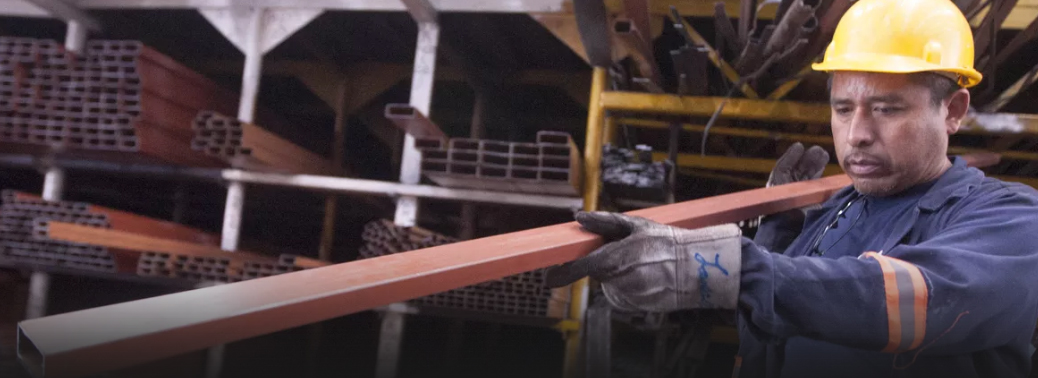
Why in News:
- The Trump administration reached an agreement with Canada and Mexico to lift tariffs on metal imports, resolving a yearlong standoff that inflamed North Atlantic tensions and complicated efforts to ratify a revised trade deal.
Background:
- As part of the agreement, both Mexico and Canada agreed to lift retaliatory tariffs on American products.
- Instead of tariffs, the nations would set up a system for monitoring and enforcement in case of import surges into the United States.
- The United States, Canada and Mexico signed that trade deal, the successor to the North American Free Trade Agreement.
- American lawmakers of both parties, as well as Canada and Mexico, had insisted that tariffs on steel and aluminum must be lifted before votes would be held. Lawmakers have argued that the tariffs, while aimed at other countries, hurt American companies and consumers by raising prices for products that use imported steel and aluminum.
- Subscribe to With Interest
- Catch up and prep for the week ahead with this newsletter of the most important business insights, delivered Sundays.
- Even with an agreement to resolve metal tariffs, the North American pact still faces potential opposition from congressional Democrats. The American tariffs were particularly punishing to Canada because it buys more American steel than any other country, according to the Canadian government. while nearly 90 percent of Canadian steel and aluminum exports go to the United States.
- In 2017, the Canadian steel industry employed more than 23,000 Canadians and the aluminum industry about 10,500 workers.
- After the imposition of the duties, some economists predicted it could cost the Canadian economy more than $3 billion Canadian dollars annually.
What are the implications for India?
- The protectionist measure by the US and potential counter-measures by other countries might hurt the steel industry globally.
- This might put downward pressure on steel and aluminium prices.
- This is a cause of worry for Indian metal companies as manufacturers have to look for
newer markets. Indian metal producers with exposure to Europe and the United States already warned of increased costs and lower sales. - This might affect the recent recovery in the volume growth and profitability of metal
producers. A downward pressure on the stock price of metal companies would also make it tough to raise fresh equity capital for debt-repayment or capacity expansion.
CHARTING A CLEAR COURSE IN THE INDO-PACIFIC
18, May 2019
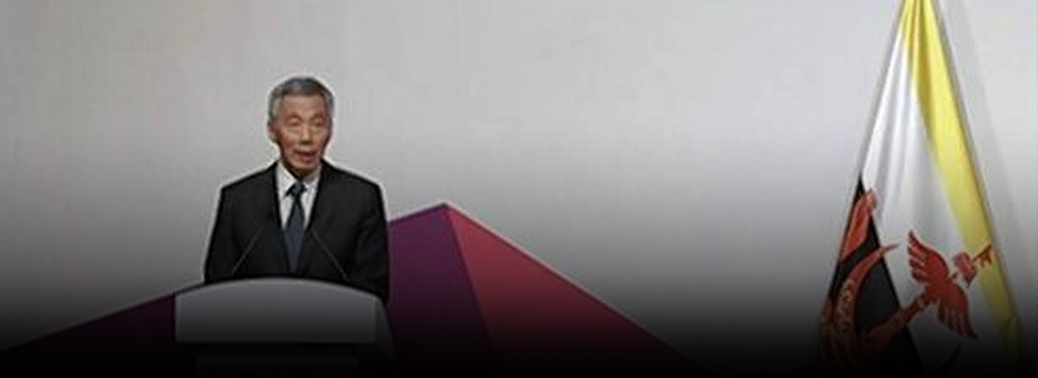
Why in News:
- Indo-Pacific has been gaining traction in Indian policy and has achieved operational clarity after the Indian vision was presented by Prime Minister Narendra Modi at the Shangri-La Dialogue.
Details:
- India has been an active participant in mechanisms like the Indian Ocean Rim Association (IORA), in ASEAN-led frameworks like the East Asia Summit, the ASEAN Defence Ministers’ Meeting Plus, the ASEAN Regional Forum as well as the Bay of Bengal Initiative for Multi- Sectoral Technical and Economic Cooperation and the Mekong-Ganga Economic Corridor.
- India has also been convening the Indian Ocean Naval Symposium, in which the navies of the Indian Ocean Region (IOR) participate.
- India has boosted its engagements with Australia and New Zealand and has deepened its cooperation with the Republic of Korea.
- India is stepping up its interactions with the Pacific Island countries.
- India’s growing partnership with Africa can be seen through the convening of mechanisms
like the India-Africa Forum Summits. - India’s multi-layered engagement with China as well as strategic partnership with Russia underlines its commitment to ensuring a stable, open, secure, inclusive and prosperous Indo-Pacific.
Background:
Shangri-La Dialogue
- The Shangri-La Dialogue (SLD) is an intergovernmental security forum held annually by an independent think tank, the International Institute for Strategic Studies in Singapore.
- The Shangri-La Dialogue has evolved into a key strategic gathering of the Asia-Pacific region. It is attended by defense ministers, permanent heads of ministries and military chiefs of Asia-Pacific states.
East Asia Summit
- The East Asia Summit (EAS) is a forum held annually by leaders of 18 countries established in the year 2005. Initially, 16 countries in the East Asian, Southeast Asian and South Asian regions were the members of the forum.
- The membership expanded to 18 countries including the United States and Russia at the Sixth EAS in 2011. EAS meetings are held after the annual Association of Southeast Asian Nations (ASEAN) leaders’ meetings.
- The first summit was held in Kuala Lumpur, Malaysia on 14 December 2005.
- The East Asia Summit includes India, China, Japan, Republic of Korea, Australia, New Zealand, The United States, and Russia apart from the 10 ASEAN Member States.
- India is a founding member of the East Asia Summit.
- Eleven East Asia Summits have been held so far. Though the ASEAN is at the core of the EAS, its vision is beyond the ASEAN and is seen by India as an alternative to the APEC, in which India doesn’t enjoy the membership.
- Within the framework of the East Asia Summit, there are six priority areas of regional cooperation. These are
- Environment and Energy
- Education
- Finance
- Global Health Issues and Pandemic Diseases
- Natural Disaster Management
- ASEAN Connectivity.
- EAS is an initiative of ASEAN and is based on the premise of the centrality of ASEAN.
- It has evolved as a forum for strategic dialogue and cooperation on political, security and economic issues of common regional concern and plays an important role in the regional architecture.
- Trade is also an important focus for the summit.
Indian Ocean Rim Association (IORA)
- The Indian Ocean Rim Association was set up with the objective of strengthening regional cooperation and sustainable development within the Indian Ocean Region
- The IORA is a regional forum, tripartite in nature, bringing together representatives of Government, Business and Academia, for promoting co-operation and closer interaction among them.
- It is based on the principles of Open Regionalism for strengthening Economic Cooperation particularly on Trade Facilitation and Investment, Promotion as well as Social Development of the region.
- India, Australia, Iran, Indonesia, Thailand, Malaysia, South Africa, Mozambique, Kenya, Sri Lanka, Tanzania, Bangladesh, Singapore, Mauritius, Madagascar, UAE, Yemen, Seychelles, Somalia, Comoros and Oman are among the members of IORA.
BIMSTEC:
- BIMSTEC stands for Bay of Bengal Initiative for Multi-Sectoral Technical and Economic Cooperation. It is an international organisation involving a group of countries in South Asia and South East Asia. 7 members are Bangladesh, India, Myanmar, Sri Lanka, Thailand, Bhutan, Nepal
- Established in 1997 in Bangkok
- Bangladesh, India, Sri Lanka, and Thailand were founding members HQ: Dhaka, Bangladesh
- The main objective of BIMSTEC is technological and economic cooperation among south Asian and south east Asian countries along the coast of the Bay of Bengal. Commerce, investment, technology, tourism, human resource development, agriculture, fisheries, transport and communication, textiles, leather etc. have been included in it
- BIMSTEC uses the alphabetical order for the Chairmanship Bhutan has never been chairman
- Current chairmanship: Sri Lanka
Mekong Ganga Cooperation (MGC)
- The MGC is an initiative by India and five ASEAN countries, Cambodia, Laos, Myanmar, Thailand and Vietnam for cooperation in tourism, culture, education, as well as transport and communications. It was launched in 2000 at Vientiane, Laos. It is named after Ganga and the Mekong which both are civilisational rivers. MGC initiative aims to facilitate closer contacts among the people inhabiting these two major river basins.
ALABAMA PASSES TOUGHEST ABORTION BILL IN U.S.
16, May 2019
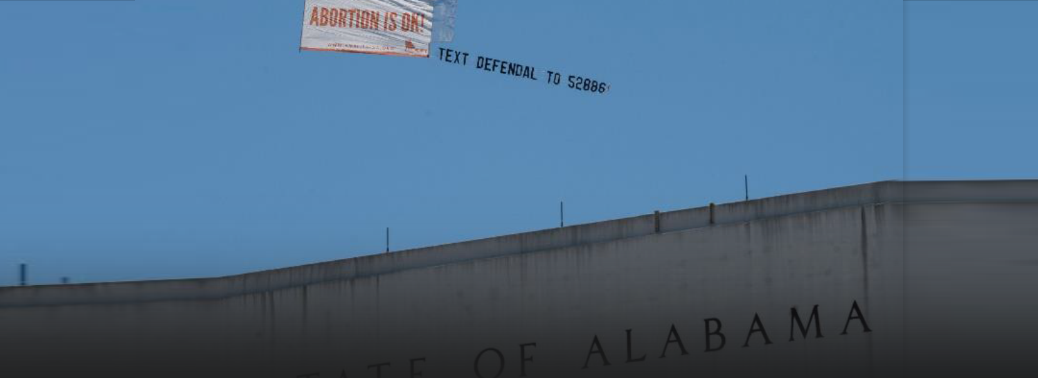
Why in News:
-
The Alabama Senate has passed the most restrictive abortion Bill in the U.S., which places a near-total ban on the termination of pregnancy — even in cases of rape and incest
— and could punish doctors who perform the procedure with life in prison.
Background: / Abortion Bill in U.S:
- Under the Bill, performing an abortion is a crime that could land doctors who perform it in prison for 10 to 99 years.
- Abortions would only be legal if the life of the mother is in danger or the foetus has a fatal condition.
- The largest human rights defence organisation in the United States, the ACLU, promised to file a lawsuit to block its implementation.
- The bill makes provision for abortion under three circumstances only: “to avoid a serious health risk to the unborn child’s mother,” for ectopic pregnancy and if the “unborn child has a lethal anomaly.”
- There’s no doubt that legislation like the abortion ban in Alabama is aimed at the larger goal of prohibiting abortion nationwide.
Way Ahead:
TRUMP COULD MEET XI ON SIDELINES OF G20 MEET
13, May 2019
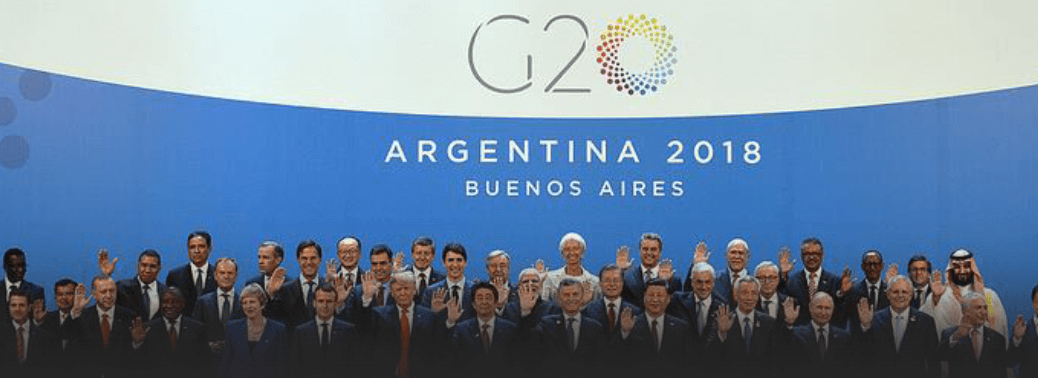
Why in News:
- President Donald Trump and China’s Xi Jinping could meet on the sidelines of the G20 summit to hash out their differences on trade, but no new talks are scheduled.
Details:
- The world’s top two economies ended two days of negotiations in Washington with no deal The G20 summit is scheduled to take place in Osaka on June 28-29.
- Mr. Trump ordered new punitive duties, on $200 billion worth of Chinese imports, raising them to 25% from 10%.
- He then ordered a tariff hike on almost all remaining imports — $300 billion worth
Group of 20:
- The G20 (Group of 20) is an international forum which includes 19 of the world’s largest
- economies and the European Union.
- G20 is a forum for economic, financial and political cooperation. It addresses the major global challenges and seeks to generate public policies that resolve them.
Significance of G20:
- Together, the G20 members represent
- Two thirds of the world population. 85% of the global gross product.
- 75% of international trade.
- 80% of global investments in research and development.
DEAL IN DANGER: ON IRAN AND NUCLEAR DEAL
13, May 2019
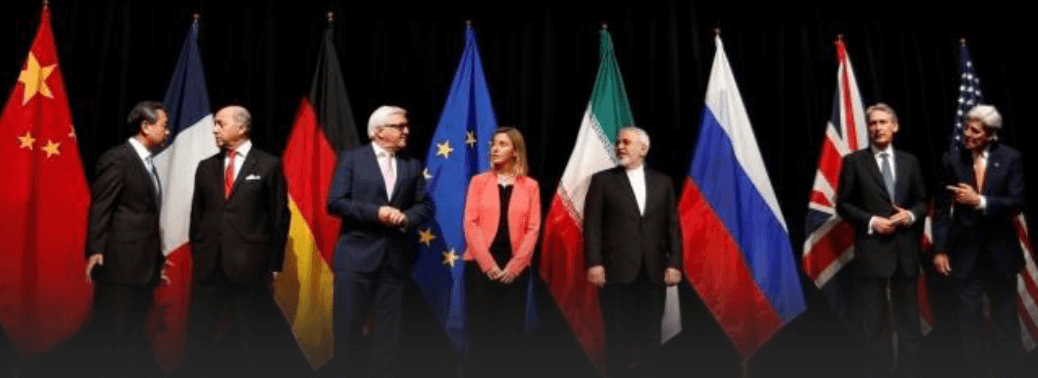
Why in News:
- Iran’s decision to reduce its commitments under the 2015 Joint Comprehensive Plan of Action, which sought to curtail its nuclear capabilities, is more of a warning than a move to break the nuclear deal
Details:
- Iran has been under economic and political pressure since President Donald Trump pulled the U.S. out of the deal a year ago. The U.S. has since amped up its anti-Iran rhetoric and reimposed sanctions.
- With the U.S. having ended the sanctions-waiver it had given to certain countries, including India, on purchasing Iranian oil, the Iranian economy has come under more pressure.
- Iran will immediately stop shipping out excess enriched uranium and heavy water. Mr. Rouhani has given 60 days to other signatories to find solutions to shield Iran’s banking and oil sectors from U.S. sanctions. The big threat is that it will resume higher levels of enrichment to build weapons unless its grievances are addressed in 60 days
- Iran’s move to put the remaining signatories on notice could be the start of the formal unravelling of the deal. If Europe doesn’t do enough in 60 days and Iran sticks to its threat, the deal will collapse, giving more reason to the U.S. to escalate hostilities
- A collapse of the deal would not only exacerbate the Iran nuclear crisis but also set a bad precedent in international diplomacy.
Joint Comprehensive Plan of Action (JCPOA)
- The Joint Comprehensive Plan of Action (JCPOA) known commonly as the Iran deal, is an international agreement on the nuclear program of Iran reached in Vienna on 14 July 2015 between Iran, the P5+1 (the five permanent members of the United Nations Security Council—China, France, Russia, United Kingdom, United States—plus Germany),and the European Union.
Way Forward:
- With this decision President Trump is risking U.S. national security, recklessly upending foundational partnerships with key U.S. allies in Europe and gambling with Israel’s security.
- Withdrawal from the JCPOA makes it more likely Iran will restart its nuclear weapons program in the future
- The U.S. stands isolated in its decision. Europe and other powers (UN permanent members) should stick together to respect the mandate of an international agreement. Any sanctions imposed by U.S. will hurt the global economy and may force Iran to stock nuclear weapons, further complicating the situation.
- Thus, the need of the hour is to standby with the agreement even after the U.S. has withdrawn.
Loud and clear: on India-U.S. discord on market access
10, May 2019

Why in news
- New Delhi must snap out of its denial on the discord with the U.S. on market access
Details:
- U.S. Commerce Secretary Wilbur Ross lashed out at what he called India’s unfair trade practices and “overly restrictive market access barriers”. His comments followed a series of measures by the U.S. that have affected India.
- These include a refusal to revoke or waive tariff increases made last year on steel and aluminium, an ultimatum that India “zero out” oil imports from Iran even without securing comparable alternatives, and the decision to withdraw India’s GSP (Generalised System of Preferences) trade status.
- India is a “tariff king”, and threatened India with “consequences” if it responded to U.S. tariffs with counter-tariffs,
- New Delhi and Washington need to make a more determined attempt to sort out issues, starting from scratch if required, with tariffs.
- While the 50-60% duties on motorcycles and cars and 150% duties on American liquor that India imposes need a second look, the U.S. must see that average tariffs imposed by India (13.8%) are not much higher than those levied by economies such as South Korea and Brazil.
- In addition, the government will need to revisit some of its decisions like data localisation requirements and new e-commerce regulations, which were declared suddenly, while the U.S. must show some flexibility on India’s price caps on coronary stents and other medical devices
- The U.S. must understand the cultural differences over the labelling of non-vegetarian dairy products
- New Delhi will have to work closely with other countries to build alternative financial structures to avoid U.S. sanctions.
Why the United States matters to India?
- America remains the critical stabilizing force in Asia through its military and diplomatic power projection and commitments to the region
- India will be better able to protect its national interests in Pakistan and Afghanistan in coordination with the United States.
- The United States has also remained one of the top sources of foreign direct investment in India, bringing important managerial expertise, capital, and technology with it to the dynamic Indian market.
Europe rejects Iran’s ‘ultimatum’ but stands by nuclear agreement
10, May 2019
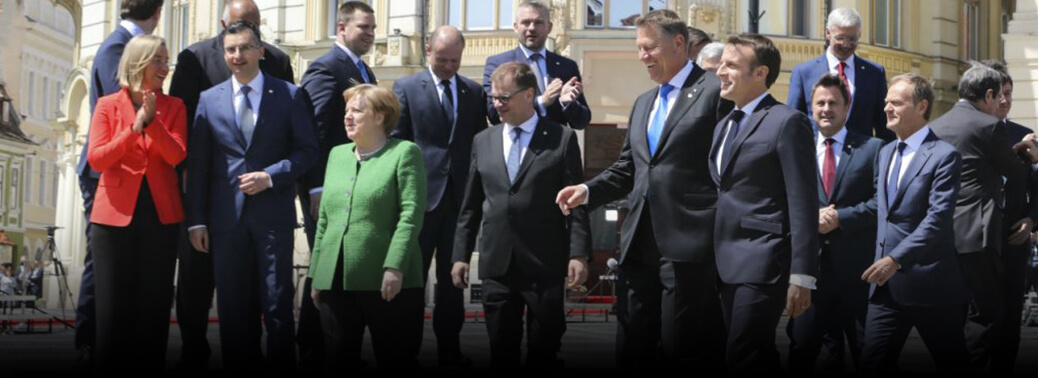
Why in news:
- European powers denounced Iran’s threat to resume nuclear work but vowed to save a landmark deal with Tehran despite U.S. pressure.
Details:
- Iran said it would defylimits under the 2015 agreement, and threatened to go further if Europe, China and Russia fail to deliver sanctions relief within 60 days.
- Tehran says it is responding to unilateral U.S. sanctions imposed after President Donald Trump called a “horrible” deal, dealing a severe blow to the Iranian economy.
Joint Comprehensive Plan of Action (JCPOA)
- It is informally called as ‘Iran nuclear deal’. It is multilateral nuclear deal signed between Iran and P5 +1 (five permanent members of United Nations Security Council- US, China, France, Russia, and UK), plus Germany and European Union (EU), in Vienna.
- The JCPOA is aimed at preventing Iran from building nuclear weapon, involved lifting of international sanctions in return for Tehran curbing its nuclear programme.
- This plan ensured that Iran will drastically reduce its uranium enriching capacity and levels, enriched stockpiles and centrifuges and will allow for stringent inspection and monitoring by international agencies including International International Atomic Energy Agency (IAEA).
- In exchange for Iran compliance to deal, economic sanctions that had kept Iran away from international banking and the global oil trade were lifted.
- It allowed Iran to make business deals and also unfroze billions of dollars Iran had overseas before multilateral sanctions were imposed on Iran over its nuclear programme.
Why did Iran agree to the deal?
- It had been hit with devastating economic sanctions by the United Nations, United States and the European Union that are estimated to have cost it tens of billions of pounds a year in lost oil export revenues. Billions in overseas assets had also been frozen.
Impact on India
- Energy trade
- Implications in West Asia
- Chabahar port
Endless war: on U.S. putting pressure on Taliban
10, May 2019

Why in news:
- Afghanistan’s Loya Jirga, a grand assembly of senior politicians and tribal and religious leaders had a four-day meeting, for a ceasefire between government troops and the Taliban underscores the mood in Kabul. Afghanistan’s leaderswants to resolve the 17-year-long conflict. The Jirga asked the government to set up a negotiating team with members from the assembly for talks with the insurgents.
Details:
- The Taliban group controls half of Afghanistan and has shown its capacity to strike anywhere, including in the most fortified of locations.
- It has also been engaged in direct talks with the U.S. for months.
- But the peace talks haven’t prevented the Taliban from carrying its offense against the government.
- By rejecting the Loya Jirga proposal, the Taliban has once again made it clear that it is not ready yet to engage with the government in Kabul.
- The U.S. seeks an assurance that Afghanistan will not provide a safe haven to transnational terrorist groups such as al-Qaeda and the Islamic State.
- The government lacks the resources to accomplish either.
- It cannot defeat the Taliban militarily, as the 17 years of the war suggest.
- It cannot forge peace on the Taliban’s terms as it would mean endangering whatever few freedoms the Afghans enjoy right now.
Background:
Afghanistan
- Afghanistan, located in South Asia, is a landlocked country bordered by Pakistan, Iran, Turkmenistan, Uzbekistan, Tajikistan and China.
- Afghanistan has a strategic location and it connected the cultures of the Middle East and other parts of Asia by the Silk Road.
- Much of Afghanistan’s territory covers the Hind Kush range that stretches along Afghanistan-Pakistan border and has been historically a significant sector of Buddhism and acted as a passageway during the invasions of the Indian subcontinent. It is still important during modern era warfare in the nation.
- The 2430km long Durand line, established in 1896, is the international border between Afghanistan and Pakistan. It is described very dangerous from a geopolitical and geostrategic perspective and, lot of insurgency and other related activities has occurred across the porous border for years.
- India-Afghanistan: Security interests
- India faced many security challenges from the Taliban in Afghan during the 1990s.
- Pakistan has raised and supported several militant groups such as Lashkar-e-Taiba, Harkat-ul-Mujahideen/Harkat-ul-Ansar, and Harkat-ul-Jihad-al-Islami among others, which operate in India.
- All of these groups have trained in Afghanistan, with varying proximity to the Taliban and by extension al-Qaeda.
- Thus India is absolutely adamant that Afghanistan should not again become a terrorist safe haven.
- Radical ideologies and terrorism spreading in this region are a security threat for India.
- With Pakistan increasing its strategic depth in Afghan, it can reverse the gain of India in Afghan brought through much cost. Pakistan can incubate and move around various anti-India groups in Afghan especially in Loya Paktia.
- The golden crescent comprising of Iran, Afghan, and Pakistan is a worry for India, especially with respect to the issue of drug abuse in Punjab.
- Islamic State is using Afghan as an outpost in Asia as it comes under stress in Iraq and Syria.
Moscow Format
- It was a meeting of world leaders, held in Moscow, Russia, in November 2018, to discuss future of Afghan polity, Taliban’s role in it and the Taliban’s acceptability among world leaders.
- Earlier the meeting was called off due to non-participation of the Afghan government, this time meeting was open also to non-government representatives.
Deliberations took place on a number of issues surrounding the Taliban and its role in Afghanistan. - The Afghan government did not send any officials, but four members of the Kabul-based High Peace Council (HPC) attended the event.
- India was represented in ‘Moscow Format’ by former diplomats non-officially. The choice of delegates allowed India and Afghanistan distance and deniability about the Taliban.
India-Afghanistan: Economic interests
- Afghanistan has a mineral wealth of about $1-3 trillion of Iron ore, Lithium, Chromium, Natural Gas, Petroleum etc.
- Safeguarding Indian investments and personnel in Afghan is utmost important to India as Indian investment in Afghan amounts to about $3bn.
India’s soften stand on Taliban
- India has always been seeking an “Afghan-led, Afghan-owned and Afghan-controlled” peace process and settlement but as international talks with the Taliban leadership gain momentum India soften its stance.
- Recently Taliban offer dialogue, promising to safeguard India’s investments in Chabahar and promises to protect minorities, including Hindus and Sikhs, in Afghanistan.
- Also, US announced its withdrawal of troops from Afghanistan which made India worried about the prospect of chaos and civil war, akin to the scene after the previous U.S. pullout in the early 1990s that cut India out and brought the Taliban to power in Kabul with Pakistan’s support.
- It is felt that it is time India recognized and negotiated with the Taliban to protect its huge investments
- Geopolitically non-involvement of India in talk with Taliban would consolidate Pakistan’s position in the future of Afghanistan which already has good relations with the Taliban
- World over, Russia and Iran also soften its earlier stand over the Taliban and engage in peace talks
Way forward:
- This resource deficit can be bridged only with the help of the international community. The U.Swhich is in talks with the Taliban, should not overlook the interests of Kabul, It must put pressure on the Taliban to cease hostilities and engage with Mr. Ghani’s government.
U.S. THREATENS TO IMPOSE MORE SANCTIONS ON IRAN
09, May 2019
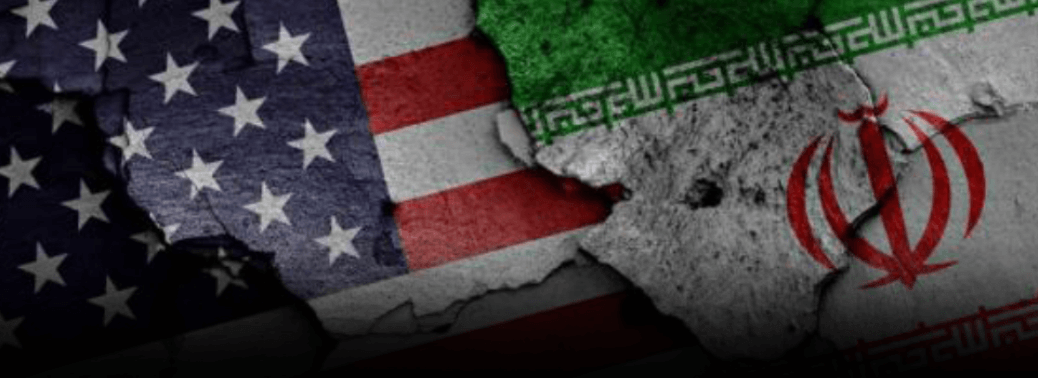
Why in News:
- USA advises European countries against doing business with Tehran; Russia, China reiterate opposition to punitive steps
Details:
- The U.S. threatened to impose more sanctions on Iran “very soon” and warned Europe against doing business with Tehran via a system of non-dollar trade to circumvent U.S. sanctions.
- It is the time for the community of nations to strongly condemn Iran’s nuclear misconduct and increase pressure on the regime to comply with U.S. demands,” US said, adding that Washington was not “done” with sanctions on Iran. “
Special Purpose Vehicle
- U.S. would move quickly against any attempt by European countries to undermine Washington’s sanctions pressure on Iran
- US advised them against using the so-called Special Purpose Vehicle to facilitate non-dollar trade to get around U.S. sanctions.
- Washington’s European allies opposed Mr. Trump’s decision to withdraw from the agreement and have failed so far to find ways to blunt the economic impact of new U.S. sanctions, which include an all-out effort to block Iran’s oil exports to starve its economy.
- Russia remained committed to the Iran nuclear deal and denounced “unreasonable pressure” that led Tehran to suspend some of its commitments under the agreement.
- China called on all parties to uphold the nuclear pact. “Maintaining and implementing the comprehensive agreement is the shared responsibility of all parties
US-Iran Relations:
- United States and Iran established diplomatic relations in 1883.
- US-Iran wasn’t very complex before World War II, but it soon turned chaotic when the US’s CIA helped stage a coup to overthrow Iranian Prime Minister Mohammad Mossadegh in 1953. Later after several years the US offered Iran a nuclear reactor and weapons-grade nuclear fuel in 1967
- Once again, the diplomatic crisis erupted in 1988, When a US Navy ship was shot down an Iranian passenger plane, killing 290 people who were onboard.
- Hassan Rouhani was elected president in Iran. US-Iran Nuclear Deal was signed.
- US President Donald Trump pulled the U.S. out of the deal in 2018 and gets ready to impose sanctions over its nuclear program and claims the country is supporting militant groups in the gulf.
TAKING TENSIONS SERIOUSLY: INDIA AND THE U.S.
09, May 2019
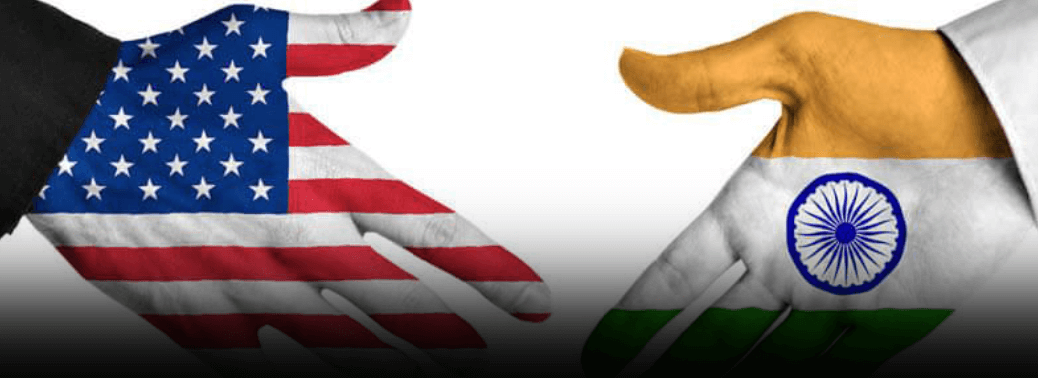
Why in News:
- A true strategic partnership remains elusive between India and the U.S.
Details:
- The U.S.’s decision to not extend Iran sanctions waivers, including the one provided to India, has notable implications for India-
- U.S. relations, given the importance of New
- Delhi’s energy relationship with Tehran.
- It comes on the heels of many other deleterious developments for bilateral ties including the U.S.’s decision to withdraw GSP benefits for Indian exports and the Trump administration’s discontent deepening over India’s policies on e-commerce, intellectual property rights and data localisation.
- the non-security dimension of the relationship has long lagged behind the fast-growing defence side. India will scale up oil imports from other top producers; the GSP withdrawal will have minimal impact on India’s economy; the two capitals are working actively on high levels, most recently through the U.S.-India CEO Forum and the India-U.S. Commercial Dialogue, to ease tensions; and above all the strength of the bilateral relationship can easily withstand all these headaches.
- India-U.S. relations extend well beyond security.
- joint statements have dwelt on the potential for cooperation on initiatives ranging from clean energy to innovation. And despite the problems, bilateral trade in goods and services has increased over the last decade
India-USA: Five Pillars of Strategic Partnership
- Strategic Issues
- Energy and Climate
- Change Science and Technology
- Health and Innovation Education and Development
Why the United States matters to India?
- America remains the critical stabilizing force in Asia through its military and diplomatic power projection and commitments to the region
- India will be better able to protect its national interests in Pakistan and Afghanistan in coordination with the United States.
- The United States has also remained one of the top sources of foreign direct investment in India, bringing important managerial expertise, capital, and technology with it to the dynamic Indian market.
IRAN SAYS IT WILL NOT HONOUR NUCLEAR CURBS
09, May 2019

Why in News
- Iran said it had stopped respecting limits on its nuclear activities agreed under a 2015 deal with major powers
Details:
- The announcement came as Washington stepped up its rhetoric against Tehran, accusing it of planning “imminent” attacks and deploying an aircraft carrier strike group with several nuclear-capable B-52 bombers to the region
- Iran said it was responding to the sweeping unilateral sanctions that Washington has reimposed since it quit the agreement one year ago, which have dealt a severe blow to the Iranian economy. Iran’s Supreme National Security Council said that it no longer considered itself bound by the agreed restrictions on stocks of enriched uranium and heavy water.
What did Iran do over the deal and why?
- It suspended two parts of the deal, known as the Joint Comprehensive Plan of Action (JCPOA), namely the sale of surplus enriched uranium and heavy water. Under the deal, Iran is required to sell its surplus enriched uranium – which can be used in the manufacture of nuclear weapons – abroad, rather than keep it.
Joint Comprehensive Plan of Action (JCPOA)
- The Joint Comprehensive Plan of Action (JCPOA) known commonly as the Iran deal, is an international agreement on the nuclear program of Iran reached in Vienna on 14 July 2015 between Iran, the P5+1 (the five permanent members of the United Nations Security Council—China, France, Russia, United Kingdom, United States—plus Germany),and the European Union.
What is Instex?
- It’s a new payments mechanism set up by the UK, France and Germany to allow businesses to trade with Iran without being subject to sanctions. It is supposed to focus on “legitimate trade” in goods “where the immediate need of the Iranian people is greatest”, for example food, pharmaceutical products and consumer goods not subject to sanctions. Oil, Iran’s main source of foreign exchange, is at the moment not covered and Tehran wants the Europeans to give the system more bite.
- But that could put traders at loggerheads with the US sanctions.
World Diet Plan
17, Jan 2019

Context:
- With the ideal diet, your life would be less sweet but your lifespan would be longer. Cut consumption of sugar and red meat by 50%, and increase the intake of fruits, vegetables, and nuts — that is the top recommendation of a worldwide diet plan according to a special report released on Thursday by the journal Lancet. Such a diet would not only be healthier but also more environment-friendly.
Details:
- The EAT-Lancet Commission, an independent non-profit consisting of 19 scientists and 18 co-authors from 16 countries, was tasked with developing global scientific targets for a healthy diet and sustainable food production.
- The experts on this panel from India included Srinath Reddy of the Public Health Foundation of India and Sunita Narain of the Centre for Science and Environment.
- The Commission recommended that the average adult, whose daily requirement is about 2,500 calories, must strive to source around 800 calories from whole grain (rice, wheat or corn), 204 calories from fruits and vegetables, and not more than 30 calories from red meat (beef, lamb or pork). It also suggested that the ideal diet should have no “added sugar” or “added fat”. Unhealthy diets are the leading cause of ill-health worldwide, and following this healthy diet could avoid approximately 11 million premature deaths a year, the report said.
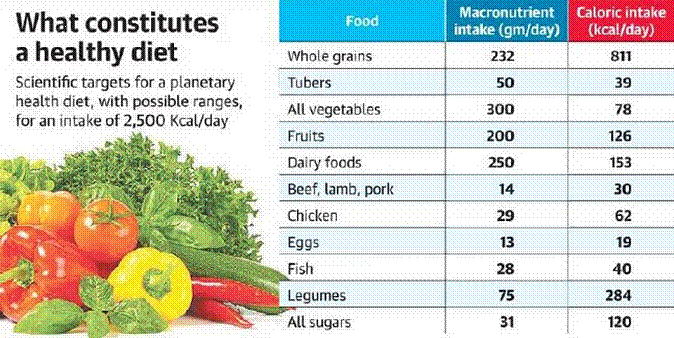
- People in North American countries eat almost 6.5 times the recommended amount of red meat, while those in South Asia eat only half the recommended amount. All countries are eating more starchy vegetables (potatoes and cassava) than recommended, with intakes ranging from between 1.5 times above the recommendation in South Asia to 7.5 times the optimum level in sub-Saharan Africa.
Dramatic change
- “The world’s diets must change dramatically. More than 800 million people have insufficient food, while many more consume an unhealthy diet that contributes to premature death and disease,” said co-lead Commissioner Dr. Walter Willett of Harvard University.
- “To be healthy, diets must have an appropriate calorie intake and consist of a variety of plant-based foods, low amounts of animal-based foods, unsaturated rather than saturated fats, and few refined grains, highly processed foods, and added sugars.”
- The researchers also modelled the effects of a global adoption of such a diet on deaths from diet-related diseases.
- Three models each showed major health benefits, suggesting that the new diet could globally avert 10.9-11.6 million premature deaths a year.
- The report shared a road map to help global populations move towards such a diet by 2050. These include re-orienting the focus of agriculture from large-scale production of a few crops to “a diverse range of nutritious foods from biodiversity-enhancing food production systems”.
TEHRAN Proposes a new Regional Forum for west Asia
10, Jan 2019

Context:
- Iran has proposed a new platform for regional peace building as a diplomatic initiative to address the lingering conflicts and mistrust in the Gulf region.
Details:
- The announcement of Persian Gulf Regional Dialogue Forum is significant as it comes in the wake of continued erosion of the Gulf Cooperation Council, which in the recent years has been divided between the Iranian and the Saudi spheres.
- It is said that admission to such a forum should be based on accepting generally-recognised principles and shared objectives, notably respect for sovereignty, territorial integrity and the political independence of all states
- And the forum should render international boundaries inviolable and use of force impermissible
- The forum could also be used effectively in dealing with threats like terrorism and extremism that has left the countries of the region in a state of continuous state of insecurity
Western Asia:
- Western Asia, West Asia, Southwestern Asia or Southwest Asia is the westernmost subregion of Asia. The concept is in limited use, as it significantly overlaps with the Middle East (or the Near East), the main difference usually being the exclusion of the majority of Egypt (which would be counted as part of North Africa) and the inclusion of the Caucasus.
- Western Asia is located directly south of Eastern The region is surrounded by seven major seas; the Aegean Sea, the Black Sea, the Caspian Sea, the Persian Gulf, the Arabian Sea, the Red Sea, and the Mediterranean Sea.
- To the north, the region is delimited from Europe by the Caucasus Mountains, to the southwest, it is delimited from Africa by the Isthmus of Suez, while to the east, the region adjoins Central Asia and South Asia.
- The Dasht-e Kavir and Dasht-e Lut deserts in eastern Iran naturally delimit the region somewhat from Asia itself. Below are the countries fall under Western Asia
UN Global Counter Terrorism Coordination Compact
12, Dec 2018
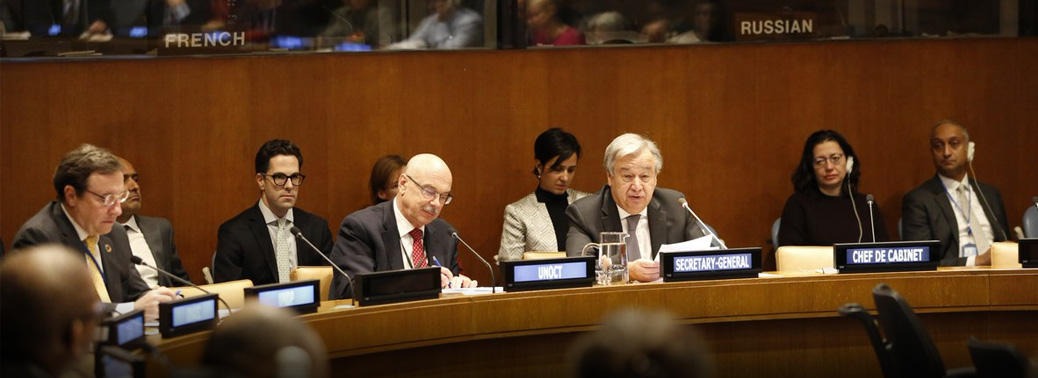
Why in News?
- UN Secretary-General Antonio Guterres has launched a new framework to combat the scourge of international terrorism and coordinate efforts across the peace and security, humanitarian, human rights and sustainable development sectors. Termed the UN Global Counter-Terrorism Coordination Compact, the framework is an agreement between the UN chief, 36 organizational entities, the International Criminal Police Organisation (INTERPOL) and the World Customs Organisation, to better serve the needs of Member States when it comes to tackling the scourge of international terrorism.
Objectives of the agreement:
- To bring the UN agencies together to combat terrorism with common approach and find the ways to improve the strategies to support member states. To protect the people from violent extremist groups and hate speeches. To adopt the strategies that do not compromise the international human rights standards and rule of law. To monitor use of technology which is the main source of reaching people globally and manipulate them. To devise the policies that will protect communities and their religious belief.
Need of the Framework:
- The Global terrorism index released by Institute for Economic and Peace showed that there is a decrease in deaths due to terrorism, but the impacts of terrorism are still spreading all over the world.
- United Nation is actively working to bring peace and cooperation among member states. To combat counter terrorism UN created UN counter-terrorism implementation task force in 2005.
The task force consists of 38 international entities.
- The goal of Counter terrorism Implementation task force was to organize working groups and the project related to counter terrorism.
- Finally, on 23rd February 2018, a new agreement was signed to create more integrated working approach between the agencies and coordinate them for counter terrorism and prevention of violent extremism. UN Global counter terrorism coordination compact replaced counter-Terrorism Implementation Task Force.
Kathmandu Declaration
11, Sep 2018
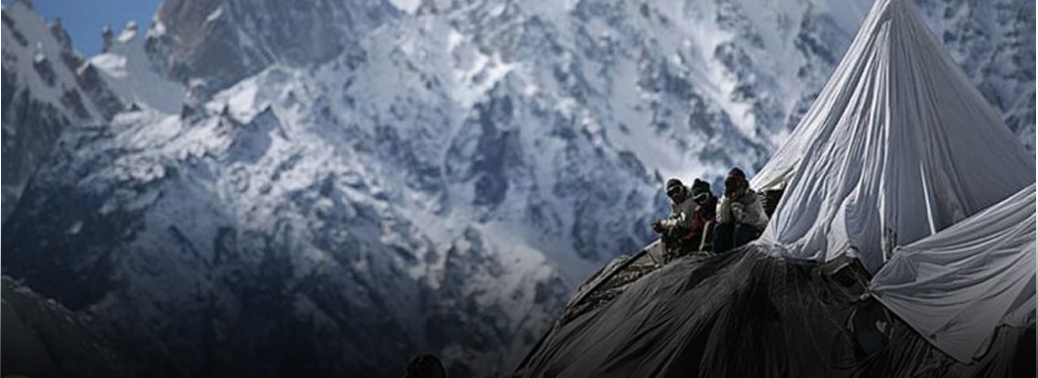
- The fourth BIMSTEC summit concluded in Kathmandu with the leaders reaffirming their strong commitment to make BIMSTEC.
- A dynamic, effective and result-oriented regional organization.
Kathmandu Declaration:
- Reiterating strong commitment to combat terrorism the leaders called upon all countries to devise a comprehensive approach to prevent financing of terrorists and terrorist actions from territories under their control, blocking recruitment and cross-border movement of terrorists, countering adicalization, countering misuse of internet for purposes of terrorism and dismantling terrorist safe havens.
- The leaders also committed themselves for promoting a peaceful, prosperous and sustainable Bay of Bengal region through meaningful cooperation and deeper integration.
- The leaders of all seven-member states including prime minister Narendra Modi underscored the importance of robust institutional arrangements to effectively steer the process of regional cooperation under BIMSTEC.
- The Kathmandu declaration underlined the importance of multidimensional connectivity as a key enabler for economic integration and shared prosperity of the region.
- The fight against terrorism should target not only terrorists, terror organisations and networks but also identify and hold accountable states and non-state entities that encourage, support or finance terrorism, provide sanctuaries to terrorists and terror groups and falsely extol their virtues
- The declaration acknowledged the importance of trade and investment as one of the major contributing factors for fostering economic and social development in the region.
- The summit agreed to expedite the conclusion of BIMSTEC convention on mutual legal assistance in criminal matters and called upon the member states for its early ratification.
- The summit agreed to establish seamless multi-modal transportation linkages and smooth, synchronised and simplified transit facilities through the development, expansion and modernisation of highways, railways, waterways, sea routes and airways in the region.
Chairmanship of BIMSTEC:
- The Chairmanship of the Bay of Bengal Initiative for Multi-Sectoral Technical and Economic Cooperation (BIMSTEC) rotates among the Member States.
- The Chairmanship of the BIMSTEC was handed over to Sri Lankan President Maithripala Sirisena by Nepal’s Prime Minister Sharma Oli.
- The 5th BIMSTEC Summit will be held in Sri Lanka.
Tapi pipe line
04, Aug 2018
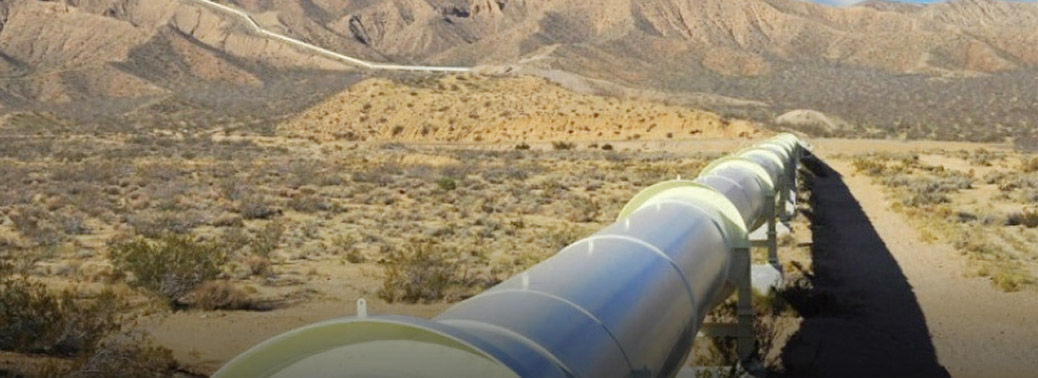
Why in news?
- India has sought renegotiation of the natural gas price as it is to source through a proposed $10 billion Turkmenistan-Afghanistan-Pakistan-India (TAPI) pipeline due to slump in global energy markets.
Pricing of natural gas:
The pricing of natural gas depends on:
- The weighted average of prices at three major gas trading points – the hub price at Henry Hub in the United States, the price at the National Balancing Point of the UK and the netback price at sources of supply for Japan.
- The prices will be reviewed every quarter, the government said, moving away from the monthly reviews suggested by the Rangarajan committee to reduce volatility and make it easier for investment decisions.
Why India seeks revision in price of gas :
- The four nations to the pipeline projects had in 2013 signed a gas sale purchase agreement (GSPA) that benchmarked the price of natural gas that Turkmenistan is to export at 55 percent of the prevailing crude oil price.
- This translates into a price of about $7.5 per million British thermal unit (mmBtu) at current oil prices at the Turkmen border.
- Added to this would be transit fee and transportation charge which would jack up the rates to over $10.5 per mmBtu at the at the Indian border.
- For a consumer, the price would be around $13 per mmBtu after adding local taxes and transportation charges.
- This rate in the present global energy scenario is unacceptable. And so taking into cognizance of the current gas market, India has proposed for re-negotiation of GSPA.
- The price of Turkmen gas is more than double of the $3.6 per mmBtu rate paid for post natural gas producers in India.
TAPI Pipeline
- The Turkmenistan–Afghanistan–Pakistan–India Pipeline(TAPI), also known as Trans-Afghanistan Pipeline, is a natural gas pipeline being developed by the Galkynysh – TAPI Pipeline Company Limited with participation of the Asian Development Bank.
- The pipeline will transport natural gas from the Galkynysh Gas Field in Turkmenistan through Afghanistan into Pakistan and then to India.
- Construction on the project started in Turkmenistan on December 13th, 2015. The pipeline is expected to be operational by 2019.
India’s aid to SAARC nations falls
03, Aug 2018
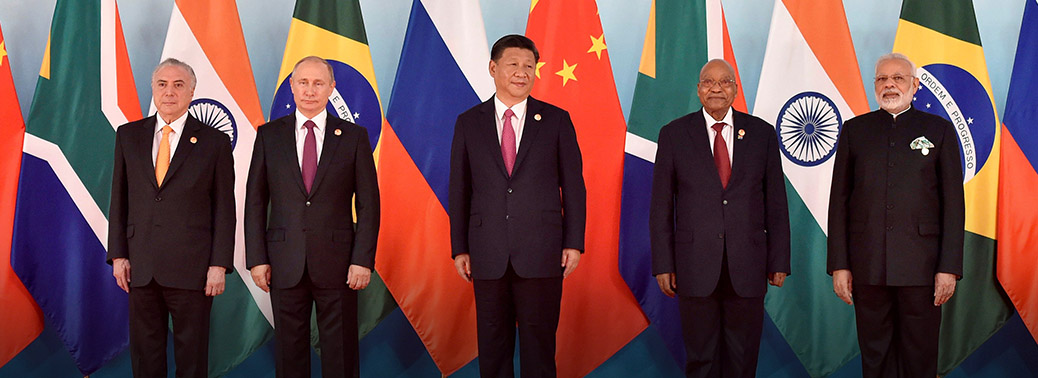
India’s financial assistance to SAARC neighbours declined considerably in the past five years.
About:
- Grant Assistance (GA) actually fell from ₹5,928.6 crore for 2013-14 to ₹3,483.6 crore for 2017-18 for Afghanistan, Bangladesh, Bhutan, the Maldives, Nepal and Sri Lanka combined.
- Significantly, the drop for most SAARC countries was most steep in 2014, the one exception was the Maldives, to which Indian assistance has been consistently increasing year on year since 2013, despite the dip in bilateral ties.
Reasons:
- The financial assistance is a “cyclical” nature, the GA figures for 2018-19 were expected to be higher for each of the countries involved. The GA for Nepal in 2017-18 was ₹26 crore, for instance, and was expected to rise this year to ₹650 crore.
- These trends are mainly related to project cycles, for instances in Afghanistan, our major projects the Salma dam and the Afghanistan Parliament were done and handed over.
- In Nepal the assistance required for major hydroelectric power plants like Punatsanghchu 1 and 2 and Mangdechu has been disbursed 75-90%. So, there is a natural tapering until we undertake the next major project.
- India has shifted to work on small development projects (SDPs) rather than the ambitious highways, dams and big building projects that were started in 2008-09.
- In Sri Lanka, the decline was explained by delays in land acquisition for 15,000 homes to be built by India in the plantation areas.
- India emerged as a benevolent donor for her immediate neighbours with total foreign assistance, including technical and economic cooperation, and loans to foreign governments, increasing dramatically over the past years.
- Out of India’s total foreign aid budget in 2015-16, about 74.6 percent was pledged for Bhutan, followed by 9.1 percent for Afghanistan, 6.6 percent for Sri Lanka, 4 percent for Nepal and 2.8 percent each for Bangladesh and Maldives.
- It is noteworthy that aid by India to smaller nations in the neighbourhood goes beyond altruism
- The relative shares of these economies in the aid outlay indicate their reliance on India on the one hand, and India’s strategic and economic interests in them on the other.
Economic Interest:
- Bhutan holds greater significance for India as it is an important source of India’s imports of electricity, base minerals, cement, chemicals and wood products. Particularly, hydropower electricity is central to cooperation between India and Bhutan.
- A major part of India’s aid to Bhutan during 2016-17 approximately 78 percent is budgeted for construction of hydropower project. Developing large hydropower projects in Bhutan is in India’s economic interests as it gets easy access to cheap electricity, especially during times of power shortages. With escalating demand and competition over energy resources in the world, India is undertaking numerous projects in its neighbourhood for securing reliable and cheap sources of energy supplies.
- India has endeavoured to strengthen relations with Afghanistan, which provides an easy route to Central Asia the hub of energy, minerals and gas resources and access to markets in the Middle East and Europe.
- India’s foreign aid activities are mainly focused on reconstruction and development of Afghanistan, which would provide security and economic benefits to India in the longer term.
- These are typically ‘aid for trade’ projects as they aim at developing these countries’ trade capacity and infrastructure (roads, sea ports and airports), which significantly alters the time and costs of trading with them. Due to limited transport arrangements connecting countries in South Asia, trade costs (or transport costs) are typically high for traders in this region.
- India intends to reduce the cost of trading by directing aid towards improving regional transport connectivity, especially between north-eastern states in India and landlocked countries like Bangladesh, Bhutan and Nepal.
- Enhancing connectivity among countries in South Asia fosters regional growth and prosperity.
Strategic and Security Interests:
- China gaining access to these countries, it would open an easy route for it to eastern and north-eastern states in India. This raises a security concern for India.
- In response to this threat and to ensure regional connectivity, India is engaging with South Asian countries on a sub-regional level.
- It has inked motor vehicle agreements with Bangladesh, Bhutan and Nepal, which would provide an easy and seamless movement of cargo, people and vehicles among them.
- In order to check China’s growing footprints in South Asia, India has expedited its own plans to establish links with Chabahar port in Iran via Afghanistan.
Significance of India’s Aid:
- Indian aid programs does not interfere with recipient’s domestic policies and respect their sovereignty.
- These programs thus are incompatible to western aid strategy, as India’s aid will have a direct impact on development of the recipient via targeted investment in sectors like energy, manufacturing, connectivity, trade infrastructure etc.
- Foreign assistance from India however does not promote a culture of pauperization (absolute dependence) in the recipient country as advocated by traditional foreign aid theorists.
- India’s aid strategy in South Asia rests on tenets of common development, equality and mutual benefit.
- In addition, Indian aid projects provide autonomy to the recipients as these are based on a demand-driven approach wherein aid-receiving countries identify priority sectors for investment and development cooperation.
- Sectors are predominantly energy and transport, which are pivotal to development of the entire South Asian region.
- India does not follow ‘one size fits all’ approach while providing aid to South Asian economies. It formulates an aid package specific to interests of the recipient country.
- This India’s aid programs in South Asia that are based on common development goals and are guided by recipients’ needs and demand.
AMCDRR
30, Jul 2018

- Asian Ministerial Conference on Disaster Risk Reduction(AMCDRR) 2108 held in Ulaanbaatar, Mongolia
- The conference was organised seventh time in collaboration with the United Nations Office for Disaster Risk Reduction
- Participants include delegates from Asian and Pacific countries, governmental and inter-governmental organisations, United Nations and international organisations, and stakeholder groups including National Societies of Red Cross and Red Crescent Organisations, Children and Youth, Civil Society and Community Practitioners, Women, Parliamentarians, Local Authorities, Science and Technology and Academia, Private Sector, Media, Disability.
- The theme of the AMCDRR 2018: ‘Preventing Disaster Risk: Protecting Sustainable Development’ reflects the essence of the Sendai Framework
- The conference will represent a key milestone for reflection on three years into the implementation of the Sendai Framework for Disaster Risk Reduction 2015-2030. Specifically, the conference will enable governments and stakeholders to review progress made against the commitments at the AMCDRR 2016, i.e. the New Delhi Declaration
AMCDRR
- After the Indian Ocean tsunami came in 2004, India was among the five countries that were very badly impacted and took prime initiative to endorse for creating new laws for disaster risk management.
- This AMCDRR created in collaboration with UNSIDR(United Nations Office for Disaster Risk Reduction)
- Biennial conference
- In India it was held in 2007,2016.
- 2016 conference led to DELHI DECELRATION on disaster management
Objective
- Transforming the commitments made in Sendai Framework by the governments into visible action.
- Deciding the direction for implementation and monitoring of the Sendai Framework






